

So You Want to Plan a Cycling Vacation?
There are more cyclists on the road than ever before. here’s what you need to know before you roll..
- Copy Link copied

The Biking Boom
As we cycled through a year of pandemic living, one silver lining emerged: the freedom two wheels provided..
Sure, we might’ve been stuck in a world without travel, but a bike could offer fresh air, social distancing, and much-needed endorphins to ward off the pandemic blues (some of them, anyway). Suddenly, it seemed, everyone was buying a bike. Bike sales increased 200 percent in just the first few months of the pandemic, with “anything under $600 . . . just flying out,” Outside reported in January 2021. (Even more than a year after the first shelter-in-place orders were initiated, bikes, and bike parts, are still in short supply.) As we begin to emerge from our collective cocoons, interest in taking those bikes on longer journeys is also spiking—outfitters we interviewed are reporting record increases in cycling trips (and hiking trips, natch), especially U.S.- based routes.
This boom comes on the heels of more than three decades of investment in rails-to-trails throughout the United States, which means there are more possibilities than ever for multiday trips, whether you want to tackle a short overnight or a months-long, cross-country trail. Wondering where to start? You don’t have to be a spandex-clad, Tour de France type to enjoy the freedom of the open road. Here, everything to know about planning a cycling trip, whether you want to plan your own or turn over the reins, whether you’re a first-timer who wants to crash in cushy hotels or an experienced bike-packer looking for a new challenge.
How to Prep

Photo by David Marcu/Unsplash
First step? Just get out there.
It’s easy to fall into a rabbit hole of route planning and gear buying when it comes to bike touring. One thing all the experts agree on? Don’t overthink it.
You want to be adequately prepared—see below—and have a general sense of what you might encounter along the way, but “just taking that first multiday trip or even really long one-day ride will open up so much opportunity,” says Ted King , a retired pro cyclist. “It is a fun adventure just waiting to happen and you’re going to learn so quickly. Just start doing it.”
How do I decide on the trip and route that are right for me?
First, decide if you want to plan your own trip or if you’d like to join a guided trip. (If you’re interested in the latter, check out our guide to the best cycling outfitters .) If you want to go your own way, consider your fitness and experience levels, as well as the season and amount of time you want to devote to the trip.
Never done a multiday ride before? Start super small. Book a hotel or an Airbnb in a destination 10 to 20 miles away, pack a small bag, and cycle to your overnight .
Interested in camping—and therefore carrying the necessary gear (also known also bike-packing)? Or would you prefer to pack a little lighter and stay in hotels, inns, and Airbnbs along the way? If you’re not a camper, or don’t want to deal with carrying so much gear, choose a route that passes through more civilization. The Eastern Seaboard is a great place for this—especially Maine and Vermont—given the density, you can’t throw a bike shoe without hitting a cute little town with all the amenities you need. Socially inclined cyclists can also check out Warmshowers , a community of touring cyclists who act as hosts to other touring cyclists.

Rest days are crucial when bike-touring.
Photo by Sunrise Hunter/Shutterstock
How many miles a day should I ride?
Daily mileage depends on many factors, including your fitness and experience levels, the terrain (are there mad hills, or is it relatively flat?), and how much weight you’re carrying. If you’re new to bike touring, even if you’re a fairly experienced cyclist, consider trips that average no more than 30 to 40 miles per day so as to preserve your most critical resource: your body.
And don’t forget to take rest days! This is vacation, after all. In addition to giving your body—especially your legs—a break, rest days offer time to explore your destination, rather than just pedal past it. Park yourself in a campsite or hotel for a day or two and explore the city or town or take shorter daily rides.
“Distance is not as important as the journey,” says Analise Cleopatra, a filmmaker and relatively new mountain biker who made a documentary of her first bike-packing trip in 2019. “You don’t need to compete—just make sure you’re with people who are on the same wavelength and, you know, explore!”
How do I get my bike there?
Getting wheels where they need to go boils down to three options.
RENTING A BIKE This works well for first-timers, those who aren’t picky about their bikes, and/or those who choose a route in a cycling center such as Colorado or Northern California where there are high-end bike shops with decent rentals. It’s easier, too (no need to break down, ship, and rebuild your bike) though it can be more expensive. Rates vary, but a road bike rental can run you anywhere from $300 to $600 (or more) for a week in popular cycling states like California, Colorado, and Vermont.
SHIPPING YOUR BIKE This is the most popular option, currently, among cyclists we interviewed. BikeFlights has become the go-to company for all bikes, including e-bikes. Rates vary widely based on box size, weight, distance, and shipping speed, but if you shipped your bike from San Francisco to New York City, for example, in one of BikeFlights’ medium boxes, which fit most road and gravel bikes, you’d likely pay $83, excluding protection. (The company recommends buying protection to cover the market value of your bike.) You can also ship through Overnight Bikes , ShipBikes , as well as directly through FedEx and UPS, though you will likely pay more booking directly through the latter two.
The main challenge? You need to plan for this as it can take up to six days to ship a bike cross-country , though BikeFlights recommends building in extra time in the COVID era. Plus, you need to have somewhere to ship it. The pros recommend shipping your wheels to a bike shop in your destination (make sure you call to let them know in advance) and paying them to build your bike for you. Expect to pay at least $50 for this service. You can also take your wheels to a local bike shop and have them disassemble and pack it—BikeFlights can pick up directly from the shop.
FLYING WITH YOUR BIKE Alaska and Delta are among the most bike-friendly airlines. Alaska waives the oversize baggage fee and allows bikes to be checked as standard baggage . Delta also counts bikes as standard baggage . Southwest and United, however, charge higher fees: Southwest charges a bike fee of $75 each way , while JetBlue charges $100 each way, and United charges a flat bike fee of $150 each way for domestic flights. Keep in mind that e-bikes, which are powered by lithium batteries, are prohibited on all airlines.

Photo by Coen van de Broek/Unsplash
How should I train?
It depends on the length and nature of your trip. If you’re doing a short trip (less than three days) through terrain that’s not hugely demanding, there’s no need to map out an arduous training plan, pretrip. In fact, if you’re cycling regularly—at least two or three days a week—and can ride for an hour or more, you’re ready for a low-mileage overnight trip. In addition to building endurance, the most important thing to do is “condition” your butt to prevent saddle sore.
If you’re ramping up for a multiweek or multimonth trip that doesn’t take place on extreme terrain—and have been riding your bike regularly—you can use your trip to train, says Dan Meyer, deputy editor for Adventure Cyclist magazine. For example, ride 10 to 20 miles the first day and see how you feel. Ride 30 miles the next day and 35 to 40 the following day. “That requires some planning ahead of time to make sure that you have facilities and campsites and hotels that are at those distances along the way, ” Meyer says, “but it helps you get in shape more, instead of trying to go 80 miles on the first day and wearing yourself out.” (If you’re tackling an intense trail or just want more structure, Adventure Cycling has put together a 12-week training program .)
The more critical part of preparation is to understand how your bike handles when you’re carrying gear.
“A lot of people get to the start of their big route—this bike trip they’ve been dreaming of doing for years and they start pedaling and they’re like, ‘Holy crap, I’ve never ridden my bike with all this weight on it before,’ ” Meyer says.
He recommends practicing packing your bike , to make sure you’re packing efficiently, that the weight is balanced, and you can get to essential things (maps, food, water, etc.) quickly. Once you’ve done that, “take it out for a quick little 5- to 10-mile ride and just get used to how it handles, because it will handle quite a bit differently,” he says.
Essential Gear

Photo by Skylines/Shutterstock
Bike camping gear
Big Agnes Tiger Wall Bikepacking Tent The Big Agnes Tiger Wall tent is designed for bike-packing. Weighing in at just under three pounds, it’s super lightweight yet still provides protection and warmth when you’re out in the elements. The tent also includes tent poles that are shorter (12 inches) than normal, which makes them easier to attach to your handlebars, frame, or elsewhere on your bike. The stuff sack includes straps that are technically designed to attach to your handlebar bag, though using the recommended setup can be a little cramped on narrower, designed-for-women handlebars—most women should be able to move the poles to their frame.
It also includes loops to hang wet clothes on the outer rainfly, a generous vestibule area, and lots of pockets so you don’t have to sleep on top of your bike bags. Lastly, Big Agnes uses an ecofriendly dye process to reduce the amount of water that goes into making these tents.
>>>Buy now: $450 (two people), backcountry.com ; $499 (three people), backcountry.com
Snow Peak LiteMax Stove You have to pack light while bike-packing, which is why the compact, 1.9 ounce, Snow Peak LiteMax Stove is one of the best options for your bike-camping kitchen kit. It’s tiny but mighty and will last for years. Pair with an MSR Alpine StowAway pot (the stove fits inside even the smallest pot), a good knife, fuel, and a spork to complete your kit.
>>>Buy now: $60, amazon.com

Cotopaxi’s Bataan is an affordable fanny pack option.
Photo courtesy of Cotopaxi
Bags and carrying
Outer Shell bags The bike-obsessed team behind Outer Shell makes a variety of high-quality bike bags—handmade in San Francisco—for all types of cycling adventures, whether you’re roughing it on a backcountry gravel ride or trying to cart a bottle of pinot noir back to your hotel room after a day of riding in Napa. Almost all of its bags are designed to expand for optimal versatility and are either waterproof or water resistant.
For shorter rides, or for those who are embarking on a supported ride and don’t need to carry a lot, the Stem Caddy ($60) is a great choice. It can comfortably fit your phone, wallet, and all your essentials, or an entire bottle of wine. For longer rides or if you just want more space, Outer Shell’s seatpacks ($145–$150) can fit just about everything you’d need for an overnight. They’re also a nice alternative to panniers, since they won’t create an imbalance and can fit on any bike, no bike rack required.
>>>Buy now: Stem caddy, ($60 outershell.com ); Seatpacks ($145-$150, outershell.com )
Fanny/hip bag Skip the backpack (it’ll make you sweat like crazy) and, instead, use a fanny/hip bag while you ride (all the cool kids are doing it). Outer Shell has an excellent waterproof and expandable one, but I also like the compact Axis bag by Mission Workshop ($130, missionworkshop.com ), which was made with cyclists in mind. Cotopaxi’s Bataan ($30, cotopaxi.com ) is another, more affordable option, packed with organizational features and made from fabric remnants.
>>>Buy now: Cotopaxi Battan, ($30 cotopaxi.com ); Axis bag ($130, missionworkshop.com )

Photo courtesy of Velocio
Bike shorts by Velocio Padded bike shorts are essential on any long bike ride, but bike bibs—which are essentially padded, bike short “overalls” that don’t cut into your waist the way regular shorts would—are extra comfortable. There are tons of great brands in the world of cycling clothing, but Velocio is an AFAR favorite. Not only does it excel at making high-quality bike clothes with simple-yet-stylish designs, but its bike bibs also come with one crucial, lady-friendly feature: Its patent- pending FlyFree design means their bike bibs are stretchy enough to pull down for a pee-break, without having to remove your jersey, helmet, glasses . . . basically getting naked.
>>>Buy now: Signature Bike Short, $229, velocio.cc
Other great brands to check out for bike shorts, jerseys, and jackets include Machines for Freedom (ladies only), Castelli , and Rapha .
A bike computer is an essential part of a bike-touring.

A bike computer is an essential part of a bike-touring kit.
Photo by fotoliza/Shutterstock
Tools and other bike essentials
Paceline Products Chamois Butt’r Her’ There’s no way around it: If you’re spending several long days in the saddle, you need to take care of your butt. A good bike seat and shorts are the foundation of butt-on-bike-comfort, but consider packing some chamois cream, which soothes chaffed or irritated skin, as well. We like Butt’r Her’, a non-greasy formula made from natural ingredients like aloe vera and shea butter and designed and pH-balanced with female cyclists in mind.
>>>Buy now: $18, rei.com
Wahoo Elemnt Bolt bike computer One word: reliable. The Wahoo Elemnt Bolt is GPS-powered and can display maps for directions along with helpful data like the gradient of the road and weather and wind conditions. It has all the features to connect to your heart monitor and power meter, and it can sync with tracking apps like Strava so you can monitor your performance as well.
>>>Buy now: $230, backcountry.com
Bike tools (and skills) You’ll want to carry some basic tools and know how to change a tire and how to adjust your brakes. Park Tool makes a great hex wrench set and offers detailed videos on everything from how to change a tire to how to adjust your shifting.
>>>Buy now: Park hex wrench set, $24, backcountry.com
Bike pump When it comes to portable bike pumps, cyclists were once limited to CO2 or hand pumps. A CO2 pump is small, fast, and compact, but single use. (It uses a cartridge attached to the head of a small nozzle to quickly inflate a tire.) Though reliable and reusable, hand pumps can be a 15-minute arm workout as your friends wait impatiently for you, and they’re not as compact. But what about a hand pump that can also use a CO2 cartridge, offering both speed and reliability? Well, it’s 2021 and that now exists with a few brands.
>>>Buy now: Silca Tattico Mini Pump ($65, competitivecyclist.com ); PDW Ninja pump ($35, ridepdw.com )
Bike lights Although you may not be doing much riding after dark, lights can help you see and be seen—whether it’s on a foggy morning or helping drivers spot you as you move in and out of shadows. For lights, you want 500+ lumens for front and 50–100 lumens in the rear. Different blink patterns are a plus as well to help drivers see you.
>>>Buy now: Vis 360 Pro Helmet light by Light & Motion ($130, lightandmotion.com , rei.com ); Vis 1000 Trooper handlebar light by Light & Motion ($90, lightandmotion.com , amazon.com )
Snacks! A lot of new cyclists forget: You have to eat to avoid “bonking,” (the sudden loss of energy that can occur following a long ride). Pack an RX bar or two, or even a plain ol’ banana, to keep your energy up for several hours on the road.
Products we write about are independently vetted and recommended by our editors. AFAR may earn a commission if you buy through our links, which helps support our independent publication.
U.S. Routes

Great Divide photo by Jacinta Creten/Adventure Cycling Association
There are thousands upon thousands of bike trails in the United States with more, it seems, being added each year.
One big route in the works: The Great American Rail-Trail , which when completed, will stretch 3,700 miles from coast to coast. This list is by no means extensive—but it is a place to begin. For a look at more U.S. long-distance routes, check out the interactive map from Adventure Cycling Association, the 45-year-old organization responsible for some of the country’s greatest routes.
The Olympic Discovery Trail , Washington 130 miles
Washington’s Olympic Peninsula is the stuff of legends: Just west of Seattle, the stretch of land (home to Olympic National Park) offers quaint seaside towns, ethereal rain forest, waterfalls, and at the far western edge, the wild Pacific Ocean. On the 130-mile Olympic Discovery Trail—half of which is a dedicated multiuse path—cyclists can see, smell, and hear it all. The route begins in Port Townsend at the northeastern tip of the peninsula and ends at the coastal town of La Push. Camp or stay in lodges and hotels along the way.
Natchez Trace Parkway , Mississippi and Tennessee 444 miles
This National Park Service–designated trail stretches from Nashville, Tennessee, to Natchez, Mississippi, roughly tracing a 10,000-year-old route originally used by Native Americans ( the path once connected the Chickasaw, Choctaw, and Natchez tribes ). Travelers will pass through forests and farmland, witnessing creeks and numerous historical markers along the way. While cyclists do share the road with cars, speeds are low and traffic is relatively light. The route is great for cyclists looking for relatively flat terrain and cozy inns, but there are also more than a dozen campgrounds along the route, for those who prefer the freedom of a tent.
The Underground Railroad , Alabama to Ontario, Canada 1,997 miles
Beginning in Mobile, Alabama, and ending in Owen Sound, Ontario, the Underground Railroad follows the eponymous route used by freedom seekers from the late 18th century until the Civil War. Cyclists can tackle sections of the route or the entire length . The route traces rivers, winds through sleepy towns, and passes by numerous historical markers and sites that honor Black Americans’ struggles for freedom.
The Great Divide , Canada to New Mexico 2,696 miles
Don’t be alarmed by the sheer mileage of this route, which traces the Continental Divide and takes place primarily on dirt or gravel roads and trails—a playground for mountain bikers. Most cyclists tackle sections of the Great Divide, with the 700-mile Montana section among the most popular. Expect solitude, wildlife, and epic runs through pristine forest. Although the trail does pass through small towns, it’s best for those who are interested in camping for at least part of the route.
The East Coast Greenway , Maine to Florida 3,000 miles
Once the entire 3,000-mile route is completed, you’ll be able to hike or bike on protected paths through 15 states and 450 cities and towns, which is the entire point: to connect the nation’s “most populated corridor.” Launched by the nonprofit East Coast Greenway Alliance in 1991, the corridor is 35 percent complete , with 1,000 miles of protected paths between Maine and Florida. The remainder of the trail is on-road (so yes, you could complete the entire route now ). Some campgrounds are available, but the route is best for those who want to crash in hotels, motels, or in homes via Warmshowers.
The Southern Tier , California to Florida 3,022 miles
Tour the entirety of the southern section of the United States—passing through such states as Arizona, Texas, Louisiana, and Florida—or just tackle a section of the fascinating route. The Southern Tier begins in San Diego, winding through desert and the Algodones Dunes Wilderness Area, and ends in the 400-year-old town of St. Augustine, Florida. Ideal for those who prefer motels and hotels to camping.
Guided Trips

Photos courtesy of Backroads and Lamar Sellers/Shutterstock
For those who want the thrill of the open road without the headache of planning their own trip—and hauling their own gear—here are some of AFAR’s favorite cycling outfitters.
Many of these companies now offer e-bikes, making cycling tours more accessible
BACKROADS Berkeley-based Backroads has been leading fantastic small-group hiking, cycling, and other adventure-oriented tours since 1979. Cycling trips take place on custom-built titanium bikes, lodging ranges from small luxury ships (imagine cycling beside and sailing down the Danube ) to five-star hotels, and the food is as finely crafted as the routes. This year, watch for new U.S.-based trips like a five-day cycling tour of the Hudson River Valley, as well as weekend or long weekend getaways in Aspen’s glacial valleys and Texas Hill Country .
ADVENTURE CYCLING ASSOCIATION Long known for its stellar long-distance routes, the nonprofit Adventure Cycling Association , which began in 1976, is responsible for mapping out some of the country’s quintessential bike routes, including the 4,218-mile TransAmerica Trail . During the pandemic, the organization launched its Short Trips Initiative , a series of shorter guided trips in eight metropolitan areas, including Boston, San Francisco, Seattle, and Atlanta. Adventure Cycling expects to release route maps for self-guided versions of the tours in summer 2021.
VBT BICYCLING VACATIONS A two-time AFAR Travelers’ Awards winner , Vermont-based VBT Bicycling Vacations has crafted cycling trips for more than 50 years that include accommodations, luggage transfer, and most meals. It also offers self-guided trips. Pick from one of many New England–based tours or VBT’s national park tours, including a six-day Grand Teton and Yellowstone route .
WOMANTOURS Run by women and geared toward women, WomanTours has been leading cycling trips since 1995. Accommodations focus on smaller inns, bed-and-breakfasts, and in national parks, cabins and lodges. New U.S. routes include an eight-day tour of Alaska’s Inside Passage and a six-day tour of Oregon’s Roses, Rivers, and Rail Trails . Also new for 2021: a 25-day ride along section three (Kansas to Kentucky) of the cross-county TransAmerica route.
DUVINE With its focus on luxury and tapping into the local flavor of a destination, DuVine takes travelers into the heart of a place. The company’s trips range from those geared to avid cyclists looking for a new adventure to family-friendly to rides tailored to all ages. And, like many other outfitters, it offers several new domestic adventures, including a five-day art- and food-focused cycling tour of Santa Fe and Taos .
REI ADVENTURES Another AFAR Travelers’ Awards winner , REI Adventures recently discontinued its international trips to focus on building U.S.-based itineraries. No surprise, then, that the company will offer a bevy of national park trips with varied activities: rafting, kayaking, hiking, and yes, cycling. Cyclists, check out the new Joshua Tree weekend trip or a seven-day tour of Moab, Arches, and Grand Junction .
Notes From the Road
A little inspiration to hit the road, from those who have been there..
We spoke to variety of cyclists—from a relative newbie to people who make their living on two wheels—to share the wonders of exploring the world via your own power.

Photos by Alisa Geiser
Analise Cleopatra on the thrill of her first-ever bike-packing trip
“I’ve never done anything like that—I’d never even camped before that trip [along the Three Sisters, Three Rivers route in Oregon]. Just being out in the woods and open . . . you’re definitely at the mercy of the elements. But being there with Dej’uanae [Toliver], who I had known for a while, and Brooklyn [Bell, a pro mountain biker] who I had just met, definitely made a difference. I was anxious about ‘completing’ the ride, which is not something that I felt like I needed to do, but it felt like to some people the value of the ride was how far you could go. Later, I realized I’m not this person, I just want to bike and see these waterfalls and paint pictures and get to know these girls , you know? There’s so much elitism in the sport, but I think there’s definitely space for people who just want to explore and yes, challenge and push our bodies, but the point is not the pain.
“The terrain was very, very diverse the first couple of days. In the beginning, where we started near Caldera [Springs], it was very redwood-y with mulchy ground, but once we went past Suttle Lodge , it got really arid and there were a lot of dead trees. And then it got really lush around Big Lake. . . . Then it got very, very sandy. Once we got through the desert-like part, once we got to the Mackenzie River Trail it was so beautiful, just riverside the whole time. There were so many waterfalls. We [followed the Mackenzie River Trail] until we got to Oakridge and then there was a lot of climbing. That felt more hardcore: The last couple of days it was very rainy so it was pretty wet and muddy, which was fine—it was just a little cold and a little scary going downhill.
“[I have so much] gratitude for the opportunity to enter this world, because people don’t knowwhat they are missing out on. Hopefully the film inspires people who, like me, never would have gone camping by themselves. Find a buddy to go with and enter this world because it’s incredibly nourishing and healing just to be able to go out in nature to learn what your body is capable of and see the stars in their full capacity.”
Analise Cleopatra is a Florida-based filmmaker who made a documentary, Pedal Through, of her first-ever bike-packing trip in 2019 to inspire other newcomers to pick up a bike. Her next trip? The backroads of Georgia.

Photo by Mike Dicken/Adventure Cycling Association
Adventure Cycling Association’s Dan Meyer on the wildness of the Great Divide
“I’ve been dying to ride the entire Great Divide route for a while now, and I still hope to do it soon. A couple of years ago, I rode a [Montana] section of the Great Divide from Whitefish to Missoula. I did it by myself—it was a quick three-day thing. My now-wife and I had done a weekend loop north of Whitefish, and then she had to get back to work. She left me in Whitefish and I just rode myself back to Missoula. It was everything I was hoping for. It was gorgeous, it was quiet, there was nobody around. It’s just such beautiful terrain up there.
“You ride through a lot of dense forest on these rocky dirt roads—motorized vehicles are allowed but you don’t really see them for the most part. It’s just you spinning along, catching glimpses of wildlife. You get that nice, piney, fresh mountain air, you see a lot of alpine lakes and snow-covered peaks. I was going southbound and I did run into a few people riding northbound, but it was less than a handful. It’s the route for people who want to experience solitude in nature. There are other routes you can do where you’ll get to meet a lot of new people and have a lot of social interaction, but the Great Divide route, for the most part, is not going to be like that. It does pass through small towns and you’ll get to meet people in grocery stores and markets and campgrounds, but when you’re out on the road, it’s probably going to be just you, which I really enjoyed.”
Utah-based Dan Meyer, an avid mountain biker, is deputy editor of Adventure Cyclist magazine , published nine times a year as part of the nonprofit Adventure Cycling Association.

Photos by Rolf_52/Shutterstock and courtesy of Pete Stetina
Pro cyclist Pete Stetina on the beauty of Sonoma County’s endless backroads
“Sonoma County has a pretty storied cycling history. This is a place that a lot of the pro teams would have their early season camps in the earlier days. It’s unique because there are so many little backroads that twist and turn and snake—for every main artery that a lot of people drive to commute, there are four or five alternative options.
“As a pro, when I am here training, preparing for the world’s biggest races, I can pick and choose any direction pretty much and always keep it fresh. There are hundreds of thousands of possibilities. I can hit those rolling pastureland Petaluma hills toward the south and hit the coast. In West County you’re talking Jurassic Park–size redwood trees and ferns and just deep woods, moist redwood forest groves and then [you’ll reach] the coast. Up north, you even start to get into Lake County and that’s more like a dry alpine feeling, almost a Colorado feeling, with a lot more pine trees. Then you have all the vineyards and you have a whole big mountain range called the Mayacamas that borders Sonoma and Napa County [and it has] a bunch of huge climbs.
“If you are an advanced enough rider, one quintessential rugged Sonoma County route is the West County Highlight. It’s a very hard ride that includes some very tough climbs, [but also] some amazing vistas, some rugged backroads. You’re gonna hit every microclimate you can think of in one four- to five-hour ride. I’m talking urban and then redwoods and then riverfront and then coastal and then redwoods again and then oak forest, all of that. If you’re passing through the vineyards, a lot of the time, you’ll smell the fermentation, you’re going to smell the grapes being crushed and a little bit of that alcoholic perfume in the air and then you’re going to get into the redwoods and that deep mossy moist air. The coast is real stinky in a good way. And then there are all these little eclectic artist communities that have bakeries and coffee shops.
“There’s not a lot of fake [in Sonoma County]. Everyone’s kind of content doing them and you’re doing you and we’re a part of this community together, which is really nice. It’s definitely the people and the extracurricular possibilities outside of cycling that have kept me there and kept me happy. It’s one of the easiest places in the world to do my job.”
Pete Stetina is a pro cyclist based in Sonoma County who switched to gravel and adventure racing in 2019. In March 2021, he partnered with the Sonoma-based Piazza Hospitality to offer cycling packages to hotel guests at Hotel Healdsburg , h2hotel , and Harmon Guest House that range from customized routes to the Pro Cycling Experience package , which includes a private, guided ride with Pete. For each package booking, the partnership will provide a bicycle, helmet, lock, and (when they’re happening again) a bike camp adventure to an at-risk kid through the B-Rad Foundation , a Sonoma-based nonprofit.

Photo by Felix Lipov/Shutterstock
Pro cyclist Ted King on Vermont’s picturesque 200-on-100 route
“I’m in Vermont and there’s a cool route called the 200-on-100 and that refers to the 200 miles that spans the length of Vermont, from Canada to Massachusetts, and the route is entirely on Route 100. A lot of people will do it in one day . That said, it would also make for a really nice two-day trip or stretch it out and make it a three-day trip.
“At the beginning, you are literally at the Canadian border and that portion of Vermont is called the Northeast Kingdom. It’s just out there, it is rural, it is rolling pastureland, you can see mountains in the distance. The route is entirely paved and sort of inadvertently becomes a tour of Vermont’s ski towns. You’re going to go through Stowe and you go by Sugarbush and Mad River and you go right by Killington, you go by Mount Snow. It’s a relatively rolling route. There are no real extended climbs, except two, but over the course of a 200-mile ride they are relatively spread out.
“Detour off the route and find an Airbnb or a restaurant or brewery, all the things Vermont is well known for. . . . You’ll go directly by Lassen’s Finest Liquids in the town of Waitsfield, Vermont. Among beer nerds, their stuff is extraordinary. They’re a cycling friendly brewery and brewhouse—they just came out with Single Sip, [which is] absolutely delicious, and their double IPA is called Sip of Sunshine. It’s relatively early in the ride, so you might not want to have too much of that. But as you’re dividing [the route] up into a multiday trip, it might work out perfectly.”
Ted King is a retired pro cyclist who loves Vermont’s ubiquitous gravel roads. So much so that in 2019, he launched Rooted Vermont , a two-course (pick between 45 and 85 miles) ride, which is taking place for the second year from July 30 to August 1, 2021.
Jessie Beck contributed to the reporting of this story.

Dave's Travel Pages
Greek Island Hopping | Greece Travel Ideas | Bicycle Touring
Bicycle Touring Tips – Plan The Perfect Long Distance Cycling Tour
Tips and insights into planning a bicycle tour. Includes bike touring gear reviews, insights and experiences. prepare for your cycle tour the best way!
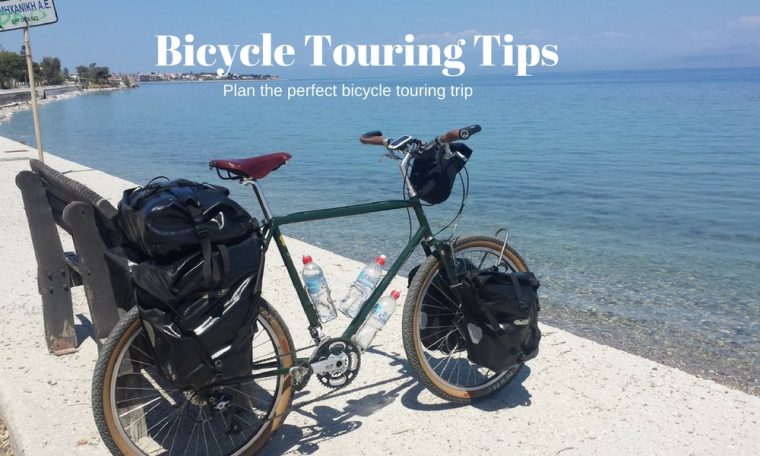
Includes how to cut costs on a long distance cycling tour , dealing with aggressive dogs , the best foods for bicycle touring , and more.
Bicycle Touring Tips
The bicycle touring tips listed below, are the result of quite a few years spent cycling around the world.
During this time, I've had my fair share of joys and disasters, tricky situations and sublime experiences.
It's been an incredible learning journey, and one that continues almost every time I get on the bike.
By sharing some of the things that I have picked up along the way, I hope to make life a little easier for other cyclists planning their own long distance cycling adventures.
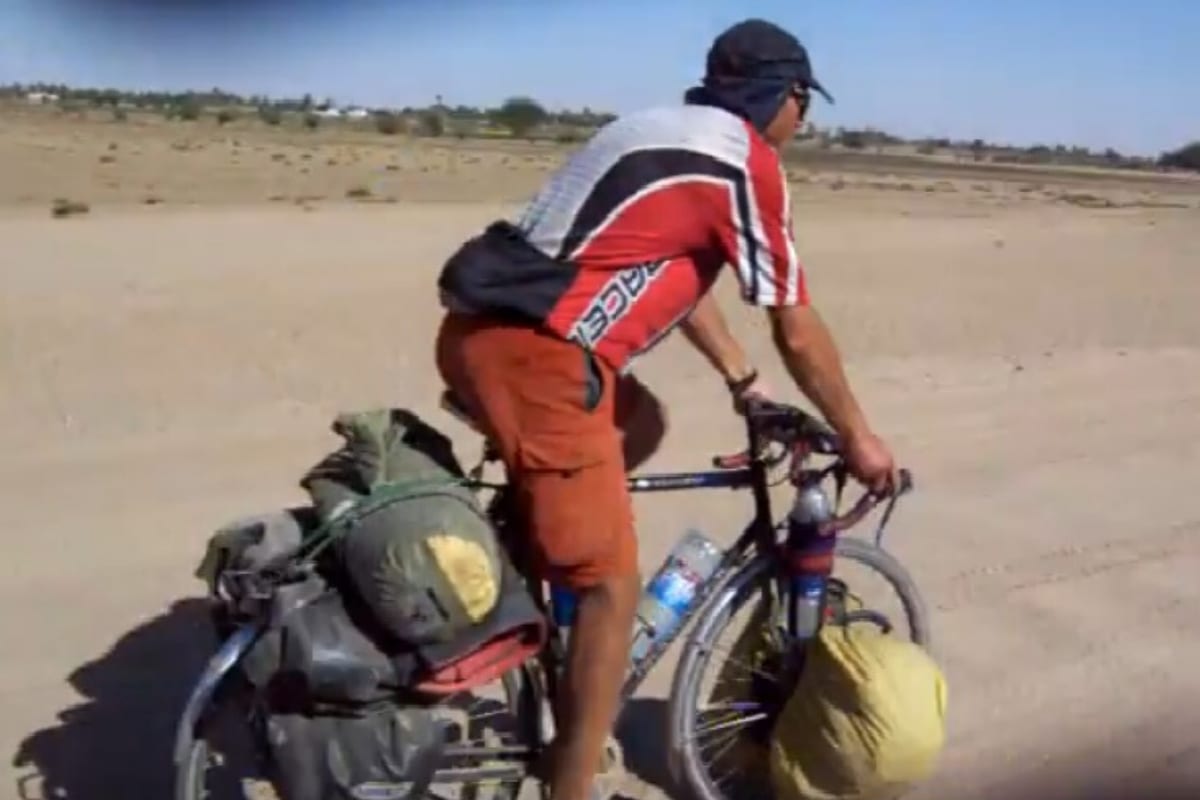
Bicycle Touring Advice
I've split this post of bicycle touring tips into four sections:
- Before you go – How to prepare for a long distance cycling trip
- On the Road – Bicycle touring tips aimed at making life on a long bike tour easier
- After the tour – What to do when the bike tour is over
- Useful bicycle touring articles – Further reading to take your bike trip to the next level!
There should be cycle touring tips, tricks and hacks of use here for everyone.
Whether you are planning a weekend bike tour, or a more ambitious around the world cycling adventure, I hope you pick up something that makes your life easier.
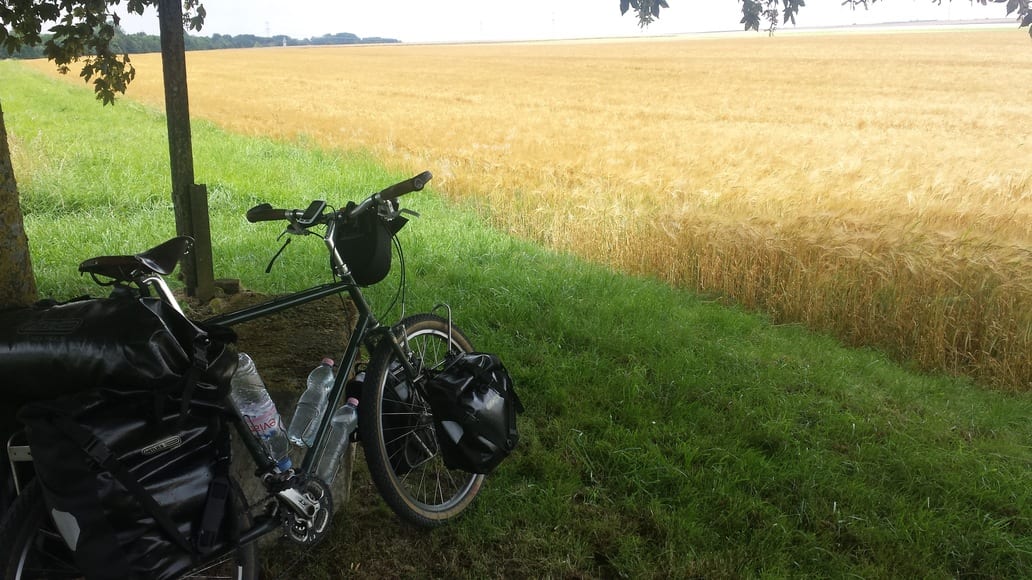
Keep in mind though, no one knows it all, especially me! So, please look on these bicycle touring tips as friendly advice rather than a rule book to follow.
After all when it comes to bike tours, half the fun is learning from mistakes made along the way.
Bike Touring Tips – Before You Go
Let's kick off by looking at how to prepare for a cycling trip.
Are you doing everything you can to prepare for your bicycle tour? I remember during the run up for my first tours, everything I did was geared towards making it succeed.
Here's some things to keep in mind.
Prepare for your bike trip
Remember your 6 P's (Proper Preparation Prevents Piss Poor Performance). Being prepared for the road ahead, whether you intend cycling a coast to coast over a weekend, or one end of Europe to the other, can take many forms.
Perhaps you need to build your fitness up, buy certain maps, work out where accommodation is, buy specific bits of gear etc etc. Just winging it works for some people, but being prepared before hand makes common sense. There is no point in making life harder than necessary!
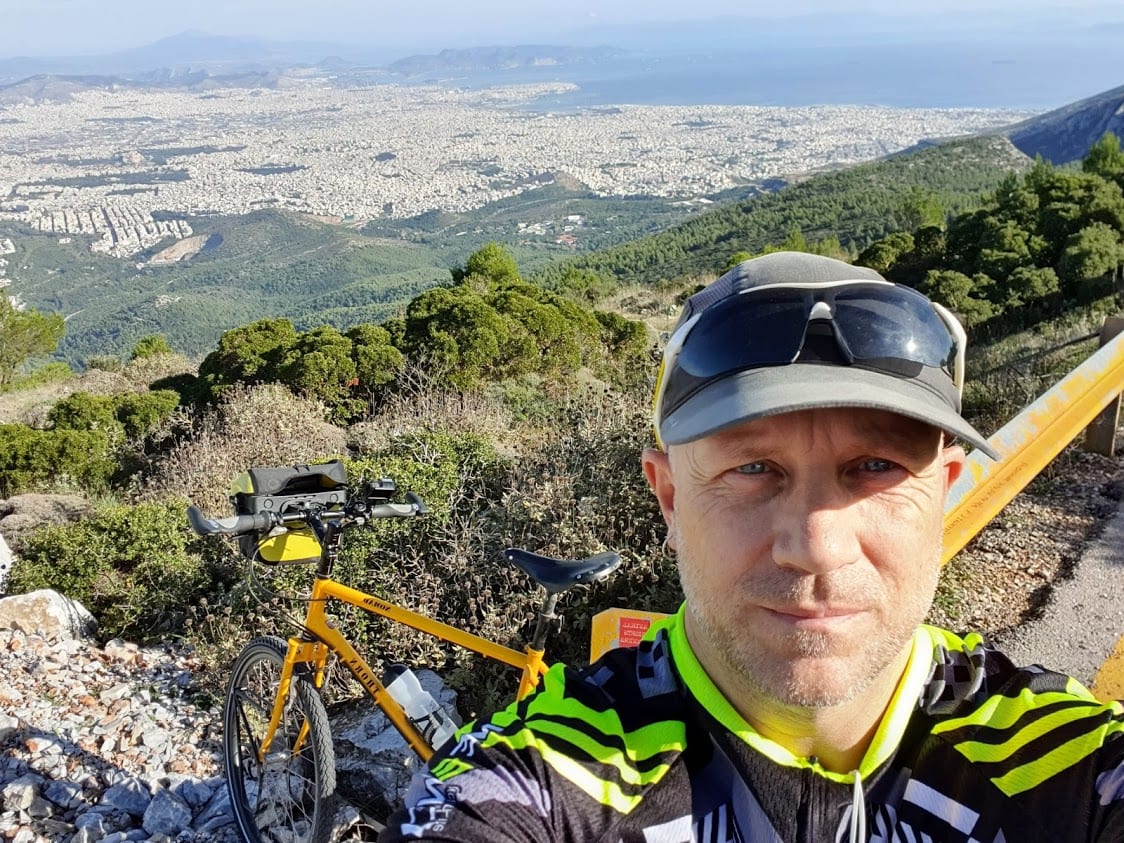
Educate – Bike Touring Maintenance
Knowing how to look after your bike is going to save you a lot of hassle in the long run. If you are looking at touring for short periods of time, you should at least know how to fix a flat tyre and look after the chain correctly.
If you are going on a long distance cycling tour, it would be beneficial to know how to replace a chain , fix a broken spoke, remove the rear cassette, change cables etc.
Some people choose to attend a bicycle maintenance class to acquire this knowledge. Many bike tourers, including myself, pick it up as they go along over time.
You can take all the tools in the world, but if you don't know how to use them, they are dead weight. Knowledge, on the other hand, weighs nothing.
Related: Common Bike Problems
Test your long distance cycle touring setup
The time to test all your shiny, new gear is not on day one of your epic cycling trip around the world! Give your kit a run out before leaving, whether it is setting the tent up in the back garden, using a water filter , or cooking off a camp stove.
Perhaps more importantly, do a couple of rides with your fully loaded bike before you leave. A bicycle weighed down with stuffed panniers feels and handles a lot differently than a lightweight road bike.
Go out on at least one overnight trip to double check the practicalities of your setup.
It might change your mind as to how much stuff to take as well! Read more here: The importance of a shakedown bike trip
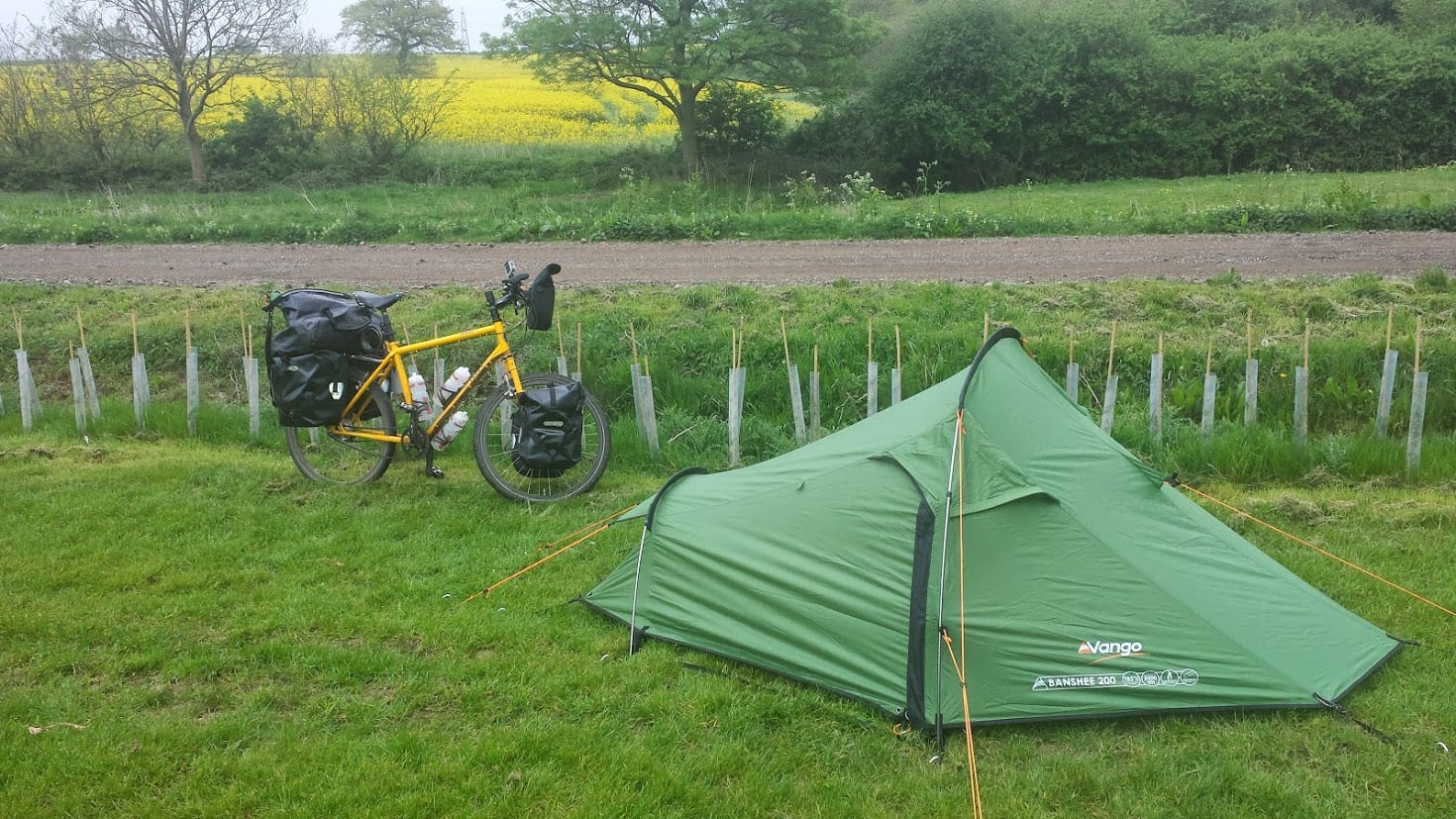
Warmshowers
Sign up for the Warmshowers hosting site. better still, be a host for the months while you're saving for your bikepacking trip around the globe!
Warmshowers is a hospitality site that connects bicycle travelers with hosts. There's no fees involved, and a traveling cyclist can stay at available hosts for free!
Using Warmshowers can be a great way to connect with locals while pedaling through a country. It's also a great way to cut down on accommodation costs!
Find out more here: Warmshowers
Eat what you like when cycling
This does not get included in many people's cycle touring tips, but I really believe it's very important. The chances are, that you have decided what sorts of food you are going to eat whilst cycling. Maybe its lots of rice, pasta, fish, peanut butter, oats, bread etc.
Now ask yourself this. Have you ever eaten these same foods day in day out for a week or more? How many breakfasts does it take before you can't face the sight of oats in the morning again?
If you are going on a long distance cycling tour, and have worked out what sort of foods you are going to eat, try the diet first. Trust me.
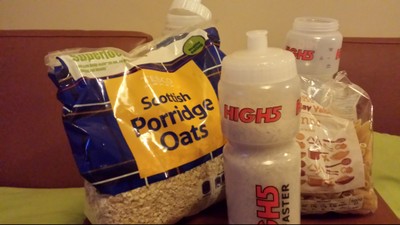
Cycle Touring Tips – On the Road
Here's some more great tips as you head out on two wheels into the great outdoors for your tour:
- Swap your front and rear tyres over every couple of thousand kms. They will last longer.
- Getting up early, and doing most of the cycling in the morning is a good idea. It is generally cooler and less windy.
- Avoid rush hour traffic wherever possible. This might seem common sense to most people reading this list of bicycle touring tips, but it's important nonetheless.
- Take time to smell the roses. Sometimes literally. You are bicycle touring to enjoy yourself and the countryside, not break new land-speed and distance records. (Unless that's your aim of course).
- Make the most out of every opportunity. A source of water? – Fill up all your bottles. A small store in the middle of nowhere? – Buy food, as it may be the last store for a while. Electric wall socket? – Recharge all your tech gear.
- Don't be afraid to stop riding and take breaks. Nobody is watching you to see how “lazy” you are being, and an hour or more taken out for lunch will restore your energy levels beyond the calorific replacement.
- When braking on long, downhill sections, alternate squeezing between the front and back brakes. On super long stretches of downhill, don't let the rims overheat by constant braking. Pull over and take five minutes out.
- Balance your load out. If the panniers are heavier on one side than another, it will put unneeded strain on the hubs and wheels. Pack heavier items towards the bottom of the panniers. Try also to get 60% of the load at the back of the bike, and 40% at the front.
- Check this article out – How to cut costs on a bicycle tour
Bicycle Touring Tips – When It's All Over
- When you get back home, unpack your stuff as soon as possible. You don't want to be leaving a wet tent rolled up in a bag for months on end, or it will rot and smell. Air your sleeping bag etc. It's surprising how “I will leave it a day” turns into leaving it for a week!
- Label up all your photos. They might be fresh in the memory for a few days, but as time goes by, you may start forgetting where they were taken.
- Start planning your next trip!
You might want to check out
- Touring bike accessories and gear
- Bike Touring Clothes
- Cycling Alaska to Argentina
- Cycling from England to South Africa
- Bike touring from Greece to England
- Cycling Across Europe
- Bicycle Touring the Peloponnese, Greece
- Touring bike reviews
- City Bike Hire Schemes
- Bike Touring Blogs
- Best bike touring tires
- Cycle around the world
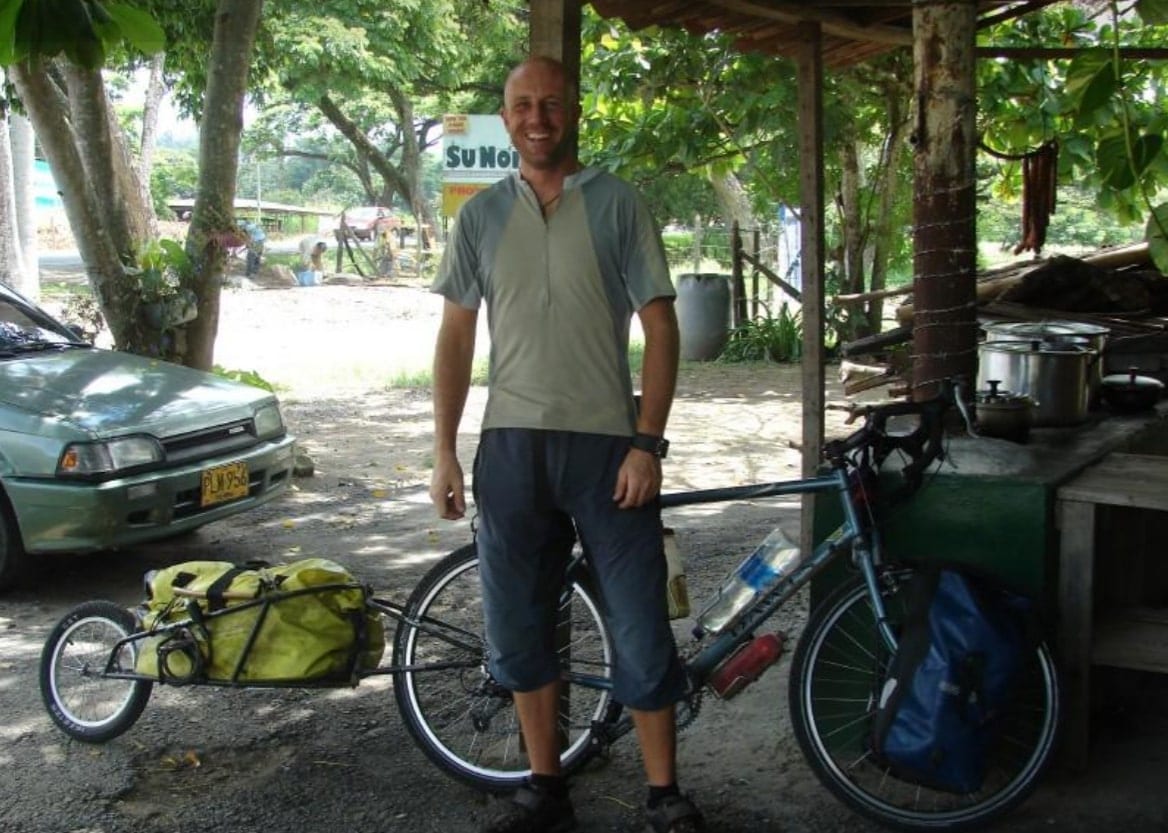
Related Articles on Bicycle Touring Tips
Here are some more articles that you could class as bicycle touring tips. Some of these are aimed at people looking to buy a touring bike, whilst others are practical tips.
Things to look for in a touring bike
Butterfly Handlebars – Are Trekking Bars The Best type of Bicycle Touring Handlebars? – A look at whether or not trekking bars are the best type of bicycle touring handlebars in terms of comfort and practicality.
700c vs 26 Inch Wheels for Bike Touring – The Best Wheel Size for Bicycle Touring – Before buying a touring bicycle, you might want to take a look at which size wheel is best for bike touring.
Best Rear Bike Racks – A strong rear bike rack for panniers is essential when preparing for a long distance bicycle tour.
Preparing to cycle the Pan-Amercian Highway – Your questions answered.
Bicycle Valve Types – The differences between Presta and Schrader valves.
Rohloff Hub – Should you choose a Rohloff hub for bicycle touring.
How to change the oil in a Rohloff speedhub – How to maintain your Rohloff hub.
Best saddles for bike touring – Choosing a good bike seat is key for a comfortable ride!
Is the Brooks Cambium C17 good for bike touring? – A look at the C17 saddle from Brooks.
Brooks B17 saddle – The famous Brooks B17 leather saddle is the de facto standard for bike touring.
Duct Tape Bike Repairs – Duct tape can be useful in emergencies when touring!
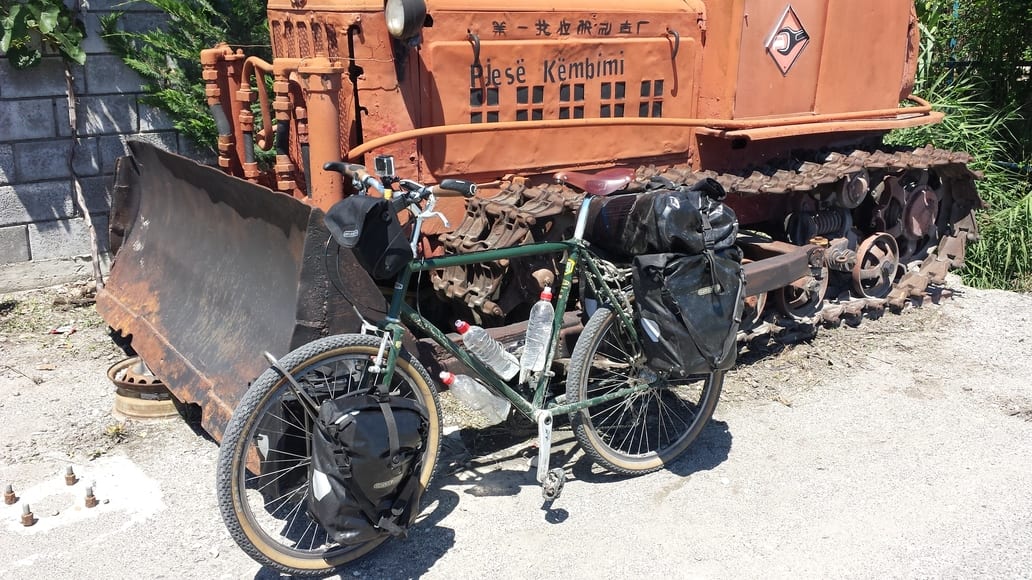
Bike Touring Gear
Bike Touring Gear – A look at the bicycle touring gear I take with me on extended tours.
Touring Panniers vs Bicycle Touring Trailer – Which is best for bicycle touring? Having used both extensively, I give my opinion.
The Best Panniers for Bike Touring – Getting this right is essential in planning your next bike tour!
Ortlieb Back Roller Classic Review – A review of the most popular touring panniers for long distance cycling trips.
Choosing the best handlebar bag for touring
Best Bike Tool Kit – The bicycle tools you have at home are different from your touring tools.
Bike Touring Tool – Are multi-tools any good for bike touring?
Best bike touring pump – How to choose the best pump for a cycle tour
More bike touring tips
Top 10 Bike Touring Essentials – Whether touring for a weekend or a year, I never leave home without these 10 items!
Wild Camping – You can save a lot of money by wild camping during your bicycle tour. Here's some tips on how to wild camp successfully.
How to choose a camp stove for bicycle touring – Let's compare camp stoves, and work out which one is most suited for bicycle touring.
How to cope with being sick when bicycle touring around the world – It's never fun getting ill, especially when you are halfway around the world, and by yourself in the middle of nowhere.
How to pack food in your panniers – How to keep food in your panniers so it doesn't get destroyed when long distance bicycle touring!
Travel tips on cycling in Peru – Some FAQs about cycling in Peru answered.
How much does it cost to travel around the world on a bicycle – A realistic look on how much cycling around the world costs.
Top Pillows for Camping – Getting a good night's sleep helps make each day on a bike tour go that much better!
Best Budget Bike Trainer
As I mentioned before, I hope you find these bicycle touring tips useful, and if you have any of your own to add, I would love to hear from you. Just leave a comment in the section below. Cheers for now!
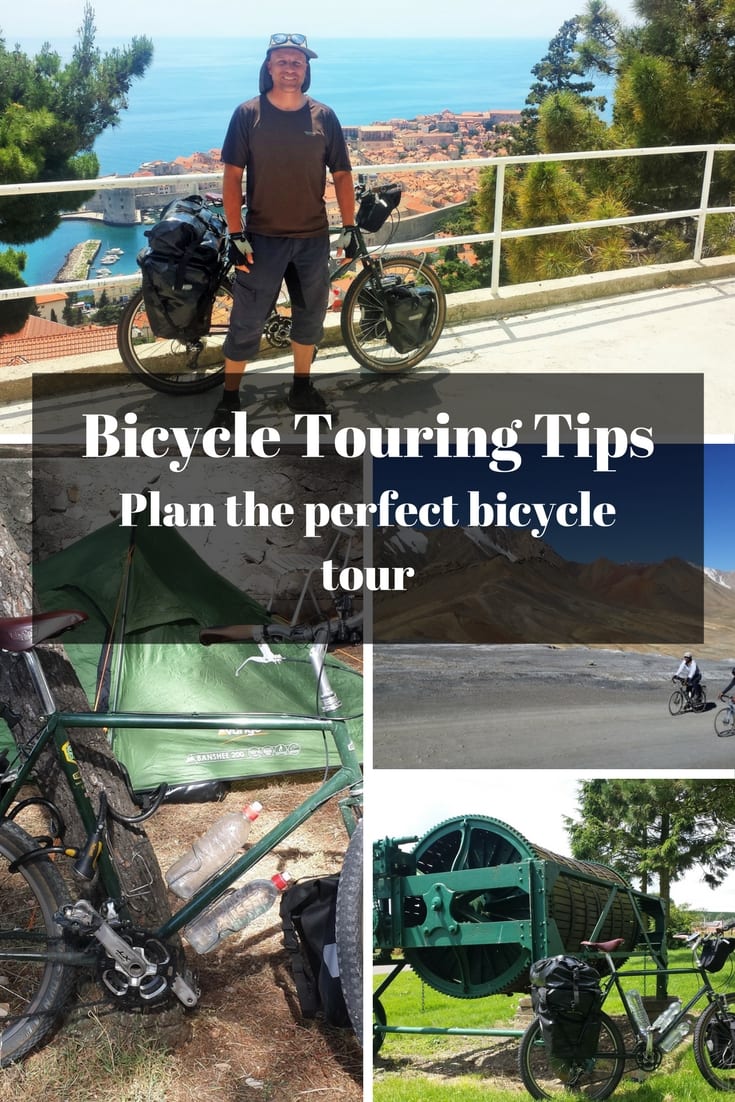
Long Distance Bicycle Touring FAQ
Readers planning their first bike tour – or even their 30th long distance tour – for that matter, like to have their bases covered when it comes to touring bikes, making sure they have enough money, and gear.
Some of the most frequently asked questions they have include:
Which bike is best for long distance touring?
Specifically designed long distance touring bikes are the best choices when it comes to a long tour. The Surly Long Haul Trucker is perhaps the most well known, but other bikes from companies such as Stanforth, Thorn, Dawes, Koga, and Santos are also excellent choices.
How do I prepare for a long distance bike tour?
Once you have all the gear you think you'll need for your bicycle tours, the biggest preparation left is to make sure you're in shape. There's a huge difference between riding your bike on road as a leisure activity, and riding a full loaded bicycle on all types of terrain.
What is the difference between Bikepacking and touring?
The edges between bike touring and bikepacking become more and more blurred Generally speaking though, bikepacking takes place on predominantly unpaved roads and tracks, and frame bags are used to pack all the gear needed. Bike touring usually involves carrying gear in panniers or on a trailer, and while not strictly limited to paved roads, it's not normally practical to tackle singletrack like this. <h3″>What is credit card touring?
his minimal form of cycle touring is ideal for short trips. You can leave the camping gear and cooking kit behind, and instead travel by bicycle with as few things as possible apart from your credit card or cash. You'll simply buy what you need on the way, and stay in hotels at night.
7 thoughts on “Bicycle Touring Tips – Plan The Perfect Long Distance Cycling Tour”
I am trying to buy a weatherproof cycle touring map of the North Sea route (eurovelo 12). Do you know where I could buy one? Everything is GPS, GPX and for me, not very satisfactory. I don’t mind using GPX files, for localized areas, but an overview map is a must. I have cycled up and down North and South America, never even had a cell phone. Just a Rand McNally road map. Now it seems near impossible to get old-fashioned maps for old-fashioned cycle tourists. Help
Hi Dave, We have been reviewing your excellent Athens – UK trip – very helpful and inspiring videos, thank you! We plan to do reverse of part of your trip this June, from Dubrovnik to Athens, then fly out of Athens airport (to Zurich) after a few days visiting Athens. Just thinking about logistics – do you have any advise on best way to transfer to the airport from the city with bicycles, gear etc? The airline requires that our bikes be packed in a box and we can’t seem to figure out if we can buy cardboard bike boxes and/or get it packed at the airport. If not, what do you recommend where we might be able to buy bike boxes and on how we might get ourselves and the boxed bikes to the airport? Many thanks
The best idea would be to get up to the airport on the metro. Taxi might also be an option, but you’d have to get a specific car for the boxes which are pretty rare.
As for the boxes themselves – you could try these guys at the airport: https://www.care4bag.gr/ I’m not convinced though!
There are a cluster of small bike shops in Monastiraki you could try to see if they have spare cardboard.
There’s also a big bike shop called: https://www.cyclist.gr/ who you could contact. It’s outside of the centre, but conveniently on the main metro line (well close to it) that goes to the airport. If you could communicate with these guys for spare boxes, you might even be able to pack and store your bikes there if you are cheeky enough to ask!
First I want to thanks for your great tips. I think your all tips are very important for all biker. Mostly it will help, who want to raid a long drive. Your all tips help me lots.
I will participate in my first ever bicycle tour next week. I am so excited! Thanks for sharing these tips.
Incredible write-up, Dave! I know the idea of doing multi-day packs is weird to many, but I think it is the ultimate adventure.
One note is that taking the bike on a couple of test runs when fully loaded is important (you mentioned that.) One of the specific areas to test is on downhills as I’ve seen some bikes get bad “shimmies” when going downhill.
Also, I recommend stopping by your local bike shop and picking up a couple of spokes in each size you might need. You may not be able to replace the spokes yourself, but it keeps you from ending up with a broken spoke in a 2-horse town with a bike shop that doesn’t have your size. Seen that a couple times as well.
Excellent tips and guide on how to prepare for your cycling trip! I am currently on a 6-month trip through Central Asia and, unexpectedly, I am meeting so many travelers who are cycling around the Stans. I really admire their sense of adventure and, for the first time in my life, I am considering becoming a cyclist traveler. That’s why I was interested in your guide but, after what I’ve read, I think that it involves so much preparation! I don’t even know how to fix a flat tire, so I think it will be harder than I thought. Cheers!
Leave a Comment Cancel reply

15 Unorthodox Ways To Train For Cycle Touring & Bikepacking (Bicycle Optional)
Posted on
So you’re dreaming of life on the open road on that epic long-distance cycle tour or bikepacking trip.
Yet you’re doing nothing proactive about it, because (among other reasons) you think you’re not fit enough .
The odd commute or day-ride isn’t enough; it’s waaaaay too big a leap from your current lifestyle to the kind of physical fitness required for that big bicycle-mounted adventure.
Well, no, actually.
For most people in this scenario, the truth about training for long-distance cycle touring or bikepacking is actually this:
Training yourself mentally will serve you far better than attempting to train yourself physically .
You can read all the detailed cycling fitness articles you want, but they can all be summarised thus: the best way of physically training for a big bike tour or bikepacking trip is to ride a really heavy bike a really long way over a really long amount of time.
Guess what? You can do that by actually going on a big bike tour or bikepacking trip .
Start off gently, sure. But in anywhere between a few days and a few weeks, depending on your starting fitness and what your natural range turns out to be, you’ll be as fit as you’ll ever need.
It’s the lifestyle that’ll prove the real departure from the norm. If you’re still on the couch after years of dreaming, this is probably worrying you more than you’ve admitted to yourself.
But the good news is you can train for lifestyle changes too. Indeed, doing so might be the thing that gets you to the starting line.

Here, then, is an alternative kind of training programme for you; one that’ll take you on a gradual psychological adjustment towards the daily routine of the long-distance bicycle traveller.
This training programme will also allow you to keep your home and your job until the very last minute — and won’t involve pedalling pointlessly around in circles in an attempt to ‘train’ for a Big Trip.
Some of my suggestions are rather tongue-in-cheek. But do try implementing a few of them; perhaps one new exercise per week. In just a few short months, you’ll be ready to roll right out the door, fighting fit or not. I promise.
(Now’s a good time to go and put the kettle on. You’re going to need at least two cups of tea for this.)
1. Start hanging out with other bicycle travellers
Go to Warmshowers.org , sign up for a host account, and fill out your profile. ( Here’s mine .)
You will soon start to receive emails from wandering cyclists looking for a place to stay and some company for the evening.
Invite them to stay. Encourage them to stay longer. Spend as much time as possible with these people. They are your best friends now. Listen to their stories. Learn from their experiences.
You’ll soon realise that they are, on the whole, just like you, except that they’re doing what you’re still dreaming about. You’ll get inspired – and you’ll get jealous. And that’ll soon motivate you to start taking your own plans seriously. It’s a cruel hack, but it works.
As a side benefit, you’ll build up a list of testimonials from people you’ve hosted, which will come in very useful when you’re sitting in a smoky internet cafe full of small boys playing astonishingly violent video games, trying to find the right key on a Turkish keyboard to produce an ‘i’ with a dot on top of it in order to email other hosts with requests to stay the night yourself.
Nobody biting with Warmshowers? Try Trustroots , Cou ch surfing , Hospitality Club , or BeWelcome . Or all of the above. It’s a game of numbers. However you achieve it, start hanging out with other bicycle travellers.
2. Reduce your intake of social media
Just sign out, that’s all. I’m not going to tell you to delete your Facebook profile. Just sign out. And uncheck the ‘Remember me’ box next time you do feel compelled to sign in.
Most bicycle travellers are happy to stay in touch with friends and family back home occasionally — in proportion to being connected with the ground beneath their feet the other 99% of the time. And when they do use social media, they’ll be happy to make it a one-time effort before getting back outdoors and back to reality.
Signing out of social media prevents one thing: the compulsive ‘checking’ behaviour so many of us now exhibit to check our social media accounts every few minutes, meaning our brains are in two places at once, causing us to walk out in front of moving vehicles and into each other while ‘checking’ what’s happening in the world.
You don’t need that. Your friends and family are getting on just fine, and if they aren’t, they’ll call you or come and see you. Instead, start using that reclaimed time to work more seriously towards your upcoming trip. Read books, stare at maps, just sit and daydream, or go for a bike ride. The possibilities for your bike tour are endless – if you’ve got the headspace to let the idea grow.
As an additional step, uninstall the smartphone apps for these networks and use the mobile browser versions instead. This’ll get rid of all those notifications you get every few seconds; further instant-hit distractions from reality. Better still, put your smartphone on airplane mode.
Or on eBay.
3. Disconnect from the twisted world of mainstream media
Throw out your TV today. Better still, eBay the damn thing. And transfer the proceeds immediately into a limited-access savings account marked ‘Adventure Vault’. (I use Starling Bank , which has a cool ‘spaces’ feature to keep savings in a separate virtual account.)
And the money you’ll reclaim on your TV license – put that in too. The earlier you chuck out the telly, the bigger the rebate. Do likewise with the money you’re about to save each month on the satellite/cable subscription. If you buy a daily or weekly newspaper, stop that right now. It’s doing nothing but making you anxious about a world that’s as safe as it’s ever been to travel in.
Aside from the logistical hurdles associated with taking a television on a bike tour, bicycle travellers don’t need to be permanently connected to whatever the international news media is spewing out about ‘the world’.
Why? Because bicycle travellers are far too busy actually experiencing ‘the world’ to bother with what the media want to tell us what’s happening in ‘the world’ that we’re supposed to care about, think about, and more importantly be afraid of so we’re easier to sell stuff to.
Travelling the world on a bike consists mainly of pedalling, interspersed with tea and charades with strangers.
If you want to know how human society really works, read a good history book, make peace with the fact that every bad thing happening today is a repeat of a bad thing that happened yesterday, that you have no influence over anyone else’s fate so you might as well take hold of your own, and then go and cycle a lap of the planet to get a measure of the rest of it.
While you’re using the time freed up by your new low-information diet to set up the monthly standing order into the Adventure Vault that’ll eventually fund your journey, add in the accumulated cost of your daily latté and start brewing your own coffee in a camp-stove-friendly espresso pot .
4. Redecorate your home
If there’s one thing we adventure cyclists spend almost as much time staring at as all the stunning landscapes this planet has to offer, it’s maps .
Maps, before a journey begins, infest every aspect of our lives. Usually this is less for practical route-planning and more to remind us just how much road there is to explore. Whether a blow-up globe or a 10K topo, maps are fail-proof fuel for wanderlust.
You too can tap into this unlimited font of motivation simply by visiting the Stanford’s website (or their stores in London or Bristol) and ordering a selection of maps of places you fancy cycling in* — whether that’s regions, countries or continents — and putting them up on your walls.
Find yourself gazing longingly at them for several hours a day, mentally planning routes, realising how much damn choice there is, that you’ll never actually be able to claim to have ‘seen the world’, and that it therefore really won’t matter too much where you go as long as it’s somewhere new.
5. Cook one-pot meals
No truly self-sufficient cycle tourist rides without a good camping stove with which to cook a hearty and delicious hot meal at the end of the day.
Far from being bushcraft maniacs capable of lighting, using and extinguishing a cooking fire in 10 minutes flat (though such people do exist), we have instead mastered the art of getting breakfast, lunch and tea (and coffee) ready over a single tiny burner .
You can imitate this easily. If your stovetop is a gas-burning model, simply remove three of the four flame spreaders, thus rendering all but one of them inoperable. If, on the other hand, you have an electric hob, you’ll find that the temperature knobs will come off with an enthusiastic tug (they’re designed to be replaceable; I take no responsibility for broken hob-knobs).
For the ultimate in authenticity, ensure that the one remaining hob is the smallest available.
You’ll find that — while your recipe range is somewhat reduced — you’ll nevertheless be able to create all manner of delicious meals with creative use of that single hob, along with a few unorthodox cooking methods and some clever tricks involving two or more cooking pots and careful timing.
Once you have mastered this, feel free to abandon the stovetop altogether and switch to the more purist approach of a using an actual camping stove and camping cookware to prepare your meals, preferably on the living room floor.
6. Sell your fridge
Fridges have been the default in homes for less than a century. Most of the food in your fridge, however, is unlikely to actually need refrigeration. Society has just developed a supermarket-assisted obsession with hoarding food for longer. (My mother-in-law even refrigerates flour .)
As adventure cyclists without fridges, we’re all-too aware of this, happily carrying butter, cheese, yoghurt, cured meat, pastries, fresh fruit and vegetables, jars of jam and chutney, and mayonnaise inside our non-refrigerated panniers for a few days at a time and suffering no ill effects whatsoever.
So sell your fridge. Raid all those mystery jars at the back of the top shelf. Quit hoarding food for weeks, stop generating leftovers, and only buy what you can eat before it perishes — which includes more types of food than you might think.
7. Turn out your wardrobe
Your average bicycle traveller will possess a maximum of two sets of clothes: one set for riding in, and one set for not riding in.
This makes a lot of sense, since time spent travelling by bicycle is generally divided between — you’ve guessed it — riding, and not riding. You can replicate this today with incredible ease.
To figure out what clothes to wear for riding in nice weather, imagine you’re going hiking on a sunny day, then add a pair of padded cycling shorts and a set of waterproofs.
To figure out what clothes to wear for not riding, imagine that you’re choosing a single outfit that you’d just about get away with wearing for a night in on your own, a night out with friends, a dinner invitation with your in-laws, and the wedding reception of a distant relative where you’ve been seated somewhere in the far corner.
You may now sell the remainder of your clothes on eBay, or perhaps take them to a nearby charity shop.
8. Move out of most of your house
We bicycle travellers have the luxury of almost unlimited space in which to play, restricted only by the planet’s landmass and a handful of slightly inconvenient border crossings.
When it comes to a temporary dwelling, however, the best we can usually hope for is a two-berth lightweight tent , a spare room, or a diplomatically-judged amount of space immediately surrounding a sofa.
Imitate this in your own home by moving your entire domestic life into a single room.
Yes, you may visit the bathroom when you need to. No, the remaining rooms are not to be used for anything except temporary storage of all the furniture and belongings now earmarked for immediate eBaying , Freecycling or the next community yard sale.
Soon enough, you’ll wonder what the point of all of those extra rooms was in the first place — at which point you can start to think more seriously about selling your house and using the proceeds to pay off the rest of the mortgage and hit the road once and for all.
Alternatively, consider enlisting the services of a letting agent and paying a property management company 10% of your monthly rental income to look after everything on your behalf, allowing someone else to pay off your mortgage while you cycle round the world.
And in the meantime, you can host random travelling cyclists in all of those spare rooms you’ve freed up. You could even go all the way and operate an open-door policy, turning your private home into a much more useful travellers’ commune.
9. Get off the grid
Homes were originally electrified in order to provide lighting after dark, which — let’s face it — has achieved little more than disconnecting your modern lifestyle from the natural cycle of day and night.
But the daily schedule of us touring cyclists is set around just these cycles; one of the many things about the lifestyle that imparts a deeply satisfying feeling of connectedness with nature.
Yes, we do use electricity now and again — specifically for charging the batteries that power the headtorches we use exclusively for reading books at night, and perhaps the occasional phone or laptop charge if we’re feeling particularly futuristic.
You too may take up this routine by restricting yourself to these applications alone. You’re already using a camping stove on the living room floor for your culinary needs, and you’re no longer using a fridge. So taking the fuse out of the oven won’t be an issue. Nor will selling the kettle on eBay .
Unscrew and sell all of your lightbulbs. Carry a headtorch in your pocket or around your neck at all times. Wash clothes by hand inside a drybag from this point forth (surprisingly effective; they don’t make ’em waterproof for nothing) and take only cold showers (seriously invigorating; proven health benefits). Dishwasher? HTFU !
Now divert the money you’re saving on your utility bills into that ever-growing Adventure Vault. Magic!
10. Camp
On the whole, adventure bicycle travellers tend to spend a heck of a lot of time sleeping outside. Oftentimes this’ll be in a tent , the closest thing we have to a home; on particularly sumptuous nights it might well be beneath the stars in just a sleeping bag.
We’ve learned through experience to do this comfortably: warm, dry and undisturbed. And most of us love it. There’s little you really need to do to follow suit, of course: simply swap your traditional bed and bedding for a camping mat and a sleeping bag, and begin a brand new routine of sleeping on your living room floor with the doors and windows wide open. Not enough space? Sell your three-piece suite and turn your Therm-a-Rests into armchairs .
If you’re lucky enough to possess a garden, balcony or terrace; even better! You truly can sleep al fresco on a nightly basis without leaving home, starting tonight. Just add a tent , bivvy bag or tarpaulin when the rain comes in.
Once sleeping outside has become the norm, simply take this practice out of town on a regular basis. Woods, hilltops and riversides are all good bets for stealth camping undetected . Closer to home, sleeping in parks and other green spaces is often easier and more fun than you might think — yes, even if you live in central London .
11. Become an observer
Bicycle travel not being a remotely destination-centred way of doing things, we adventure cyclists develop the ability to engage constantly with our surroundings in an intimate and observant way in order to make our experience ‘interesting’.
While it can be difficult to see what’s worth staring at in a big town or city, especially one you’re familiar with, it’s usually just a case of creating the headspace to actually see what’s going on around you. Not just to glance about sometimes while you’re thinking about something else, going somewhere else, but to pay attention to the details and the seeming insignificances, for these all add up to something just as interesting the stuff that is supposed to be interesting to look at, like architecture and billboards.
One easy way to train yourself to do this is to take up macro photography. Carry a camera everywhere — not your phone; an actual camera — and look for beauty on a small scale everywhere you go.
It’s much easier when you’ve got a purpose, so hack yourself one by committing to a Photo 365 project, training your eye and your brain to see the world as we long-term bicycle travellers do. Soon enough you’ll wonder why the majority of people seem to be wandering around staring at the ground or at smartphone screens when there’s just so much else to see!
12. Do nothing more
Once the initial trauma of jacking it all in and leaving the status quo has worn off, we bicycle travellers tend to find ourselves with a lot of thinking time. It’s often said that we have too much thinking time, what with all those miles we pedal every day.
The best remedy for this, of course, is to stop treating free time as ‘thinking time’ and instead practice the doing one thing that we in the West have all but forgotten how to do: not think.
There is this underlying cultural trait — so deeply buried that it is near-invisible — that the present passes us by while we’re using the past to inform future plans. The problem is that — as becomes obvious when you stop and think about it (ironically) — the past and the future don’t actually exist. At least, not while ‘exist’ is being used in the present tense, which it is right now, and now, and now, and now.
Repetitive actions, such as pedalling or walking for long periods of time, allow the conscious mind to wake up to this collective insanity, in turn allowing you to retrain your brain to exist in the present. But hanging around in parks doing nothing is another great way to do this.
Don’t think. Don’t think. Just hang around, listening to all the past and future crap flying around in your head. As soon as you acknowledge them, these voices tend to lose their influence, leaving you to better appreciate the here and now.
13. Talk to strangers
One of the defining features of life on the road is the sheer number and variety of people you’ll meet. To begin with, it feels a bit strange — we’re used to opening up with people in our trusted social circles, but restricting our interactions with strangers to financial transactions and customer support calls.
Soon enough, though, it becomes normal, and when you return home to find everyone milling around in the street totally oblivious to each other, that’s what feels a bit strange.
You can begin to recreate this frankly enlightened relationship with humankind today. Simply start talking to strangers. One easy way to do this is to offer to help someone who could use a hand with something, whether that’s carrying a suitcase up a flight of stairs, picking up something they’ve dropped, weeding the allotment, or something else altogether.
If this perfectly natural mode of behaviour is still new and uncomfortable and you’d prefer it to happen in a vaguely socially acceptable setting, check out the local Couchsurfing events and meetups and attend them. Use networks like HelpX , Workaway and Worldpackers to meet new people and work together on something constructive. Join a club. Volunteer with a local charity.
Once you’re more comfortable, consider talking to your neighbour on your next long bus or train journey, sitting on park benches chatting away to whoever comes along (commenting on the state of their dog is a great ice-breaker). The pinnacle of achievement in this field, perhaps, is to go out alone to your local pub, bar or nightclub and ingratiate yourself with the local revellers.
Again, it’s a game of numbers, so if the first few people glare at you for violating their warped sense of normality because you, a stranger, spoke to them without invitation, simply consider it ‘their loss’ and move on.
14. Repack your life into four panniers and a bar-bag
Now you’re living in a single room, hanging out almost exclusively with total strangers and other cycle travellers, wearing just two sets of clothes, cooking your meals over a camping stove, and are sleeping in the garden on a Therm-a-rest, you might as well take the obvious next step of packing what few belongings you have remaining into four panniers and a bar-bag.
For the sake of practicality, you might as well use that space left by the TV cabinet to store your touring bike, which will act as a place to hang these five aforementioned bags. No need to move or ride it; just use those handy horizontal rails as natural locations for your luggage to live.
This, of course, is also a good excuse to actually get yourself a touring bike or start building one from scratch . No need to ride it, but then again, if you do feel like selling your car and starting cycling everywhere instead, feel free to go right ahead.
Put everything you can’t fit in your panniers on eBay. Seriously. People will buy everything else. Just check out eBay’s Everything Else category . See?
15. Practice the art of non-verbal communication
Once we bicycle travellers leave the zone of our spoken languages, we develop the ability to communicate through more or less purely non-linguistic means.
Our miming skills become razor sharp, as do our abilities to scribble incomprehensibly on bits of paper while making ourselves understood, all the while flicking through pocket-sized dictionaries and gesticulating in wild and unimaginably creative ways which strangers really do understand.
It’s possible to leapfrog this learning process as part of your normal daily life. Simply give up speaking your native language. Restrict your interactions with members of the public entirely to the aforementioned techniques, plus as many words from other languages as you can muster. If in the UK, shop exclusively in eastern European and south Asian grocery stores, where this technique may work particularly well.
If you commit wholeheartedly to this principle, you will undoubtedly also find that — as a byproduct of being unable to speak to your colleagues — you get fired from your job.
At this point, all of your previous preparations will slot neatly into place.
For it is now surely a simple case of transferring your savings into your current account, wheeling your touring bike and its already-packed panniers out of your empty house, giving the key to the letting agent, and riding away from your home.
You’ll find that every element of your now-current lifestyle remains the same — save, of course, for physically training to get fit enough for long-distance cycle touring.
And physically training for your bike tour is what you’re going to do right now.
By riding your goddamn bike.

Bogged down in research for your next big bicycle adventure?
I wrote a whole book to help with that. How To Hit The Road is designed to be read at your leisure, making planning a bike tour simple and achievable, no matter the length, duration or budget. Available globally as an ebook or paperback.
Save or share this post:
- Share Copied to clipboard
Also relevant to this post:
- What’s The Best Camping Mattress Or Sleeping Pad For Cycle Touring & Bikepacking?
- Planning A Really Long Bike Trip? Ask Yourself These 7 Critical Questions First
- Do I Really Need Ortliebs? A Buyer’s Guide To Panniers For Cycle Touring
Comments ( skip to respond )
52 responses to “15 unorthodox ways to train for cycle touring & bikepacking (bicycle optional)”.
[…] fuel for wanderlust,” as self-unemployed creative explorer Tom Allen notes in #4 of his 15 Unorthodox Ways to Train for Cycle Touring & Bikepacking (Bicycle Optional) — if my memory serves me well, that’s where i got the inspiration for this […]
I think the part I feel least prepared for is the one-pot cooking. Any good pointers or list of favorite bike tour recipes to point me toward? Another question — how do you check out of technology while maintaining a detailed blog and web presence? Do you bike tour with a small laptop?
Loved this …so loved it, sent it on to many.
I’d stopped listening to the news some months before reading this…have recently bought a garmin 810, walking boots, and have touring bikes. Loking forward to clearing out surplus stuff and tasks in the winter and starting afresh in the spring.
I have a happy life already but the bits in here that can add to it …so much for the better!
Hi Tom, zany but incredible. I’ve started dreaming right now. A real inspiration. Thanks.
Wonderful article. I really enjoyed reading it. A little crazy, outlandish and great if you can ditch everything to tour the world, but I have kids so not quite so feasible We’re planning a Pittsburgh to Washington, D.C. trip for this summer. Wish I could be more flexible and just take it easy like a good month of touring but, alas, we have responsibilities and limits on money, but it sure would be a lot of fun. I’m not a camper either so won’t be tenting it. I also have a guidedog to consider. Anyway, you gave me a lot to think about, and I sure appreciate that! Penny
Well, I deleted my facebook and Twitter apps! Can’t work with your two-bags-only approach though. One: If I’m doing street photography I need film. If I’m doing film, I need a fridge to store it in. (About a roll a day to the end of the year. Would almost-fill a pannier.)
Two. The books, man! I need my books and my maps. So, I hire a storage lock up. If I ever went ‘off-grid’ I’d have to keep paying for it… But all it would contain is a few bookcases and a coffee table. (Oh ok, and my guitar.)
Tom, you’re the man, man!
Too much hassle at home, too much needless worries and screens, too much fear! Booking the ferry to France this week with a friend! I’ll stop when I can’t go anymore! Morocco destination #1!
Here’s to not thinking! Peace out!
Peace out and good luck! 🙂
[…] How To Train For Long-Distance Cycle Touring (Bicycle Optional) […]
Human beings like you gives me trust (not faith as I am athiest) that “the world” out there is full of amazing beings dying to reach out… Thank you for helping me keep my dream alive!
[…] Another great way to prepare yourself is by joining bike race competitions. While these activities are normally lesser in scope as opposed to the usual long-distance bike races, they still make for good practice. By joining, you get yourself accustomed to the pressure and mental stress that usually come with competitive sports. The more you get used to these things, the easier it becomes for you to manage your own training for long-distance bike riding. […]
[…] read an article for How To Train For Long Distance Cycle Touring and it blew my mind how much the ideologies of Bikepacking overlapped with Homesteading. In […]
[…] sier. Når han får spørsmål om hvordan man bør forberede seg på en lang sykkeltur, sier han: «Hva med å ta en lang sykkeltur?». Genialt. Jeg følger det rådet, tenker jeg. Og så har jeg spist en del is de siste dagene, så […]
Love your articles and style of writing Tom…but I swear you’re getting weirder! Maybe it‘s spending all that time on your own,with just your bike for company?! I‘m currently tearing myself apart and still trying to overcome that final mental hurdle…actually to just pack my bike and set off! Last year I split with the missus after 26 years of marriage and 2 kids,gave my job up and moved in with my ailing father,acting as his fulltime Carer. The plan was to look after him for a short while,then sort out something with Social Services for him before going travelling.…but over 12 months later I‘m still here! The only difference is my dad wanted me out in March and so I‘m currently sleeping on cushions on the lounge floor of my estranged wife’s house! Part of my benefits have been stopped now and I‘m currently surviving on £62 a week,half of which I give to the missus for having me here. That does not include food! I‘m booked to ride at L’Eroica in Derbyshire next month and have the wedding of a Polish mate to go to in Poland at the end of August. I‘m contemplating going on the bike,but having not really travelled independently since my early 20s(I‘m 55 now) I‘m shitting myself to be honest! Just need summat ‚or someone, to give me that final shove…can you offer it me Tom? lol!
Buy your ferry ticket and tell everyone you’re going to do it! 🙂
Loved this article: I AM plotting the trip, when the ancient dog shuffles off. Have been doing Warm showers for a couple years. Got the gear and tried it out on a couple mini adventures (one with the dog in a trailer, before he got too decrepit) and camped wild. And, funnily enough, I spent today going thru the wardrobe chucking most of the contents out. You’re so right that the mental stuff is the important bit. Thanks Tom.
Tom, are you saying that if you put your heart into it your body will follow? I loved the article, I did the end to end thing as a school boy along with a few other ‘adventures’, then for some reason stopped, well not so much stopped but rested on my laurels. Now having just turned 50 I can realistically say that I have revived my sense of adventure and in the light of your inspirational writing will be incorporating the bike into these adventures, thanx for reminding me bud. M
[…] partly by the uplifting, ‘Delight’ by J.B. Priestly and this comical blog post on Tom’s Bike Ride, I decided to pull together a quick list of the small things that I […]
Great writing Tom. I’m enjoying your take on this life style. Very informative.
I’m still weirded out and new to the blogoshere, yet have a burning question for you and all that care to comment…
how does one securely store your bike when you have a need to part from it. Say to play tourist, visit a restaurant, go for a swim… any environment or activity that requires you to leave eye sight of your wheels, your gear, gadgets and roving homestead?
thanks, Cee
Hey Tom, Loved your article, subscribed to your blog. May not manage to read it all as I’m due to head off in two months myself, but I like to offer some support in any way I can with the limited time I have. so, handed in notice on flat, handed in notice to job, bought bike, did my first ever 50km trial run on Monday! Ouch! The bike seat kills! but motivation levels have gone through the roof! Anyway, thanks again for your blogs, and any tips and advice you have would be highly appreciated. Hope our paths cross in some distant land!
[…] isn’t restricted to material items though, so whilst selling your possessions read Tom’s blog I’ve mentioned previously on mental preparation which outlines other ways to save cash by living […]
This is farthest the most complete, inspiring, houmorous, declarative, energizing article i´ve had ever readed about cycle touring..the thruth itself, besides the financial advices from Ramona..a lot of concerns i had vanished and then came a lot of creative ideas on how to keep paying my duties for my two sons education and expenses, and, at least, begin to travel..thanks a lot!
another great article Tom i particularly liked that you used photos from some of my favourite places on earth almost every cyclist i have met has always said ‘just get on your bike and go’. no amount of preparation can prepare you for the adventure ahead as a hitchhiker, i am mentally preparing myself for switching from travel by foot to actual travel by foot/ pedals. Your blog keeps me focused, Thanks for sharing the wisdom and love,
In my experience being mentally ‘fit’ is so much more important than being physically fit. If you want to go cycle touring, it’s all about the mindset. Even if you’re not a proper physical shape when you start out, you will be after a few weeks. It is impossible to improve a mindset when on the road. Mental strength is everything!
Strength — and flexibility!
Stamina, and flexibility!
Nice mix of practical eccentricity, thanks — I feel encouraged!
Excellent article, made me laugh. You’re right that bicycle travel is a lot more than just cycling and I´m surprised at how specifically you’ve pinpointed some of the elements like how time seems to slow down, we are more appreciative of the outside worl, but also more appreciative regarding the value of the little things we have. Very good piece Tom. As usual.
Hey Tom, great article that I think many people could take on board, not just round the world travellers! My favourite in a while 🙂
Excellent! I particularly like #2 — it’s a shame to see so many people living behind the screen of a phone/tablet/laptop/camera these days to ensure facebook/twitter/instagram see what they are doing that very moment. Put them down and enjoy the moment for yourself!
I hear so many people say I can’t ride that far, but I don’t ride far I just ride. It’s like hitchhiking, you have to live in the present. You don’t know or control the future and the past is gone so you just roll with what you have and you get where you’re going when you get there.
2Just some thoughts.
1: the more physical training you do, the less likelihood of a strain or similar early on in the trip and the more likelihood of you enjoying day on day riding since your recovery will be superior as you will be fitter.
2: I have never hung out with other cycle tourists, nor do I want to do so. I have my trip and have little interest in other’s trips outside of a good book.
4: I have only a vague idea of where I am headed and look at the map 10 minutes before heading out on the day. I you get bogged down in the big picture it can seem all too much, threatening to swamp you; so put that map down until the morning.
8: I rented out spare rooms in my home, later, I rented the whole thing out, last year I sold it. Today it is worth £70,000 more than Easter last year. Sell your home and the likelihood of climbing back onto the housing ladder evaporates almost overnight.
9: Electricity took us a Humans into a whole new era, do not squander it. Never use a camp stove, BBQ or similar inside, the carbon monoxide is odourless, tasteless and heavier than air. Every year people die in their sleep because they used cooking devices meant for outdoors, indoors. This is abject folly.
9: if you want to alienate friends and neighbours, lose your girlfriend, and ensure people view you from afar, remove all your light bulbs and wander about wearing a head torch. You tour on two wheels, that’ s all. Get over it, thousands do so, you do not need to mark yourself out as an evangelist, people are not drawn to zealots and fundamentalists, you tour by bike. That’s all — no one back home really cares, there is little worse than a travel-bore, 10 minutes of travelling tales is enough, possibly too much.
If you want to tell the tale, do so via a blog, but be warned, no one bar your patents can stick more than ten minutes of travelling stories, so don’t even go down this route.
9: Any fool can make life awkward for themselves. Make life easy on yourself. Use the launderette or the facilities provided on site or in the town, no one hand washes as well as a washing machine. Period. No debate. No one likes a stinking traveller.
Camp as often as possible if you are new to sleeping outdoors and try a couple of days out on the bike to see what works and what does not.
Stop debating this question: it’s not about the bike or the kit, nor paring back your life, it’s about You, so just ride out and get on with it, no more lists, no more debates, no more dilly-dallying, the longer you faff about the less likelihood you will never cross the Threshold.
Go and ride the goddamned bike!
I’ve approved your comment assuming you got the note about this being a ‘tongue in cheek’ article?
Oops — my Whisperlite’s boiling over…
Ah! No, never got the Whisper. Assumed you’d been out in the sun too long!
Try: http://www.lifewithoutlights.com Or any image of North Korea at night, be it from a satellite or the capital at night.
For my trip I did two months of road riding training, bought the Dawes SG, had a three day trial ride, three weeks later I rode away, that was 16th May, and I am still turning the pedals.
Looking at America for 2015.
I’d like to debate that no one likes a stinky traveller please.
Tongue in cheek?? Tongue in Cheek!?!?!? Now you tell us! Did it all. Sold the TV, sold the fridge. Wife left me when I had the electricity turned off. Sold the house…part of the divorce proceedings. Pretty much down to the two sets of clothing, bike, panniers and camping gear. And, yeah, don’t try cooking on a camp stove in the house. I just thank the Lord the carbon monoxide detector was battery powered. Tongue in cheek!?!? I oughta sue your a**! Seriously, great piece. Kind of reminds me of the lyrics to the old John Prine number: “Blow up your TV, throw away your paper Go to the country, build you a home Plant a little garden, eat a lot of peaches Try an find Jesus on your own”
Peace, brother!
Disagree on your last statement, “it’s not about the bike,” when it has a lot to do with the bike. If your bike is not set up properly, you’ll be disenchanted with your adventure in a hurry with broken spokes, flat tires, etc, etc, etc. Make sure you have the appropriate bike set up for the amount of weight you’ll be carrying, you’re vagabond life will be more pleasant.
It depends entirely on how you respond to mechanical breakdowns. It sounds like you’d rather avoid them and take measures to prevent it, but other people will happily spend all day tinkering with and fixing bicycles (myself included). Everyone has a different definition of ‘pleasant’!
I absolutely loved what I read. I’m 57, intend on quitting smoking so I can enjoy all the benefits of an eastern Canadian bike ride from Montreal to Newfoundland. I’m in no hurry and intend to camp whenever I feel like it’s time to stop…where ever that may be. One thing that was boggling me was all the different advice about what kind of bike to get etc, etc. Of course I need something that’s suitable and durable for my needs, but spending over 1,000,00 on a new bike and more money on all the gadgets was just getting me frustrated. A decent second hand bike with at least 10 gears (I supose) and some affordable saddle bags (use a tarp to cover in rainy weather) and I should be good to go. Hey, if the bike breaks down I can leave it behind and walk till I find help. Its all about the adventure. I’ll build up my strength in the next two months and then just take off with a huge smile on my face. It’s not Everest. It’s a bike ride for pleasure, freedom and improved health. Everything else will be a bonus.
I set off on a north to south Japan trip using a bike I’d bought for local riding around where I was living before the idea of the trip came into my head. It was heavy and pretty basic I imagine (I have no idea since I’m not a bike ‘techie’). I did do a little bit of riding beforehand, but was pretty sporadic about it since I figured that I would up my pace as my increased fitness dictated. The bike took me over a 1000 kms without a single problem. I think there are no ‘rules’ about all this. It’s like walking — you see people out for a hike with the latest gear, walking poles and all kind of stuff, and you see others with nothing.
Personally, I prefer the loose attitude.
Lovely read, never heard of warmshowers about now a member thank you, and I know it’s tongue in cheek but just getting a bike and going would hard going for anyone that’s not been on a bike for years, I can do over 60 miles easy now but when I first started 10 miles was pushing it for me, now I hardly use my car
Wow. Where have you been hiding? This is absolutely the best bikepacking source I have come across. Inspirational, informative, and authoritative. Your doing it. I am 62 and commute and love the bike life. I call myself a bikest. Preparing for my spring trip now (my first extended one) and I am taking this all in.
Thanks for a “Genius” article, Tom. I particularly liked the way it led to its “inevitable” conclusion. Absolutely brilliant. I must admit, I am about half-way there but not using a ThermaRest. Thanks Again, and my Respect for not running out of ideas for new articles 😉
Like this advice. Bit extreme. I suggest to make the transition quicker. Just start travelling. Agree no need to train if going on an extended trip. For those short two or three week trips may help to have been in the saddle. Keep up the writing I enjoy your posts.
Hahaha Hi Tom — as you know we are just back from a trip of 13 months. Still in a culture shock we can’t adjust to it anymore…the speed and the speed and ridiculousness of things. We didn’t train before our trip — just cold turkey starting in Mongolia. How this was and how we enjoyed the nothingness is in our Mongolia video which you already saw in dutch (and probably didn’t understand at all) but I will translate it in english subtitles before sharing it with the world. It’s actually really well going with this article.
Brilliant! Love it.
#2 is spot-on. Put down your phones, people!
Ironically, I saw this post on Fazebook, and posted this comment from my phone. Sigh.
You’re allowed to use a phone/Facebook if it’s to read my blog 😉
Hahaahaha!..if it is for it it´s OK..
This article is probably the single most useful one I have ever read about bicycle touring. It is so very simple and easy to put into practice that it becomes very reassuring about this whole business of wandering off into the world.
I’m happy to report that I am already applying most steps to my everyday life even though I have no immediate plan of going off into a long distance cycle trip (but am going on a two weeks cycle trip to Scotland soon). And it makes life a million times better 🙂
Thanks a lot Tom for this genius article!
Never thought of it applying these things to life regardless of touring plans… but now you mention it, perhaps we should!
I really liked #13. I’ve been on the road for about a month (yes, still addicted to/using social media as I travel!), and I’ve got to say, talking to strangers has made an already amazing trip that much better. When we reach out to others, people will invite you in to their lives, whether it be for a few minutes, or a few days. I’ve been given food, clothes, a place to stay, and more (and its only been four weeks!). And for those of you who are a little hesitant to talk to strangers, don’t worry; if you’re traveling on a bicycle, people WILL come to you… it’s inevitable 🙂
Something to add? Cancel reply
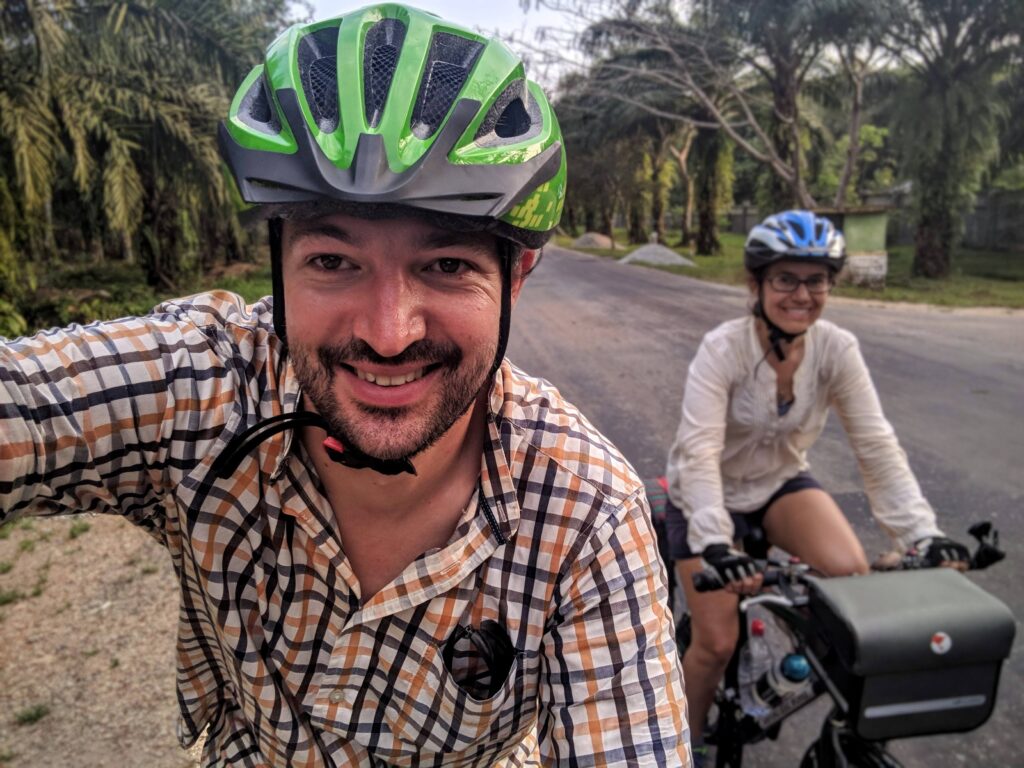
Tried and Tested Useful Tips on How to Prepare for a Long Bike Ride for Beginners

Is it your first time planning a long-distance biking trip ? You cannot just pack your bags and hop on a bike if you are a beginner. You need to consider so many factors to be fully prepared for what’s to come in your travel. This guide covers everything you need to know for a fulfilling biking experience, even if you are a beginner. We have prepared a complete checklist for you to keep in your mind before setting your foot outside. Read on!
If you’re planning a long ride, check out Global Cycling Network tips on Youtube on how to prepare and finish it in style! Check their video out!
Do Your Research
Whenever you plan for a long-distance ride , this question always pops into your head, what to do? And the answer to this question is research. Research where you’re planning to go. Know everything about the place, trail, elevation, time, etc. The best way to do that is by downloading any beginner-friendly mobile app on your phone. There are so many beginner-friendly android and iOS apps like Starve, Bikemap, Google Maps, Ride with GPS , and MapMyRide that make your research easy and breezy. Make sure you’re taking full advantage of them before starting your journey. Don’t just download these apps on your phone to use later. Use them NOW to know how they’re working!
Know Your Stopovers
The next thing to consider is your stopovers. On long journeys, you have to make a list of all the places where you will be stopping for a nap or drink or just resting for a while. It’s equally important to plan your itinerary and study your route as well. For example, if the average cycling distance for beginners is 12 km, you should aim for an 8mph speed. Therefore, the distance between two stops should be 12km for you ideally. We suggest spending some time checking the locations where you will be going on Google Maps. In case you plan on setting up camp, ensure you know all the details about the surrounding areas to avoid any problems.
Bring All the Essentials
If you have no idea what essentials to bring along with you, watch some youtube videos on what stuff to pack for the travel. Keep your stuff to a minimum, though. Any useless items will only add to your load. While you may not feel it when you start the journey, bringing along a lot of items can actually slow down your speed. In case you are traveling alone, bring a cooking set gear, a stove, and a lightweight tent. Similarly, a GPS training watch is one of the essentials. It can help you monitor heart rate, and work as a compass as well as a barometer to stay on the right track. Besides, never go out without a waterproof cycling jacket . You never know when it might rain, and shades aren’t always available.
Prepare Yourself – Mentally & Physically
Long bike rides can be physically taxing. Think about all the pain you might have to go through on the road. Are you capable of enduring all the hardships that come with a long-distance ride? Experts say setting out on a bike ride is 70 percent mental and 30 percent physical, and we fully agree. If your mind isn’t ready and you doubt your physical health, you will carry all the anxiety with you. As a result, you won’t be able to fully enjoy your ride. It’s best to prepare yourself physically and mentally with a cycling schedule before you start your journey. Getting yourself checked by a physician is also a good option to be mentally satisfied with your good health.
Build up the endurance
When you are planning for a long trip, assess yourself. If you think you can jump from an hour ride to six-hour without any physical injury, you are wrong. Before taking a big jump, one has to start with baby steps. So, you have to work on your endurance and build it up gradually.
So, the best thing is to add time to your workout slowly. For instance, if you ride one hour a week, add half an hour to it. This technique will help in the building of your stamina. Keep adding hours to your riding, and eventually, you will have the stamina to ride for 6 hours. Your aerobic capacity will develop during this time.
While training, you can keep a power meter to count your lactate threshold. The lactate threshold is a measure of your anaerobic activity. Cyclists achieve the lactate threshold at 95 percent, close to their maximum heart rate.
For building muscle endurance, you have to do strength-building exercises. Squats and lunges can help you in it. Stretch after every workout to develop stiffness and strength.
SUBSCRIBE TO BIKE HACKS NEWS
Want the best cycling experience? Sign up for the latest bikes, gear, and accessories reviews out there.
By signing up, you agree to our Privacy Policy and European users agree to the data transfer policy
Know Your Food in Long Distance Rides
Food is another important consideration. The human body has the capacity to absorb 60-90 g of carbohydrates in an hour, whereas water requirement depends on the temperature and activity. The body utilizes the energy derived from carbohydrates as fuel.
When riding, you require a good amount of energy. You can add this energy to your body in the form of nutritional supplements such as gums, gels, bars, juices, cereals, jellies, candies, or even liquids. It is of least concern that in what form you are taking them, keep up your stock so that you will not be out of energy during riding.
You can store a good quantity of food on your cycle. However, if you remain on cycle for the whole day, at one point, your stock will eventually end.
Thus , be aware of the food available in the area and what you eat. When planning to have a dine-out, make sure you are not having anything unhealthy. Get yourself used too of eating energy-rich food that may not even taste good to your buds. Any stomach issues will result in delays, can prolong your journey, or even abort it altogether. When you ride, make sure you are drinking plenty of water. Drink as soon as your body tells you it’s thirsty. Delaying can weaken your body. Also, bring a hydrate along with you. During long-distance rides, you’re burning a lot of salts and sugar. Therefore a hydrate can help keep your essential body nutrients in optimum amount.
Prepare your cycle for the long journey!
As it is a famous saying: ‘one who fails to plan, plans to fail.’ So if you are not planning well before going on your cycling journey, you are actually failing. There is always a chance of any fault in the equipment going wrong, so prepare well before going.
Ensure that everything is working in the proper order. Check the health of the tires so that there is no tearing. Make sure that the chain doesn’t need replacement, and that the gears are absolutely fine.
Keep the spare parts with you that you might need on the ride. Pack some spare brake pads, gear cable, and chainlinks with you. They will aid you if any unfortunate circumstance occurs on the way.
Plan to adventure in a Pack
Although it is exciting to go on a solo adventure, if this is your first experience and you are not very sure about it, I recommend you go with the other riders. A pack of riders will keep you motivated, and your chances of success will significantly increase.
Group riding is also beneficial in a way that you will not face any navigation-related issues. If your bike meets any problem, there are people with you to help you out.
Value your body over your mind!
When you are riding, consider the signals your body is giving you. If your body is telling you that now you need rest, abruptly take rest as it may impact your health in the long run.
Sometimes your brain may deceive you and wants to give up even before your body gets tired. In such a situation, you have to motivate yourself slightly and give yourself small targets.
A Good Bike
Finally, the most important gear is your bike. Make sure you have a good mountain bike if you are hiking on a mountainous trail. Train yourself for the long ride by taking multiple small rides every once in a while. Never go with a bike you aren’t already familiar with. You don’t want it to break down in the middle of the road and end your journey abruptly.
Comfort should be your first priority. With a comfortable bike, you can cover long distances with ease and convenience. Many adventure and bikepacking bikes come with multiple sections where you can store your stuff easily. Likewise, tourism bikes have racks and water bottle cages to make sure you have all the supplies you need for the ride.
Steel Vs. Aluminum Bikes
Do people often wonder whether to go for a steel frame bike or an aluminum bike on long trips? We suggest steel bikes over aluminum ones because:
- Steel bikes are stronger
- Steel bikes are also cheaper
- Steel bikes are less likely to bend, deform or warp under your weight
- Steel bikes can carry more load
- Steel bikes are better at absorbing any road vibrations
- Steel bikes are more durable
Bike Components to Consider For a Long Ride
Final thoughts.
So, that’s pretty much all the helpful cycling tips for long-distance biking for beginners. While your rides will mostly be smooth, bad things can happen at any time on long rides. Therefore, you should always hope for the best and plan for the worst. We hope you know how to prepare for a long bike ride with these tips, and you are well prepared if something goes wrong along the way. Besides all the items we suggested above, you should always keep your ID, documents, and some extra cash stashed somewhere apart from your money. That’s all for now. Thank you for reading!
- Legends of the Cycling Track: Profiles of Famous Cyclists
- Bikepacking Guide to Essentials: Gear, Routes, and Tips
- Boat Box Hot Springs: A Biking Destination to Explore
- The Ultimate List Of Bike Packing
- Going On A Bike Trip: Equipment You Must Take

View all results
- Accessories
- Biking Gear
- Electronics
- Exercise Bikes
- Hoverboards
- Mountain Biking
- Skateboards
- Tires and Wheels
- Home & Garden
- Kitchen & Dining
Really Big Bike Ride
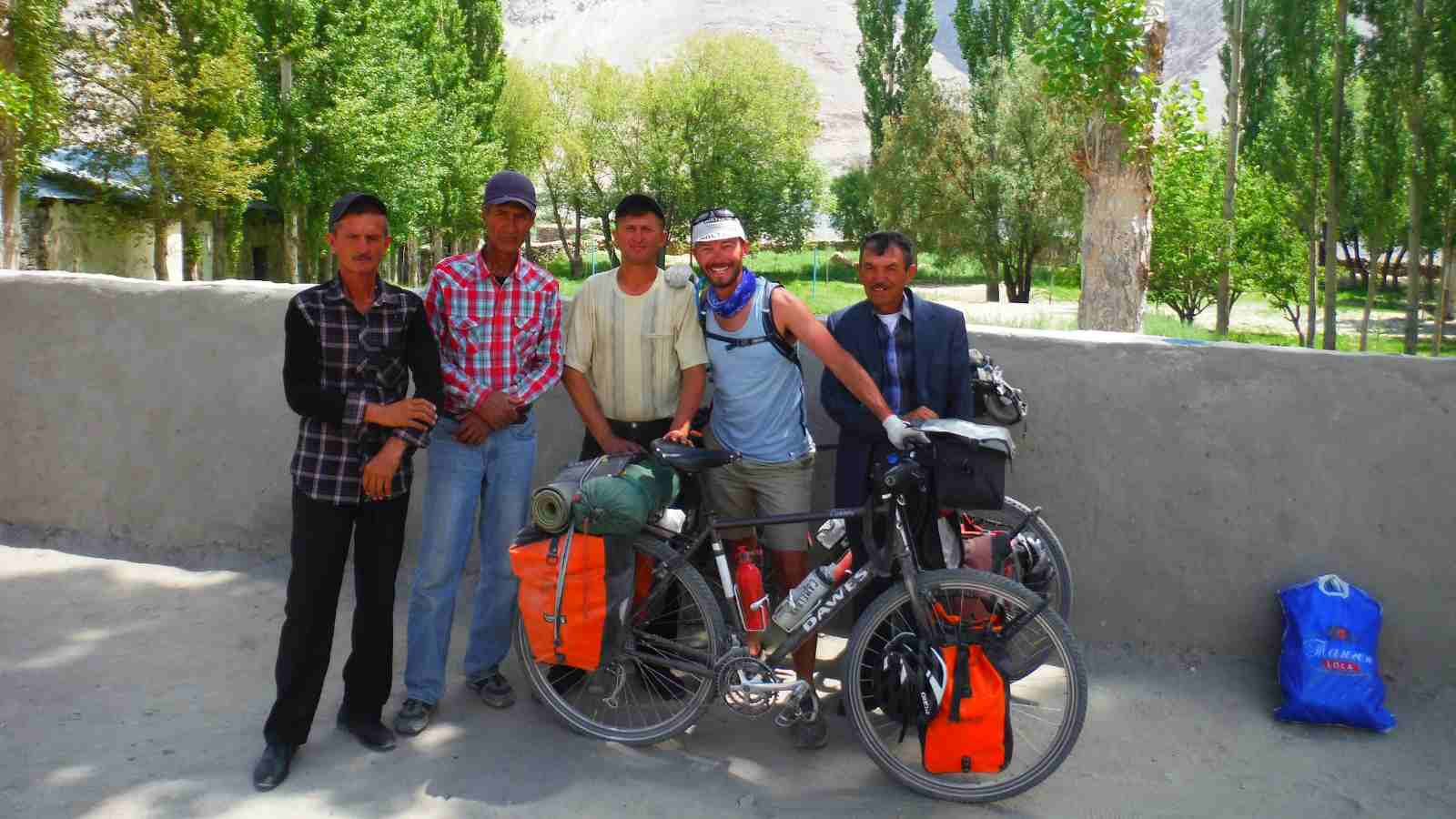
Bicycle Touring Tips, Bike Life And Travel Advice From A Decade On The Road
The distilled wisdom of ten years of bike touring life, cycle touring tips and travel advice from hard-earned miles around the globe.
This article documents my bike touring tips from extensive bicycle travels around the world.
Whether you’re a veteran long-distance cyclist or a bicycle touring beginner , this blog post is here to provide you with invaluable bicycle touring tips, bike travel advice, and bicycle touring inspiration from a decade of bicycle trips.
From getting started as a cycle tourer to choosing the right gear. Overcoming fears and avoiding common mistakes, we’ve got you covered.
In particular, the bicycle touring tips we’ll cover include:
- Beginners Guide To Bicycle Touring
- Bike Set Up for Cycle Touring
- Unsolicited Bike Touring Advice
- Reasons To Go On A Bike Tour
- Who Goes Bicycle Touring
- Is Cycle Touring For You?
Bike Trips We’ve Tried and Loved
- Common Mistakes and Bikepacking Fails
What To Pack On A Bike Tour
- How To Travel With A Bicycle
- How To Budget For A Bike Trip
- Overcoming Fears (Just GO!)
- Inspirational Bicycle Touring Tips (Final Checklist)
But first things first – let’s dive into how to get started as a beginner in cycle touring.

Bicycle Touring Tips And Bike Touring Advice
Getting into cycle touring as a beginner.
Getting into cycle touring as a beginner can be both exhilarating and overwhelming. But fear not, because, with the right mindset and a few key tips, you’ll be well on your way to becoming a seasoned cycle tourer in no time!
Start by choosing the right bike for your adventure. Look for a sturdy, reliable bicycle that is comfortable to ride for long distances. Consider factors such as frame material, tire size, and gear options based on the terrain you plan to conquer.
I chose the Dawes Galaxy because we got a great deal from Spa Cycles . I chose steel because it’s tough yet flexible and easy to repair anywhere in the world with a basic fabricator. Also for our charity bike ride around Europe, we knew it would be the best type of touring bike.
Get fit on the bike
Next, it’s important to gradually build up your fitness level before tackling longer tours. Start with shorter rides close to home and gradually increase the distance over time.
This will not only help prepare your body but also allow you to test out different equipment and make any necessary adjustments along the way.
I commuted for years before I got near a heavy touring bike . I tested kit and found stuff I liked and got used to long hours in the saddle.
Remember, cycle touring is all about embracing the journey rather than reaching a specific destination. So take it slow, enjoy the scenery around you, and most importantly – have fun!
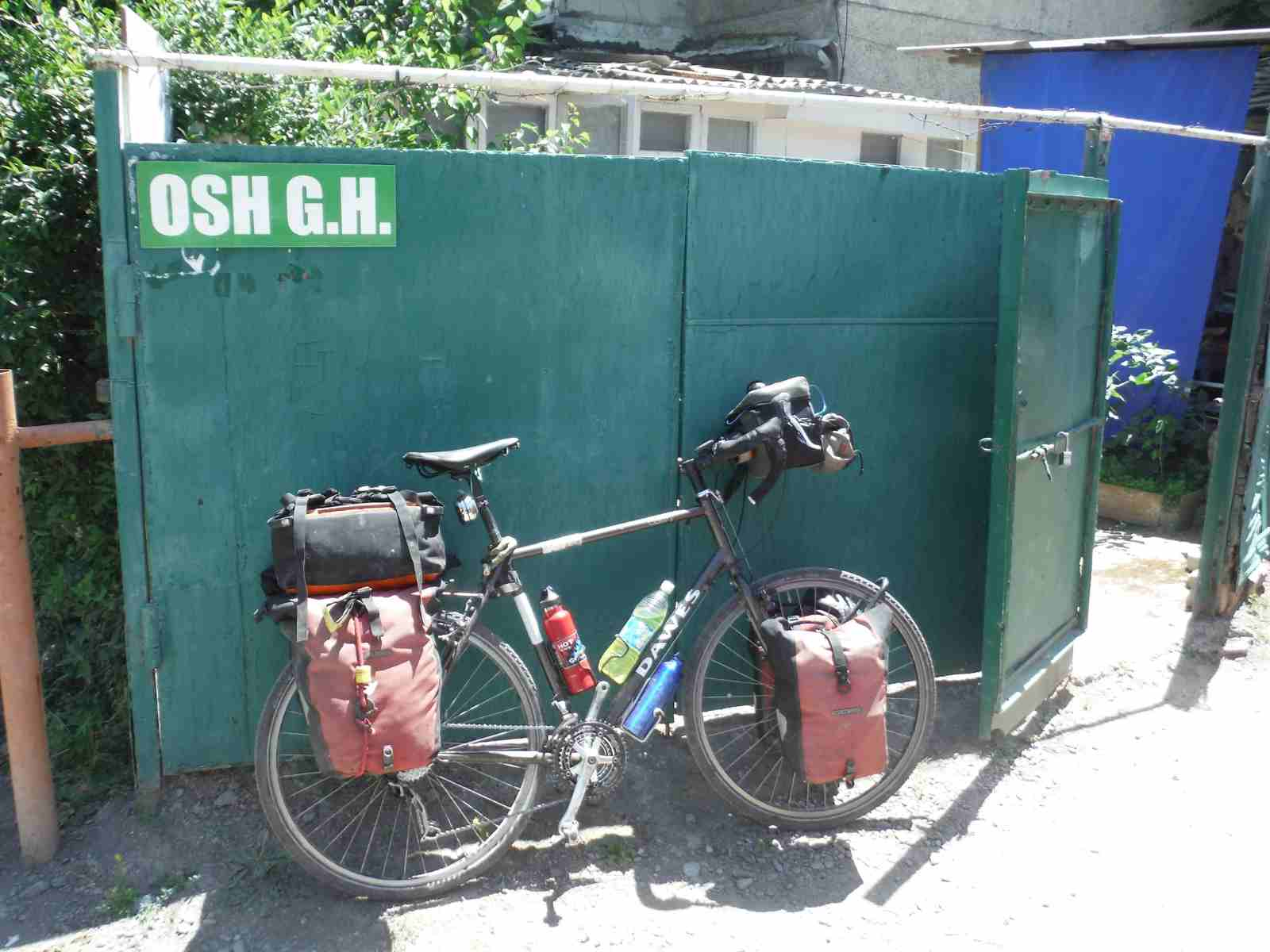
Our Bicycle Touring Tips For Bike Set Up
When it comes to bike touring, having the right set-up is essential for a smooth and enjoyable journey. Over our decade on the road, we’ve fine-tuned our bike set-up to meet our specific needs.
Our bikes are equipped with sturdy Tubus racks that allow us to carry all of our gear without compromising stability. We also use Ortlieb pannier bags that attach securely to these racks.
Front and rear panniers provide ample storage space for clothing, camping equipment, and other essentials.
Additionally, we have invested in comfortable bicycle touring saddles and double-wrapped bar tape to ensure long hours on the saddle don’t leave us sore or fatigued.
A well-thought-out bike set-up can make all the difference in your cycling adventure. So take the time to find what works best for you and your needs before hitting the open road!
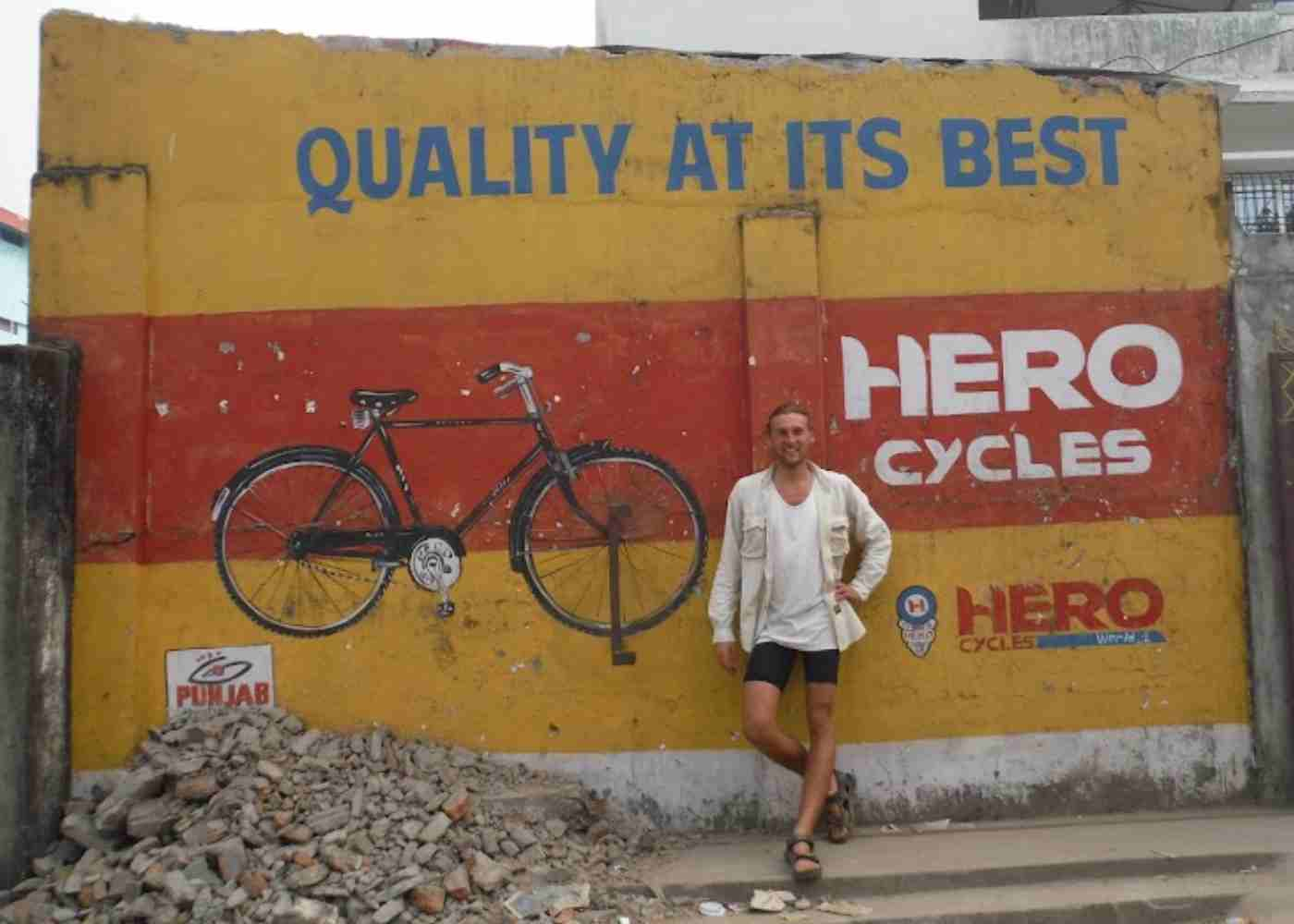
About Cycle Tourers And Unsolicited Bike Touring Advice
Cycle tourers come in all shapes and sizes, from solo adventurers seeking solitude to couples sharing the journey. Some are experienced riders with years of bicycle touring under their belt. While others are newbies looking for a thrilling escape.
What unites them is their love for the open road and the freedom that comes with pedalling through picturesque landscapes.
You’ll meet bicycle tourists from all over the world. Each one with a unique story and reason for embarking on a two-wheeled adventure.
They share a common passion for exploration and a desire to experience life at a slower pace.
Bicycle Touring Tips From Around The World
Whether you’re cycling across continents or exploring your own backyard, being part of this vibrant community will open your eyes to new cultures, forge lifelong friendships, and create memories that will last a lifetime.
Every bicycle touring tip you get is from a personal experience. In that context, my unsolicited bicycle touring advice is to make up your own mind.
Treat bike travel tips and cycle touring advice as a kind of recipe. Enjoy the useful, disregard the rest.
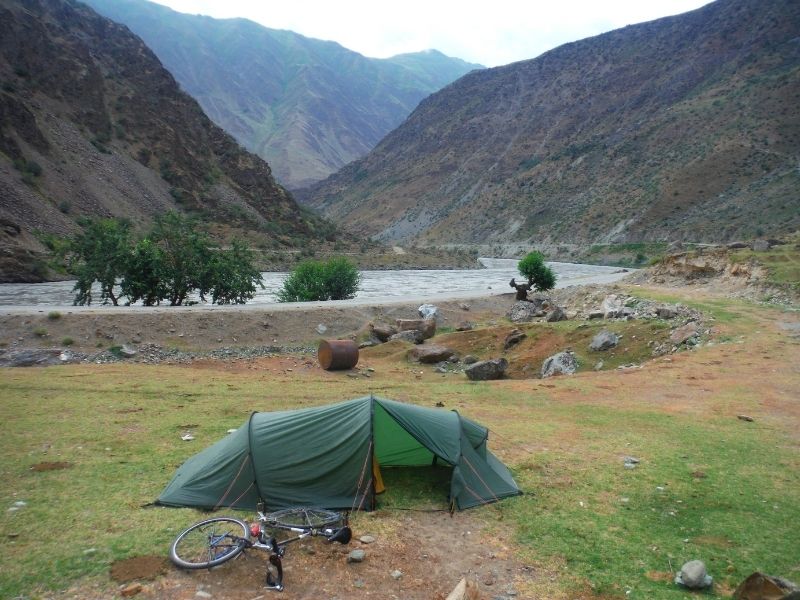
Reasons To Go On A Bike Tour?
Cycle touring offers a unique and exhilarating way to explore the world. Bicycle travel enables you to immerse yourself in nature, connect with local cultures, and experience a sense of freedom that is hard to find elsewhere.
One of the reasons why people choose to go on bike tours is for the feeling of adventure.
There’s something incredibly thrilling about embarking on a journey across vast landscapes, relying solely on your physical strength and determination. Plus, being able to cover long distances at your own pace allows you to truly appreciate the beauty of your surroundings.
Long-distance Bicycle Touring Is Fun
Another reason why bike touring is so appealing is its simplicity. With just your bicycle and some basic gear, you have everything you need for self-sufficient travel.
The minimalist ideals of bikepacking and bicycle touring make it easy to plan and organize your trip. Enabling you to focus on what really matters – enjoying the ride and connecting with both nature and yourself.
So if you’re looking for an unforgettable adventure then consider going on a bike tour. It’s an experience like no other!
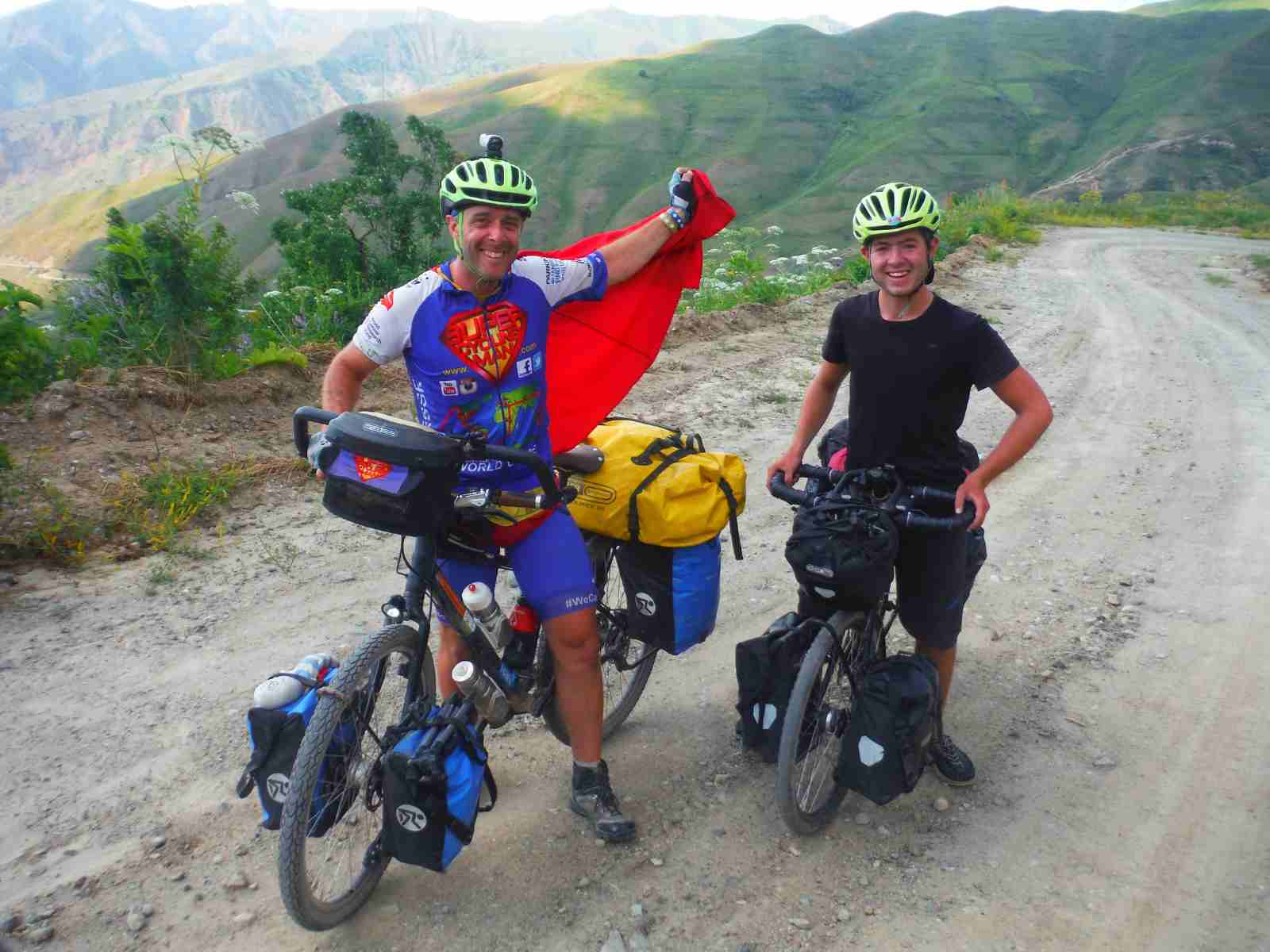
Who Goes Cycle Touring?
Cycle touring is not limited to a specific group of people. It attracts adventurers of all ages and backgrounds, from solo travellers seeking self-discovery to couples looking for a unique bonding experience.
Young backpackers, retirees in search of new horizons, and even families with children are among those who embark on bike tours.
The beauty of cycle touring lies in its versatility. It appeals to both experienced cyclists and beginners who want to try something new.
With the right mindset and preparation, anyone can enjoy the freedom that comes with exploring the world on two wheels.
So whether you’re an adrenaline junkie or simply someone yearning for a slower pace of life, cycle touring welcomes you with open arms.

Is Cycle Touring for You?
Cycle touring is not for everyone, but it can be an incredible adventure for those who are up for the challenge. It requires a certain level of physical fitness and mental resilience. You’ll be spending long hours on the bike, pushing yourself to new limits.
If you enjoy being outdoors, exploring new places at your own pace, and immersing yourself in different cultures, then cycle touring might just be your thing.
Bikepacking and cycle touring offer a unique perspective of the world that you simply can’t get from any other mode of travel.
However, it’s important to consider factors like weather conditions, terrain difficulty, and personal comfort levels before embarking on a bike tour.
So if you’re willing to embrace uncertainty and step out of your comfort zone, then cycle touring could very well be the adventure of a lifetime!

Over the years, we have embarked on countless bike trips that have taken us to breathtaking destinations around the world.
From cycling through the rugged landscapes of the Pamir Mountains to pedalling along picturesque coastal roads in Morocco , each journey has left an indelible mark on our souls.
One particular trip that stands out is our adventure through the stunning countryside of Vietnam . The vibrant colours, bustling markets, and friendly locals made this a truly unforgettable experience.
Another favourite was our tour through Wainwright’s Coast to Coast , where we were captivated by rolling hills, ancient valleys, and mist-covered moors.
Why We Travel By Bike
These bike trips not only enabled us to explore new places but also provided a unique perspective on each destination. They allowed us to immerse ourselves in local culture and interact with people from all walks of life.
There’s nothing quite like feeling the wind against your face as you pedal along remote mountain trails or cycle past iconic landmarks
In short, these bike trips have brought us immense joy and fulfilment. They have taught us valuable lessons about resilience, adaptability, and embracing new experiences. It’s why we travel by bike !
If there’s one thing we can say for certain it’s this: if you’re looking for a thrilling way to discover the world while staying active and connected with nature – bicycle touring is worth considering!

Common Mistakes Bike Travelers Make
One common mistake that many bike travellers make is overpacking. It’s easy to get carried away and want to bring everything you think you might need. A heavy load can quickly become a burden on long rides.
I had to give away a laptop, a heavy-duty bike lock and 15 pairs of socks on my solo Hippe Trail by Bike trip. Instead, focus on packing the essentials and being prepared for different weather conditions.
Another mistake is not doing enough research about the route and terrain ahead of time. It’s important to have an idea of what kind of roads or trails you’ll be riding on.
A general understanding of any political unrest, armed conflicts, or national uprisings can inform your route planning. This will help you plan accordingly and avoid any unnecessary surprises during your journey.
By avoiding these common bikepacking mistakes , bike travellers can ensure a smooth and enjoyable experience on their tours.
So remember to pack light and do your homework before hitting the road!
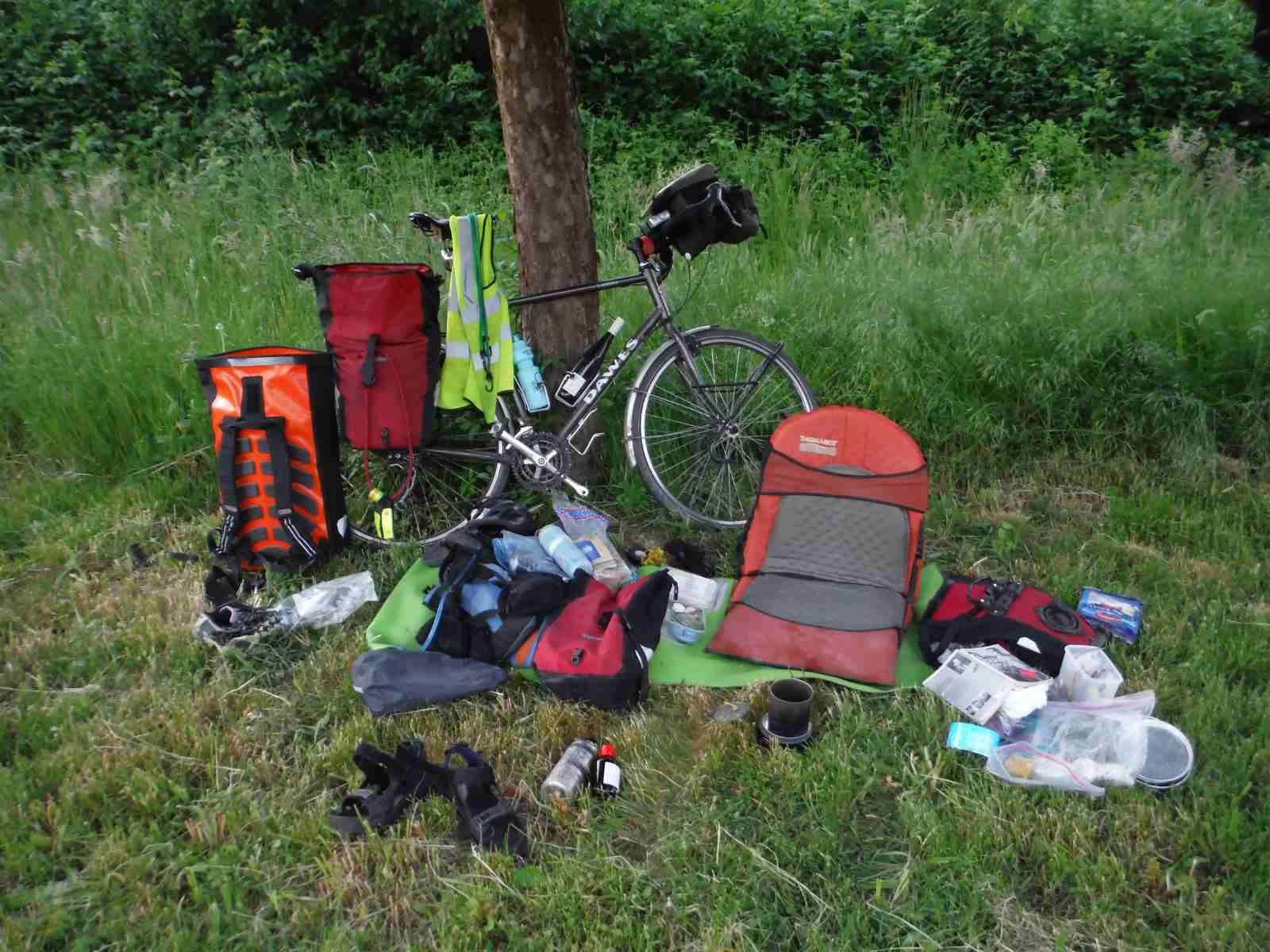
What to pack on a bike tour can be a daunting task. This cycle touring and bikepacking kit list can ensure that you have everything you need without carrying unnecessary weight.
First and foremost, it’s important to have the essentials: spare inner tubes, a pump or CO2 inflator, tire levers, and basic tools for any potential repairs along the way.
Additionally, packing lightweight camping gear such as the best tent in the world or bivvy bag, a super lightweight sleeping bag , and cooking equipment is crucial for overnight stays.
Don’t forget to bring weather-appropriate clothing including rain gear and layers for varying temperatures.
Remember to prioritize items based on necessity rather than convenience to keep your load light and manageable throughout your journey.

What To Wear On A Bike Tour?
Cycle touring clothing.
When it comes to what to wear on a bike tour, comfort and functionality are key. Opt for moisture-wicking clothing that will keep you dry during long rides. Lightweight and breathable materials like merino wool or synthetic fabrics are ideal for regulating body temperature.
Layering is important, as weather conditions can change throughout the day. Start with a base layer that wicks away sweat, add a mid-layer for insulation, and top it off with a windproof and waterproof outer shell. Don’t forget to protect your extremities – invest in padded cycling shorts, gloves for grip and protection, sunglasses for eye protection from debris or UV rays, and sturdy cycling shoes with cleats for efficient pedalling.
Remember: pack light and practical!

Camping & Cooking Kit List
When embarking on a bike tour, having the right camping and cooking gear is essential. We’ve learned this through years of experience on the road.
Do you really need a stove and cookset?
While for ultra-long bicycle expeditions, a stove and camping cookset make for a useful companion, it may not be essential.
I barely used a stove on my solo multi-month bike trip. In Southeast Asia and India, it’s easy and preferable to eat at the side of the road. Dry foods, salami, nuts, seeds, fruits and jelly sweets are handy to carry as snacks.
However, in Central Asia, I used the stove at least daily to prepare an evening meal. Ingredients were hard to find but given the expansive distances from settlements, it was a bonus to have a hotel meal on the fly.
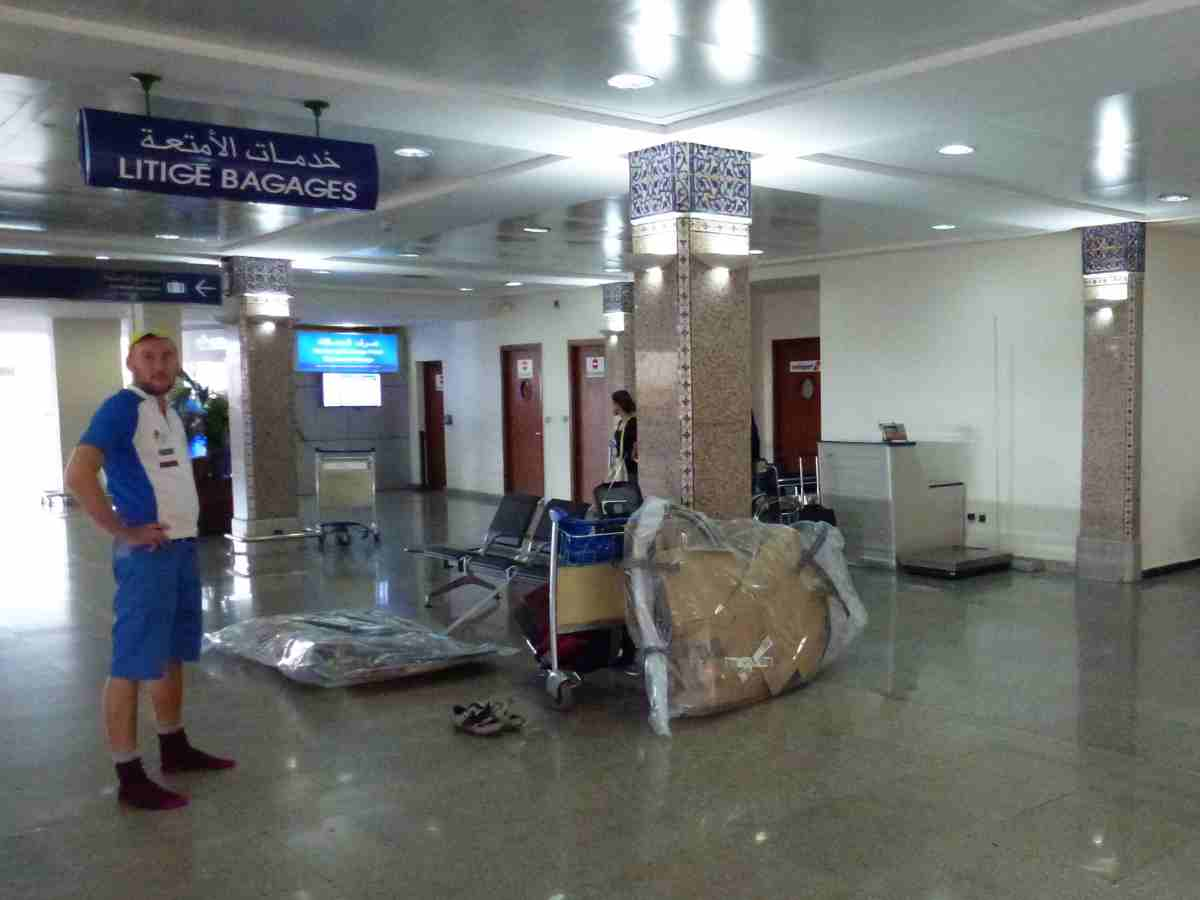
How To Fly With A Bicycle If You Have To
Ideally, you’ll leave from our front door fully loaded and ready to go. Cycle to a ferry port and you’ll access the next available landmass.
Alternatively, there are various options available. If you have to fly, a bike bag or box for air travel is handy. A cardboard box is best to protect your bike in transit. The see-through bags are liable to damage the bike in my experience. A new box can be found on the return leg.
Make sure all loose parts are removed or tightly secured. Remove the pedals, tuck the drop bars under the frame and remove the front wheel. Store the wheel next to the frame with a cable tie. Leave the bike in the lowest cog on the cassette. This leaves the derailleur compact for travel.
Don’t forget to pack essential tools and spare parts for any potential repairs that may arise during your journey.
Once abroad, it’s possible to put your bike on all kinds of transport. Huge trains in India, speedboats in Europe, and big trucks in Tajikistan.

How To Budget For A Bicycle Tour
When it comes to planning a bicycle tour, budgeting is an essential aspect that can greatly impact your experience. So how do you go about budgeting for a bike tour? Here are a couple of veteran bicycle touring tips to help you get started.
Consider your daily expenses such as accommodation, food, and transportation. Research the average costs in the countries or regions you’ll be visiting and factor them into your budget. Don’t forget to account for any visa fees or travel insurance costs as well.
In Asia, I travelled on $10 a day which at the time was about £6. Most of that was spent on food.
Think about one-time expenses like purchasing or renting gear and equipment. Determine what items are necessary for your trip and research their prices beforehand. It’s also worth considering any potential repairs or maintenance that may come up during the tour.
By carefully planning and estimating your expenses ahead of time, you can ensure that you have enough funds to fully enjoy your bicycle tour without breaking the bank.
Remember, every cyclist has different priorities when it comes to spending money on their journey – so find what works best for you!
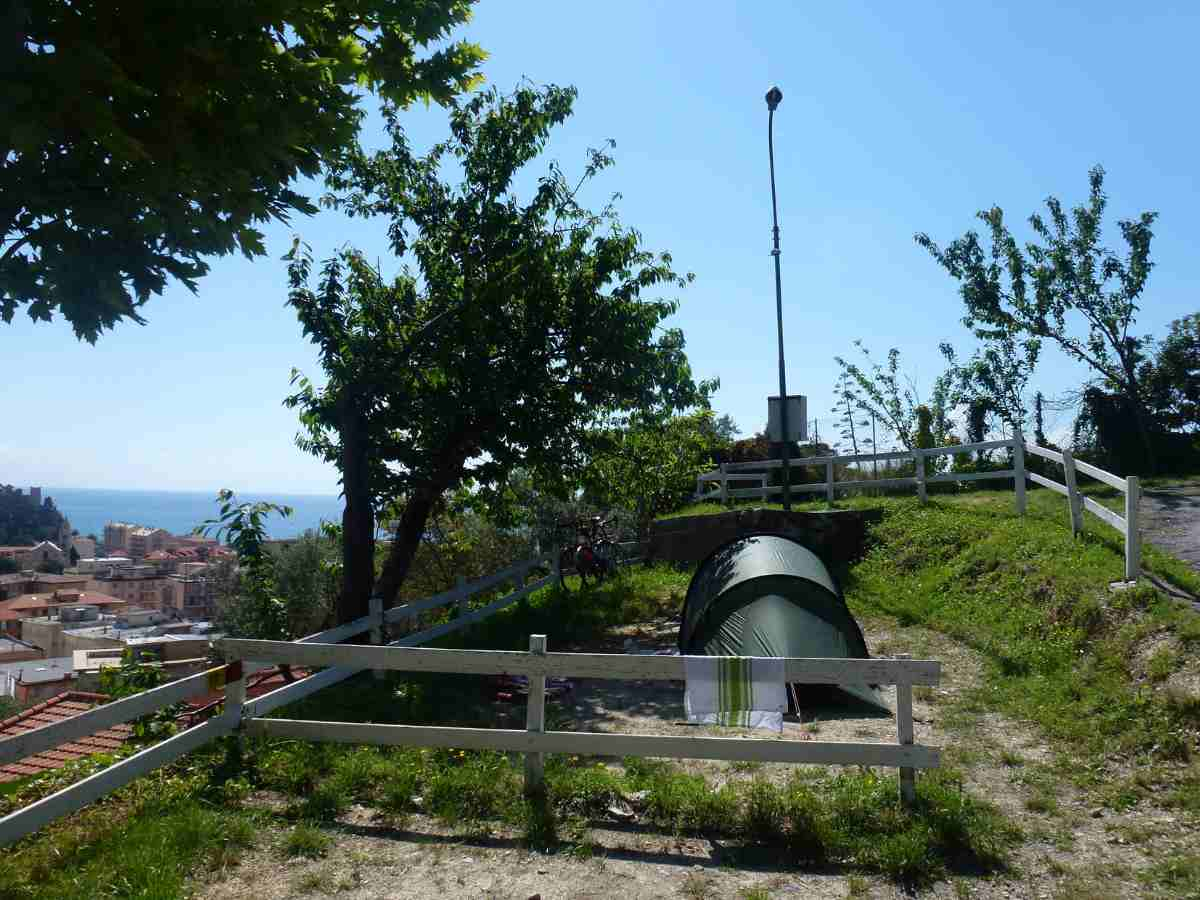
Overcoming Fears: The Ultimate Bike Touring Advice
When embarking on a bicycle tour, it’s natural to have fears and doubts. Will I be able to handle the physical demands? What if something goes wrong?
But here’s the thing – fear is just an illusion that can hold you back from incredible experiences. Pushing through those fears is where growth happens.
Fear is just an illusion
One of our last thoughts before setting off on each tour is always gratitude for the opportunity to explore new places by bike.
It’s a reminder to savour every moment, even when faced with challenges or setbacks along the way. Embrace the unknown, push past your comfort zone, and trust in your abilities – you’ll come out stronger on the other side!

Inspirational Bicycle Touring Tips Before You Go
Bicycle touring is not just a hobby or a vacation; for some, it’s a way of life. It opens up new possibilities, pushes boundaries, and connects you with the world in ways that other forms of travel simply cannot match.
As we come to the end of this article, I hope that my experiences and bicycle touring tips have sparked your curiosity and ignited your wanderlust.
Here are some final words of bike travel advice to inspire and guide you on your cycle-touring adventures.
Bicycle Touring Tips Checklist
- Embrace the journey: The true beauty of bicycle touring lies in the unexpected moments, chance encounters, and serendipitous detours along the way. Be open to new experiences and embrace them wholeheartedly.
- Take it slow: Remember that cycle touring is not a race against time. It’s an opportunity to savour each moment at your own pace. Enjoy leisurely rides through picturesque landscapes, stop for coffee breaks in quaint villages, and take time to immerse yourself in local cultures.
- Connect with fellow cyclists: The cycling community is vast and supportive around the world. Whether online through cycle touring resources or on the road, reach out to other cyclists. Bike travel advice, camaraderie, or even potential travel companionship is possible.
- Stay flexible: Inevitably things won’t always go according to plan – weather conditions may change abruptly or unforeseen circumstances may arise – but adaptability is key when bicycle touring. Embrace these challenges as part of the adventure!
- Keep learning: There will always be more skills to acquire and knowledge to gain when it comes to bike travel – from basic maintenance skills like fixing a flat tire to navigating unfamiliar territories using maps or GPS devices .
- Take care of yourself: Remember self-care during long days in the saddle – stay hydrated, eat well-balanced meals, and give your body enough rest to prevent burnout and injury. Listen to your body and know when it’s time to take a break.
- Leave no trace: As responsible travellers, it’s important to leave the places we visit as we find them, if not better. Dispose of waste properly and respect local customs and cultures.
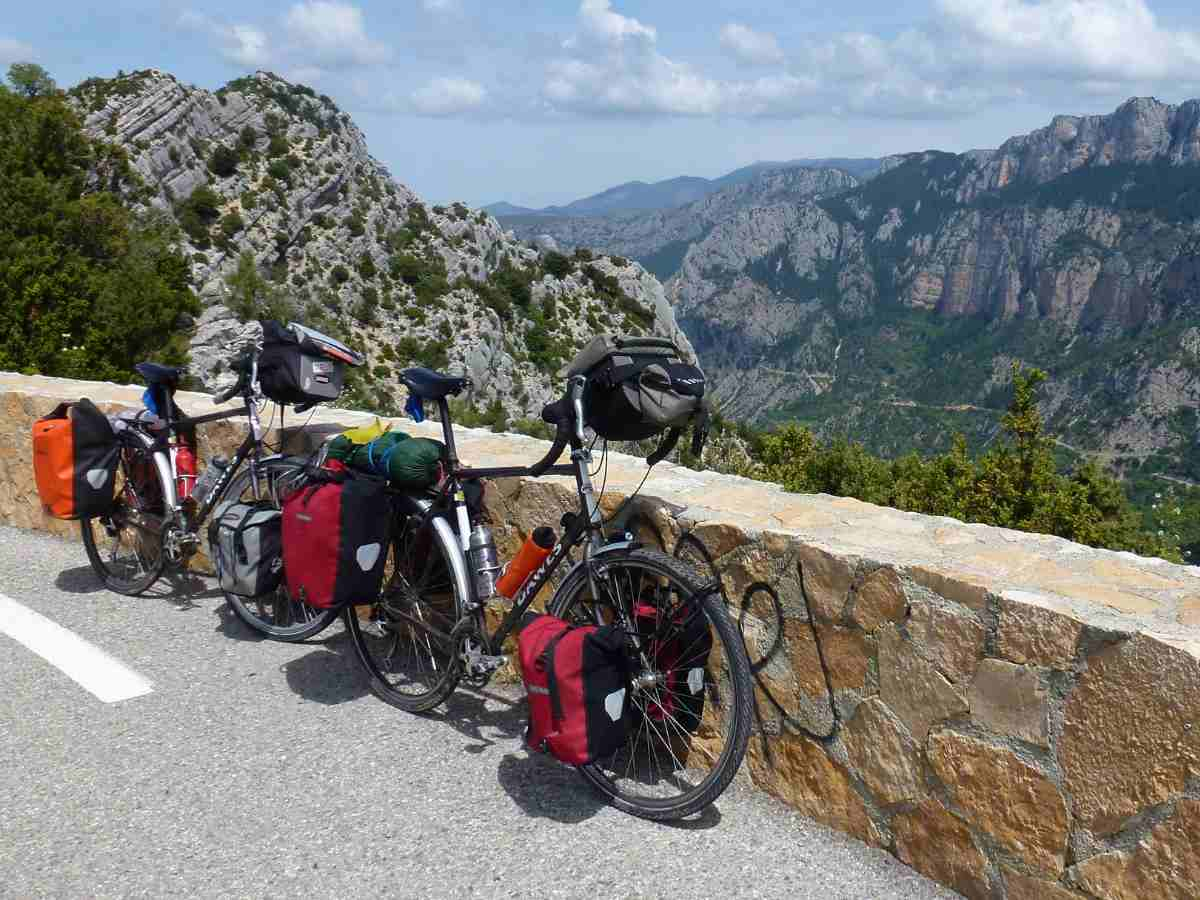
If there’s one thing I’ve learned from our decade on the road, it’s that bicycle touring is as much about mindset as it is about physical stamina.
Cycle with a smile and the world will feed you noodles, get you drunk on xeo and offer you a bed for the night.
Magick happens on the road. Embrace it with an open heart and you’ll be grand.

Long Distance Bike Touring (10 Things Checklist)
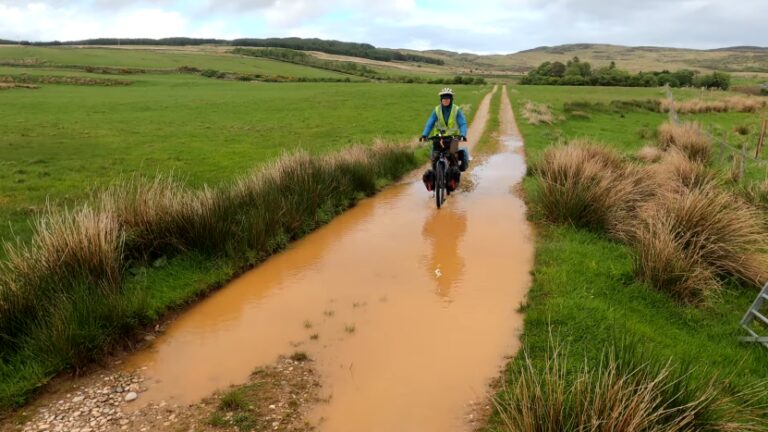
If you’re looking for an adventure that will take you to new places and challenge you in new ways, long distance bike touring is definitely for you. This type of biking involves riding your bike for extended periods of time, often over multiple days or even weeks.
It’s a great way to explore new areas, meet new people, and challenge yourself physically and mentally.
Long Distance Bike Touring
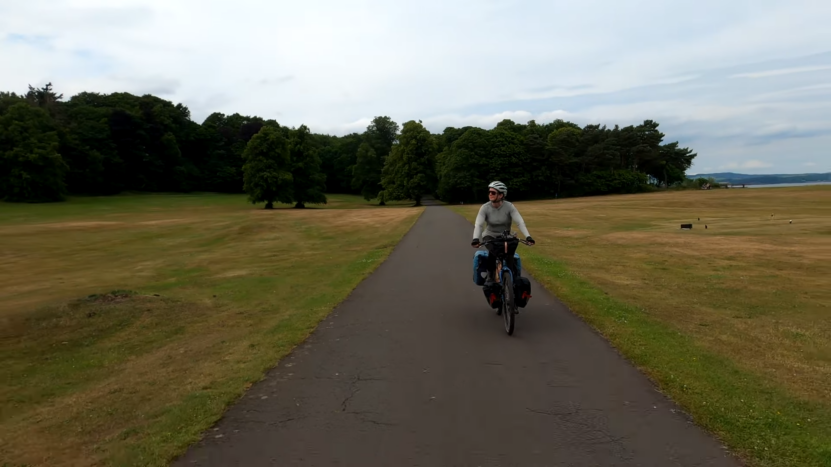
Long distance bike touring is an amazing way to see the world. You can go at your own pace, and stop whenever and wherever you want. It’s a great way to get some exercise, and it’s also a great way to meet new people and see new places.
There are a few things you should keep in mind if you’re thinking about long distance bike touring. First, you need to be in good physical shape. Long distance bike touring can be taxing on your body, so it’s important to make sure you’re up for the challenge.
Second, you need to be prepared mentally. Long distance bike touring can be lonely at times, and it’s important to be able to stay positive and motivated. Finally, you need to be prepared logistically. Long distance bike touring can be difficult to plan, so it’s important to do your research and make sure you have everything you need.
Long Distance Touring Tips
When it comes to long distance touring, there are a few key things to keep in mind to make the most of your trip. Here are a few tips:
When planning a long distance tour, it’s important to do your research and plan ahead as much as possible. This means booking your accommodation and transportation well in advance, and familiarizing yourself with the route you’ll be taking.
One of the most important tips for touring long distance is to pack lightly. This will make it much easier to get around and enjoy your trip. Bring only the essentials, and plan to wash your clothes along the way.
When touring long distances, it’s important to stay hydrated . Drink plenty of water throughout the day, and carry a water bottle with you.
When touring long distances, it’s important to take breaks often. This will help you avoid fatigue and stay refreshed. Find a nice spot to rest every few hours, and take the opportunity to explore your surroundings.
The weather can be unpredictable, so it’s important to be prepared for changes when touring long distances. Pack appropriate clothing, and keep an eye on the forecast. By following these tips, you can help ensure that your long distance tour is a success! With a little planning and preparation, you can enjoy a great trip.
Long Distance Touring Bike Gears
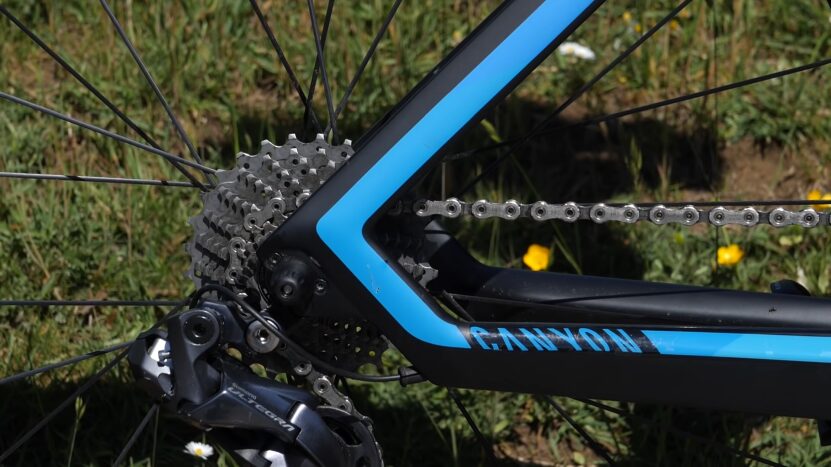
When it comes to gear on a long distance touring bike, there are a few things to keep in mind. First, you’ll want a wide range of gears to help you tackle any terrain. Second, you’ll want gears that are durable and can stand up to the rigors of long-distance riding.
If you’re considering fixed gear bikes , it’s essential to evaluate their suitability for varying terrains and long rides, ensuring they align with your touring preferences. And finally, you’ll want gears that are easy to maintain and adjust. To help you choose the best gear for your long-distance touring bike, we’ve put together a few tips.
1. Choose a Wide Range of Gears
When it comes to gear, you’ll want a wide range to be able to tackle any terrain. A good range of gears will have low gears for climbing hills and high gears for pedaling on flat ground.
2. Choose Durable Gears
Long-distance riding can be tough on your bike, so you’ll want to choose gears that are built to last. Durable gears will be able to stand up to the rigors of long-distance riding and won’t need to be replaced as often.
3. Choose Easy-to-Maintain Gears
Long-distance touring can be hard enough without having to worry about your gears. Choose gears that are easy to maintain and adjust so you can focus on the ride, not your bike.
Following these tips, you’ll be able to choose the best gear for your long-distance touring bike. With the right gears, you’ll be able to tackle any terrain and enjoy a comfortable, efficient ride. Long-distance touring doesn’t have to be difficult, so make sure you have the right gear!
4 Things to Look for In a Touring Bike
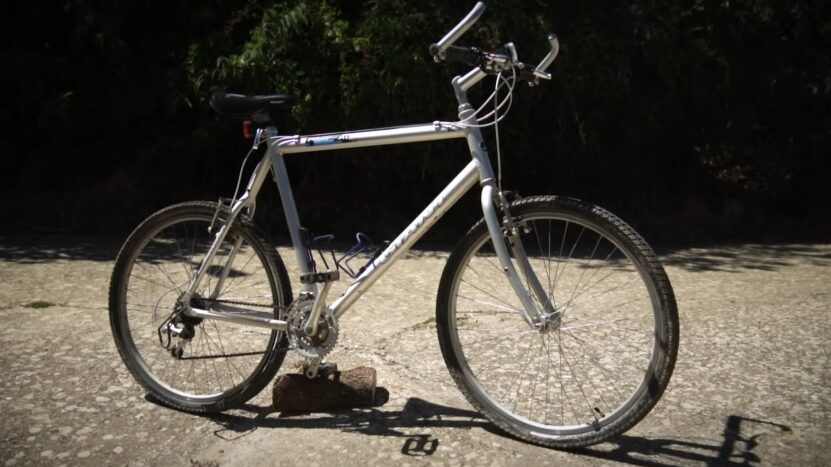
When shopping for a touring bike , there are several things you’ll want to keep in mind. First and foremost, you’ll want a bike that’s comfortable for long rides. This means a bike with a good saddle and plenty of gearing options so you can spin easily on flat terrain and grind up hills.
You’ll also want a touring bike that’s durable and can carry a lot of gear, as you’ll likely be doing some extended camping on your tours. And finally, you’ll want a bike with good components that can stand up to the rigors of touring. Here are some things to keep in mind when shopping for a touring bike.
A good touring bike should have a comfortable saddle and plenty of gearing options. You’ll be spending a lot of time in the saddle, so it’s important to find one that’s comfortable for you. Additionally, having a wide range of gears will allow you to spin easily on flat terrain and grind up hills.
2. Durability
A touring bike needs to be able to withstand a lot of abuse. It will likely be loaded down with gear, and you’ll be riding it for long distances over rough terrain. Look for a bike with a durable frame and good components that can stand up to the rigors of touring.
3. Components
When shopping for a touring bike, pay close attention to the components. You’ll want a bike with good quality brakes, gears, and tires that can handle the demands of touring. Additionally, it’s important to find a bike with a suspension system that can smooth out the bumps on rough roads.
Consider the trade-offs between hardtail and full suspension designs , as each has its advantages depending on the type of terrain you plan to encounter during your tours.
Touring bikes can be expensive, so it’s important to set a budget before you start shopping. However, keep in mind that you get what you pay for when it comes to bikes. If you’re serious about touring, it’s worth investing in a good-quality bike that will be comfortable and durable enough to handle the demands of long-distance riding.
Bike Touring Gear Checklist
A bike that is comfortable for you to ride is a must. You’ll be spending a lot of time in the saddle , so make sure it’s a good fit. You may also want to consider getting a bike with front and rear racks to help carry your gear.
2. Panniers or Saddlebags For Touring
These are bags that attach to your bike and hold your belongings. They come in a variety of sizes, so you can choose what works best for you.
3. Tent For Touring
A tent will provide you with a place to sleep at night. Make sure to get one that is lightweight and easy to set up.
4. Sleeping Bag
A sleeping bag will keep you warm at night. Choose one that is rated for the temperature range you’ll be riding in.
5. Bike Tools and Spare Parts
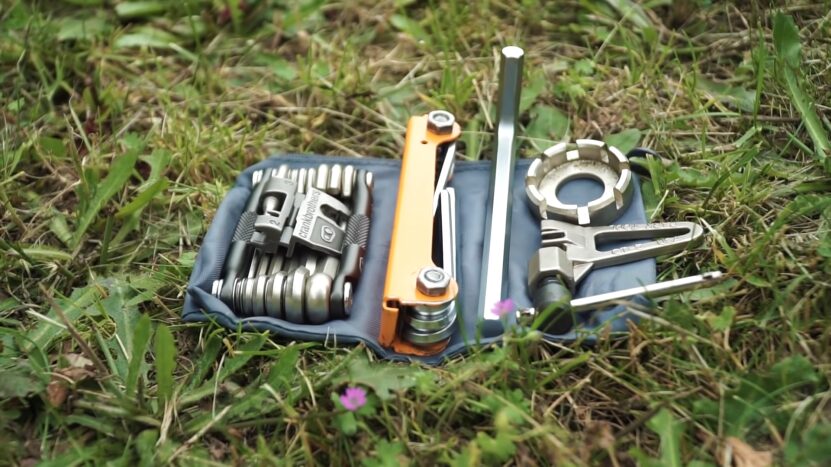
It’s always a good idea to carry a few basic bike tools and some spare parts with you on your tour. This way, you can fix any minor problems that come up.
6. Clothing
You’ll need to pack some clothes for your tour. Make sure to bring items that are comfortable and easy to ride in. You’ll also want to pack some rain gear, just in case.
7. Food and Water
You’ll need to bring enough food and water to last you for the duration of your tour. Make sure to pack plenty of snacks and easy-to-prepare meals.
8. First-Aid Kit
A first-aid kit is a must in case of any minor injuries. Be sure to include items like bandages, antibiotic ointment, and pain relievers.
9. Bike Lights
Bike lights are essential for safety when riding at night or in low-light conditions. Make sure to get a front and rear light, and keep them charged during your tour.
A map will help you navigate your way during your tour. Be sure to get one that covers the area you’ll be riding in. Following these tips, you can be sure to have a safe and enjoyable bike tour.
Training for Long Distance Bike Touring
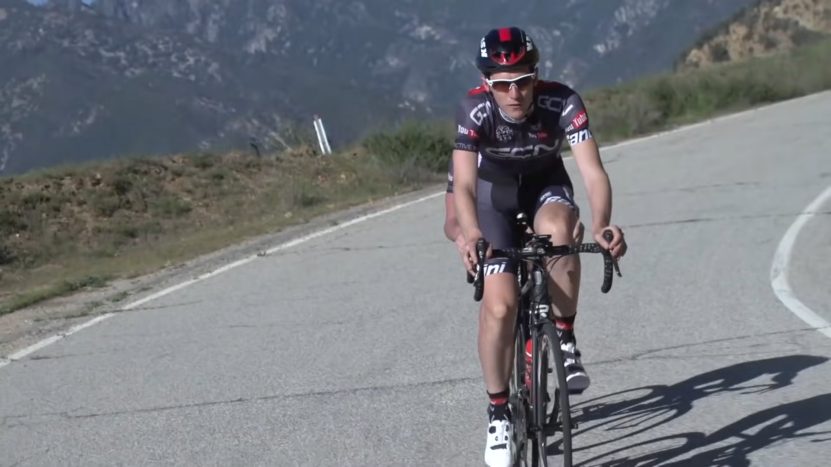
Training for a long distance bike tour can be daunting, but with a little planning and preparation it doesn’t have to be. Here are a few things to keep in mind as you begin your training:
Start Early
The earlier you start training, the better prepared you’ll be come tour time. Not only will your body be in better shape, but you’ll also have more time to build up your endurance.
Build Gradually
Don’t try to do too much too soon. Training for a long distance bike tour is a gradual process. Start with shorter rides and gradually increase the distance and intensity over time.
Train Specifically
When it comes to training, specificity is key. That means that you should focus on exercises that are specific to biking. Training your legs , lungs, and heart will pay off come tour time.
Get Plenty of Rest
It’s important to get enough rest when you’re training for a long distance bike tour. Your body needs time to recover from all the exercise. Make sure to take at least one day off per week to rest and allow your body to recover.
Stay Motivated
Training for a long distance bike tour can be tough, so it’s important to stay motivated. Set goals and reward yourself for reaching them. Find a training buddy or join a biking group to help keep you motivated.
With a little planning and preparation, training for a long distance bike tour can be a fun and rewarding experience. Just remember to start early, build gradually, train specifically, and get plenty of rest. And most importantly, stay motivated!
Which Bike Is Best for Long Distance Touring?
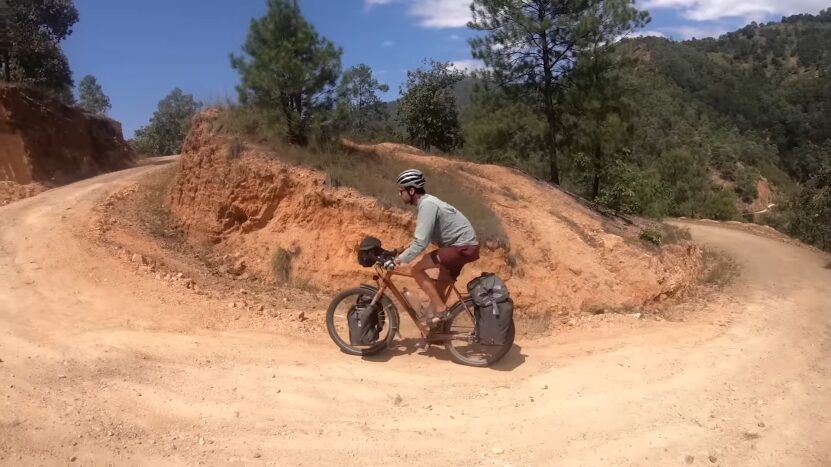
There are many different factors to consider when choosing the best bike for long distance touring. Some of the most important considerations include the type of terrain you’ll be riding on, the weather conditions you’ll be riding in, and your own personal preferences.
Some bikes are better suited for long distance touring than others. For example, road bikes are generally faster and more efficient on paved surfaces, while mountain bikes are better suited for rough terrain.
There are also hybrid bikes that combine features of both road and mountain bikes, making them a good option for riders who want to be able to tackle both types of terrain.
The weather conditions you’ll be riding in can also influence your choice of bike. If you’ll be riding in cold or wet conditions, you’ll want a bike with good tires and brakes that can handle those conditions. If you’ll be riding in hot weather, you might want a bike with features like built-in water bottle holders to keep you hydrated.
What Is the Longest Distance for A Biking Trip?
It depends on a number of factors, such as the type of bike, the terrain, the weather conditions, and the rider’s fitness level. However, some experts estimate that the longest distance that can be reasonably covered in a day by an average rider is between 60 and 100 miles.
Of course, there are always exceptions to this rule, and some cyclists have been known to cover much greater distances in a single day. However, it is important to remember that these riders are usually experienced and well-conditioned athletes who have trained specifically for such an event.
For the average person, a distance of 60-100 miles is a more realistic goal.
What Type of Bike Is Best for Touring?
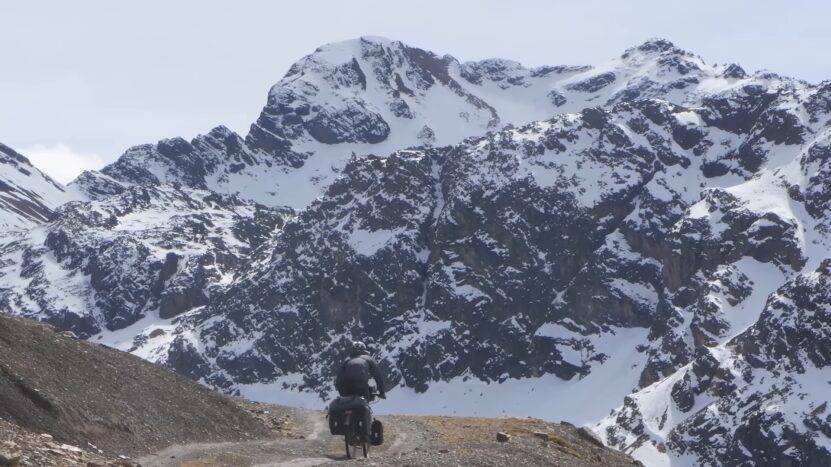
The best option for you will depend on a number of factors including your budget, riding style, and the type of terrain you’ll be covering on your tour. However, some of the most popular types of bikes for touring include road bikes, mountain bikes, and hybrid bikes .
If you’re looking for a bike that is built specifically for touring, then a road bike is likely your best bet.
Road bikes are designed for speed and efficiency, and they typically have lighter frames and narrower tires than other types of bikes. This makes them ideal for covering long distances on paved roads.
However, road bikes can be less comfortable to ride for long periods of time, and they may not be well-suited for touring on rougher terrain. Mountain bikes are another option for touring, and they can be a good choice if you’re planning on doing some off-road riding.
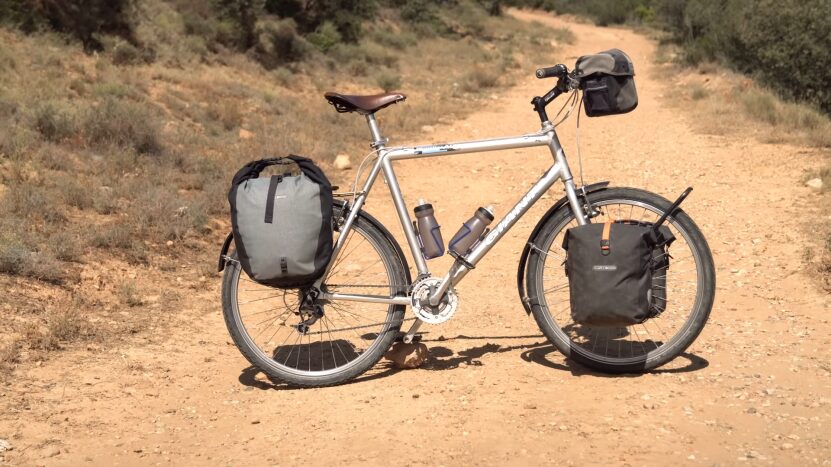
Mountain bikes have thicker tires and sturdier frames than road bikes, making them better suited for riding on rough or unpaved surfaces. They also tend to be more comfortable riding, thanks to their upright riding position. However, mountain bikes can be heavier and harder to pedal than road bikes , making them less ideal for long-distance touring.
Finally, hybrid bikes are a popular option for those who want the best of both worlds. Hybrid bikes combine features from both road and mountain bikes, giving you a bike that is comfortable to ride and capable of handling a variety of terrain. However, hybrid bikes can be more expensive than either road or mountain bikes, so they might not be the best option if you’re on a tight budget.
No matter what type of bike you choose, make sure that it’s comfortable for you to ride and that it’s suitable for the type of touring you have planned. With a little bit of research, you should be able to find the perfect bike for your next tour.
After a long day of cycling, there’s nothing better than reaching your destination and collapsing into your tent or sleeping under the stars. Long distance bike touring is an amazing experience that allows you to see the world in a unique way. It’s not for everyone, but if you’re up for the challenge, it’s definitely worth it!
Related Posts:
- Are BMX Bikes Good For Long Distance (8 Detailed Answer)
- Are Hybrid Bikes Good For Long Distance? (Explained)
- Touring Bike Speed (How Fast Touring Bike Can Go)
- Bicycle Touring For Beginners - 8 Bike Touring Tips
- What Are Best Touring Bikes? - 11 Touring Bikes Explained
- Bike Saddle For Touring (3 Things to Consider)
Gear-obsessed editors choose every product we review. We may earn commission if you buy from a link. How we test gear.
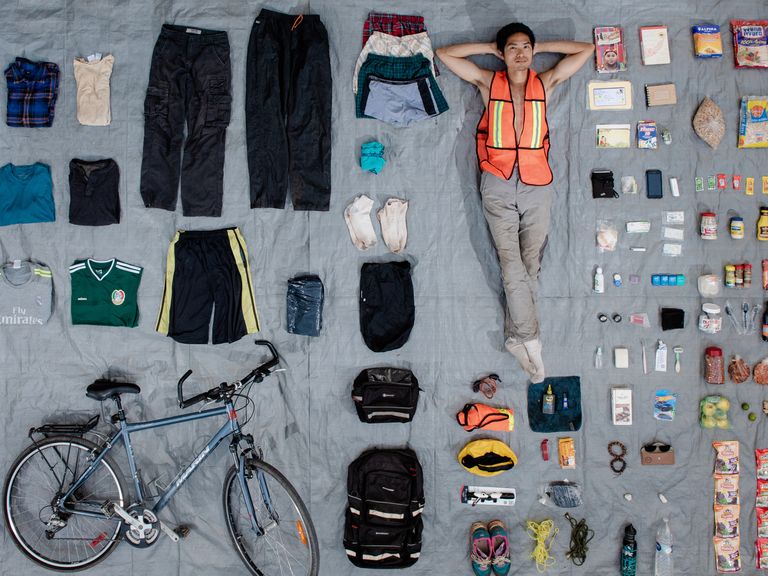
Check Out What These Cyclists Packed for a Long-Distance Bike Trip
From the practical to the sentimental, what we carry on the bike says a lot about who we are
After hosting more than 100 cyclists, and having three amazing long-distance bicycle experiences myself, I realized there are so many different ways that people set up their bicycles and gear for touring.
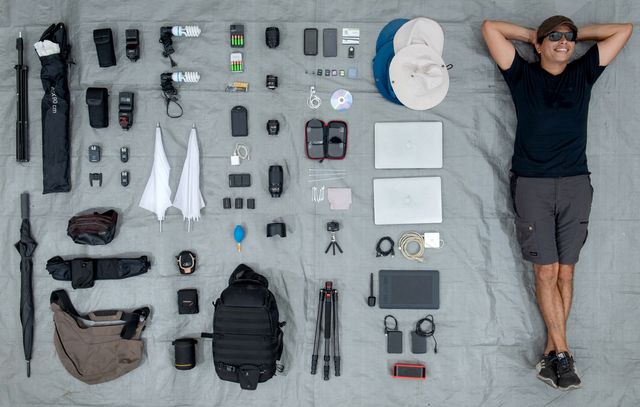
Using my photography, I wanted to show the different ways cyclists travel, what they carry, what is important for them and, most of all, I wanted to demonstrate how anyone can go places on a bicycle.
I started this photo project in February 2019. As a graphic designer and photographer, I liked how the grid format displays all the items in an organized way. I use a DSLR Nikon D750 with a 24-70 2.8 lens and two remote flashes. So far, I have photographed 22 participants. Here are 11 of them.
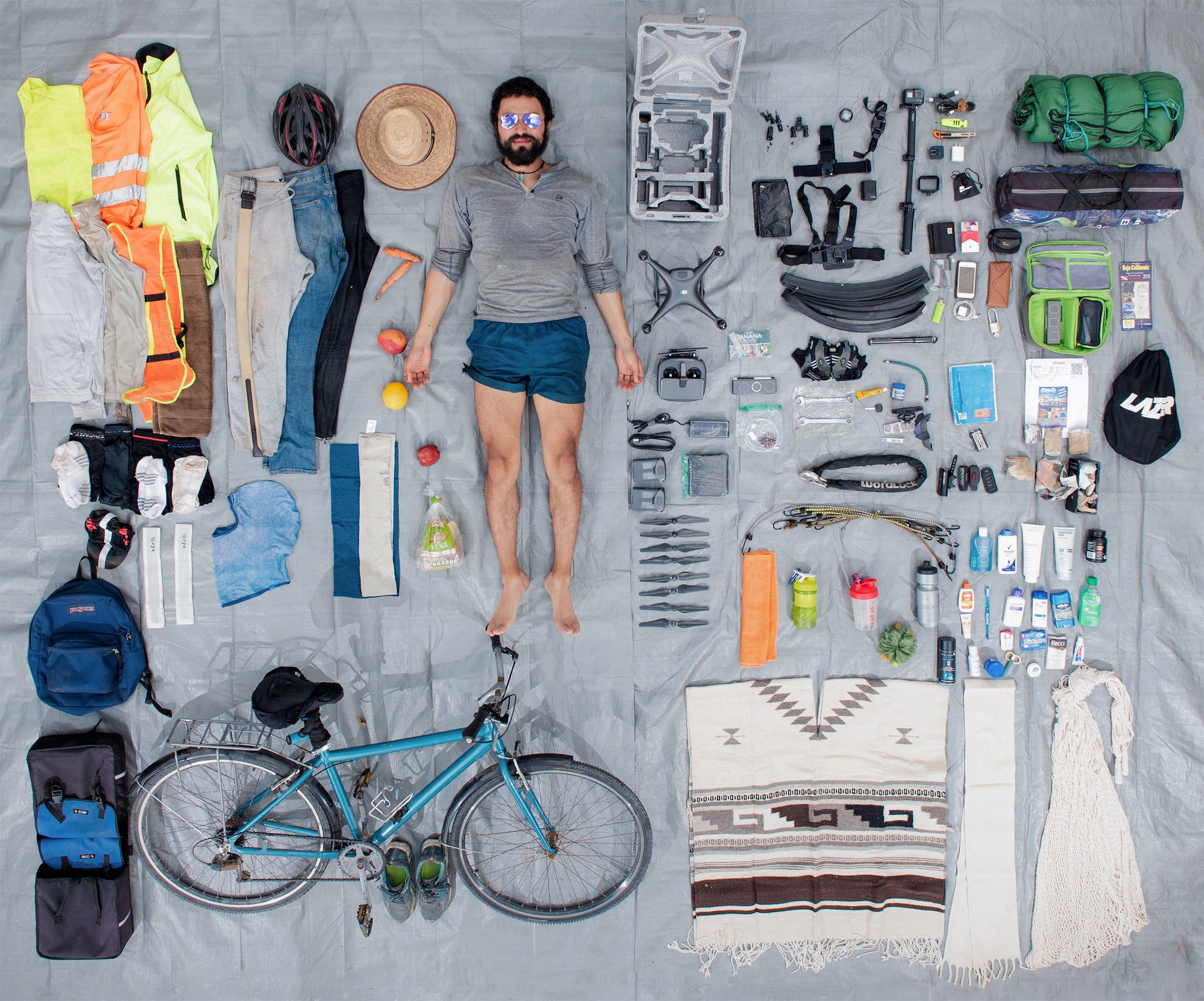
José Luis Osornio Ramírez
29 | San Luis Potosí, Mexico | Rides a seven-speed urban bike
I got the idea to ride Mexico end to end unsupported when I was on a ride in early 2019 and my gear cassette broke. It was Sunday afternoon and there were no bike shops to save me. I had to go home pushing myself on a skateboard.
My holidays were approaching, I had money saved, and the support of my family. Four weeks later, I got off the plane in Tijuana. I did not believe it. It seemed absurd and impossible. What am I going to do now? I wondered. I will pedal until I become sand that dries between the toes of Mexico.
In all the forums I read, the same advice was repeated: Travel light. However, I decided to travel heavy because I wanted to strengthen my legs. Everything was meticulously selected. I paid close attention to covering my skin. In order not to get sunburned, I wore two pants, clothes with UV50 protection, gloves, and glasses for hot days on the beach. Though I had never used saddlebags, they became a wonderful ally. My action camera was always at hand even though I didn’t use it very often. What fascinated me the most to use was the drone. When you reach the end of a road, the drone takes you further. I made it 5,000km from Tijuana to Playa del Carmen in four months.
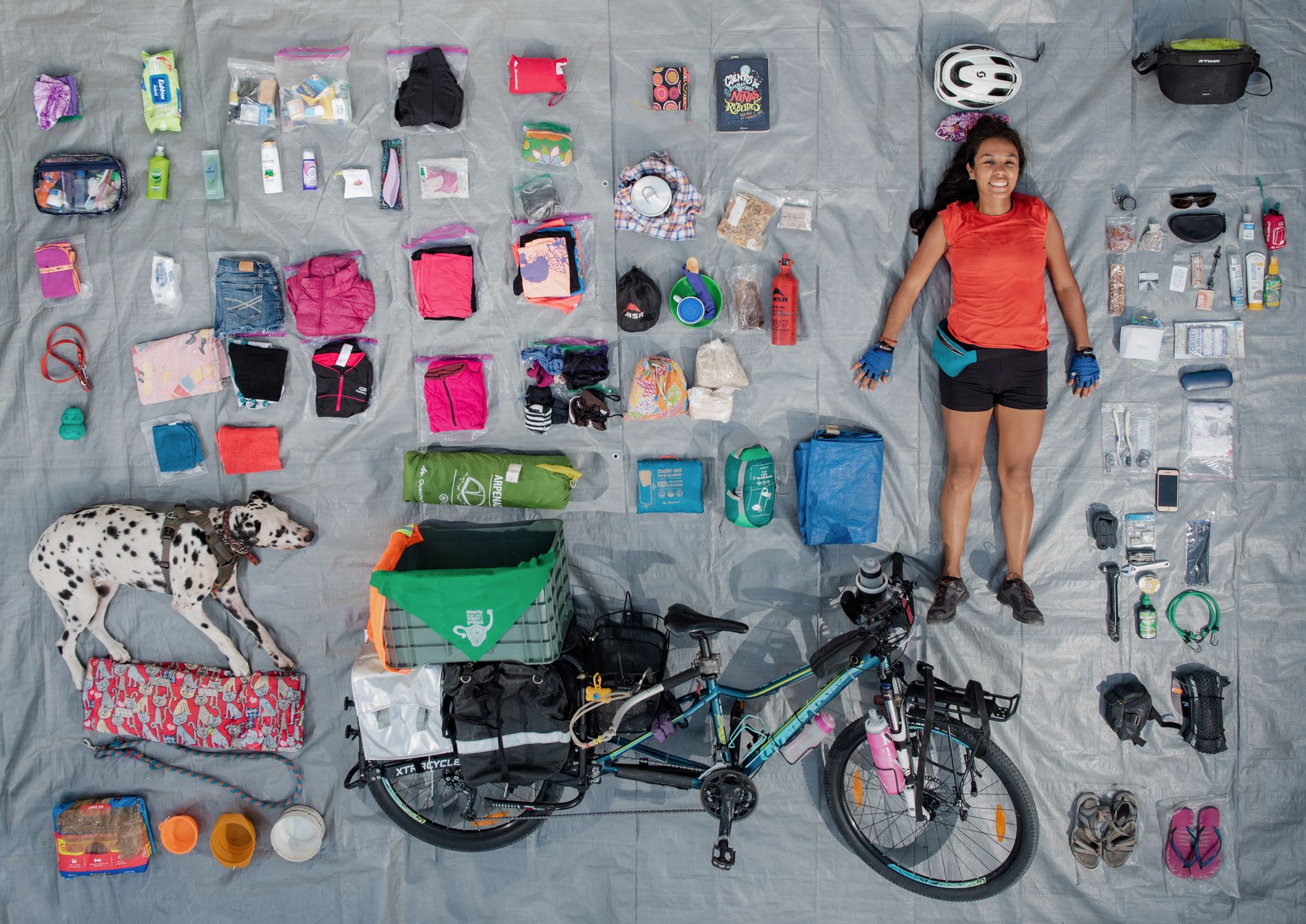
Abril Georgina Morales Rodríguez and Maku
40 | oaxaca, mexico | rides a giant liv tempt 29 v.
Traveling with my dog, Maku, has created a strong bond between us. It has been full of adventures that we have enjoyed and overcome together with patience, perseverance, and love. We started from Oaxaca, Mexico, in June 2018, and have traveled 2,500km so far. Our final goal is to reach Africa.
As a woman traveling without the company of a man in this macho world, sometimes it can become the worst experience when unknown men see you as a sexual object and believe they have the right not only to comment on your body, but to decide what to do with it. Fortunately, Maku and my strength—not physical but mental—have saved me in the most difficult situations. I’ve learned that I must never let my guard down.
.css-dd784d:before{width:100%;-webkit-filter:invert(32%) sepia(81%) saturate(5886%) hue-rotate(5deg) brightness(105%) contrast(104%);filter:invert(32%) sepia(81%) saturate(5886%) hue-rotate(5deg) brightness(105%) contrast(104%);height:2.1875rem;margin:0 auto;content:'';display:block;margin-bottom:0.25rem;-webkit-background-size:2.1875rem;background-size:2.1875rem;background-repeat:no-repeat;-webkit-background-position:center;background-position:center;}.loaded .css-dd784d:before{background-image:url(/_assets/design-tokens/bicycling/static/images/quote.53198c0.svg);} .css-1hihk6d{font-family:Velo,Velo-fallback,Velo-roboto,Velo-local,Georgia,Serif;font-size:1.625rem;line-height:1.2;margin:0rem;margin-left:0;text-align:center;}@media(max-width: 48rem){.css-1hihk6d{font-size:1.5rem;line-height:1;}}@media(min-width: 40.625rem){.css-1hihk6d{font-size:1.6875rem;line-height:1.1;}}@media(min-width: 61.25rem){.css-1hihk6d{font-size:1.875rem;line-height:1.1;}}@media(min-width: 64rem){.css-1hihk6d{font-size:2.375rem;line-height:1.2;}}.css-1hihk6d b,.css-1hihk6d strong{font-family:inherit;font-weight:bold;}.css-1hihk6d em,.css-1hihk6d i{font-style:italic;font-family:inherit;} I carry a photograph of me from when I learned to walk.

Two very useful items for me as a woman are my female standing urinal device and my menstrual cup. I also carry a children’s book, Good Night Stories for Rebel Girls , a green handkerchief in favor of women’s right to decide on our bodies, a photograph of me from when I learned to walk, and three photos of infants that I had in my charge while I lived 13 years in Africa.

Giuseppe Gemelli
41 | genoa, italy | rides a surly disc trucker.
I was not a cyclist before. I had a time with a little depression. I separated from my ex-wife, and this saddened me. Searching the internet, I found that there were people who traveled the world by bicycle. I found it incredible. So I bought a bicycle, and two months later I was at the top of the world in Prudhoe Bay, Alaska, with the dream of reaching the bottom of the world in Ushuaia, Argentina.
At first I didn’t know anything about a bicycle. Now after 18,000km I can say that the bicycle has blown my mind. It has been a great experience. Incredible. At first, I suffered quite a bit, especially my butt and my muscles. I was also afraid to sleep alone in Alaska with bears and other animals. Little by little I got used to it.
The bicycle has blown my mind. It has been a great experience. Incredible.
Each day was incredible, sometimes pure happiness and others crying like a child. This is what the bicycle gives you.
I really liked the ease of moving from one place to another without paying for gas or insurance. Or thinking about where to sleep. So many good people, they help you, they invite you to their home.
The Agata shirt is important because of a family bond. Agata is my niece; I take a photo with her shirt in places that are significant to me. I send them to my sister; they are making a collection.
A very important thing that I care for is the bicycle itself. It has all my things and takes me everywhere. I try to keep her well and take care of her as best as possible as if she were my girlfriend.
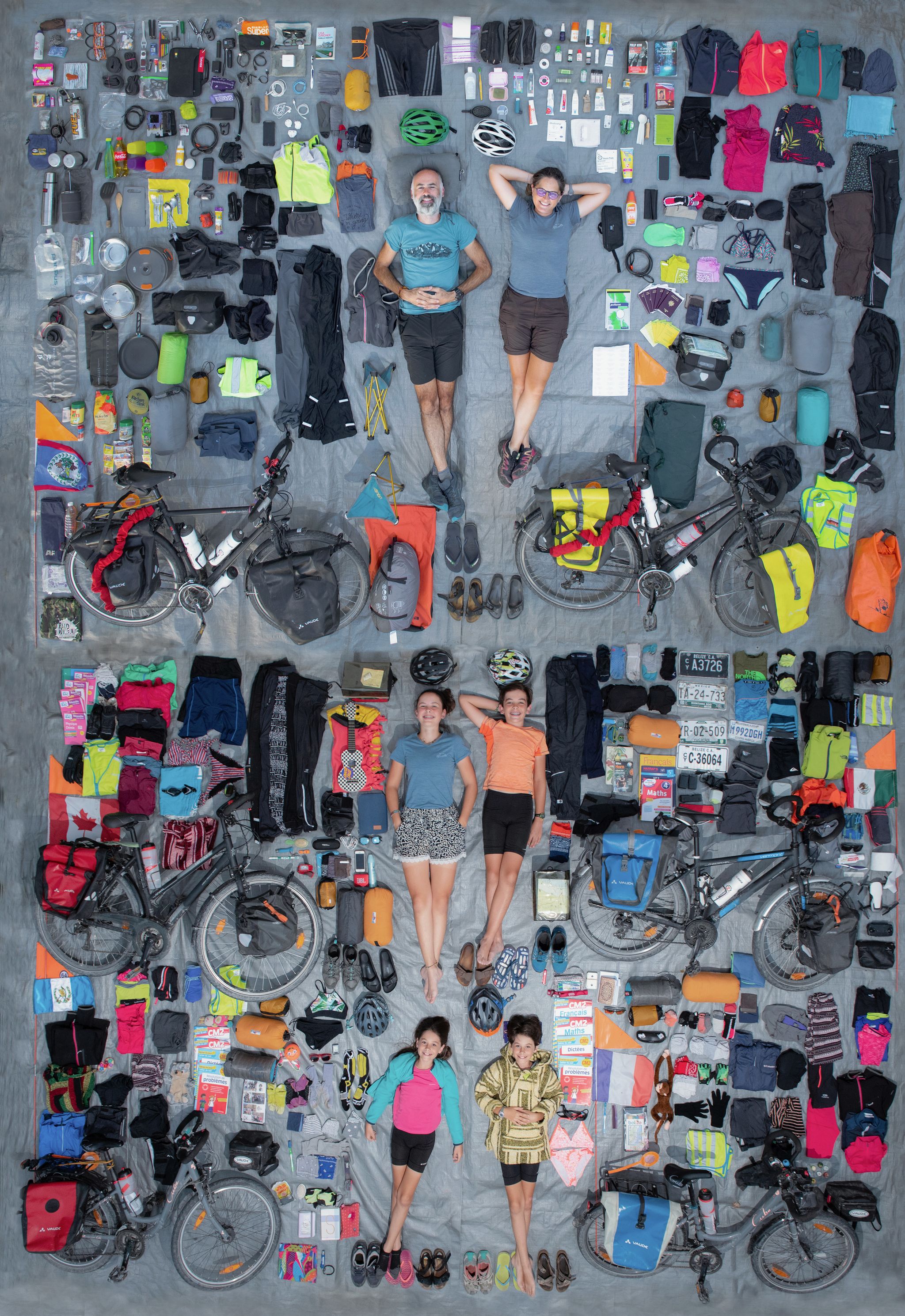
The Delgorgue Family
Jacques (43), pauline (42), élise (15), octave (13), solène (10), charlotte (10), marseille, france | ride a vsf fahrradmanufaktur t-700 (2), vermont 21-speed (2), cube 21-speed (2).
In August 2019, we cycled through the Americas for seven months with our four kids. We call ourselves 6 à Vélo (6 by Bike). We rode almost 6,000km through Canada, USA, Mexico, Guatemala, Belize, Cuba, and Chile. Through this adventure we discovered our children’s strengths and weaknesses, and they discovered who their parents really are. We met a lot of amazing people through Warmshowers, but also on the road, especially in Cuba. Many were living in poverty, but they were extremely generous. We want to model this generosity in our daily life.
Cycling is slow and cycling is tough, but this way of travel is so nourishing.
We had only basic and necessary equipment. To sleep: two tents, warm sleeping bags, and mattresses. To cook: one multifuel stove, two pans, one saucepan, six plates. To dress (each): three T-shirts, one long-sleeve T-shirt, two cycling shorts, one long cycling pant, one pair of trousers, rain- and cold-weather gear. We carried a drone, a GoPro, an iPad, and a phone to take pictures and make our film and blogs. Basically that’s it, plus medicines and spare parts for the bikes. The children also carried their school books and notebooks in their panniers. Cycling is slow and cycling is tough, but this way of travel is so nourishing. Now we can’t imagine traveling any other way.

33 | Zhongshan, China | Rides a Marin city bike
I had been working in Puerto Morelos, Mexico, and a coworker said that he just finished a bicycle trip from Chiapas, which is a little more than 1,000km away. I was interested in going to Oaxaca, which is next to Chiapas, and traveling by bike seemed like an excellent option. So I bought a bike.
I had fears and doubts but wanted to prove to myself that I could do it. As a beginner, I struggled to keep my stuff from falling apart, namely my rack and pannier bags. After getting those in order, I was happy with just the bare minimum. If I had to name one essential thing that made me happy, it would be my bivy tent. I had to use it twice when I couldn’t find accommodation; it kept a barrier between me and some angry dogs at a park!
As for the actual traveling part, I took pleasure from how simplified the days became. No complicated thoughts and a million things to do, only keeping those wheels spinning, satisfying that hunger and thirst with the simplest food, and finding shelter.
After a 120km day with not a cloud covering the sun, drinking a chilled cup of pozol with jalapeño was heavenly. I loved just living the simplicity and feeling the ups and downs of my emotions each day. But the greatest gift was becoming a part of a Mexican family by fate. I only planned to stay one or two nights, but ended up living and working the land and doing everything with them for a month. In the end I gave them my bike because I think they need it more than I do.
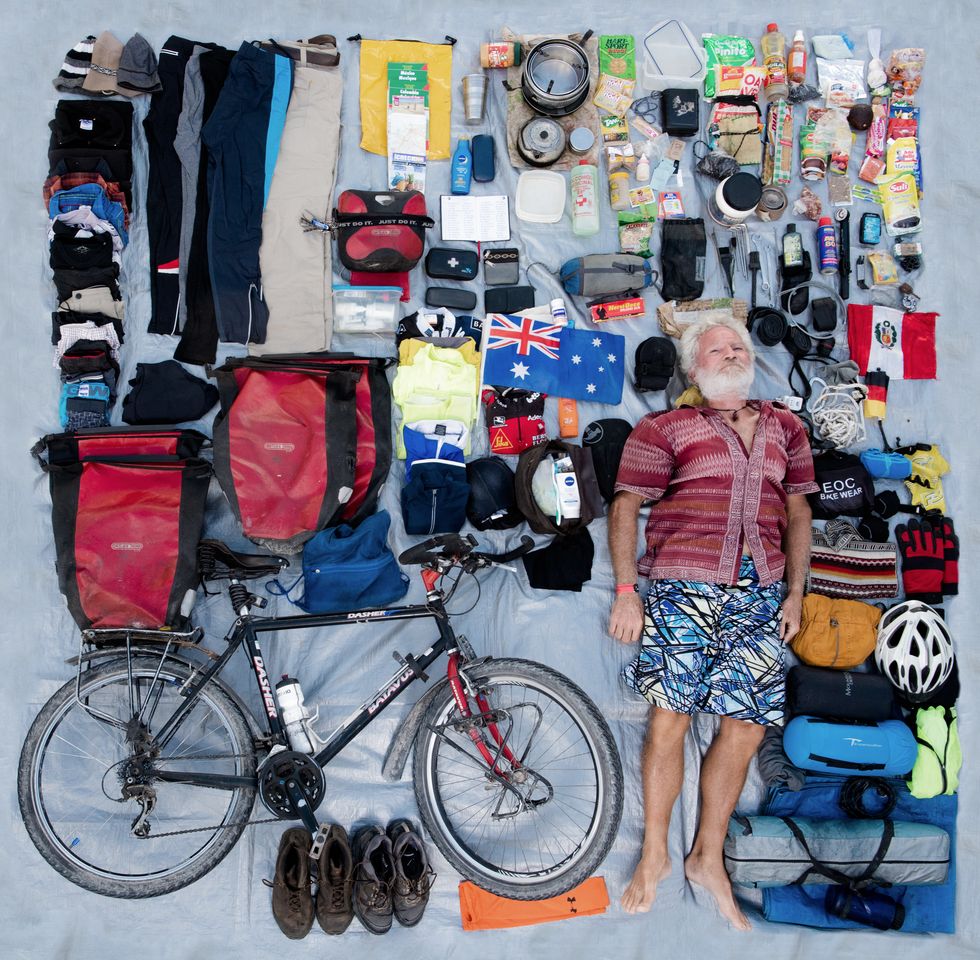
Detlev Swoboda
66 | perth, australia | rides a 25-year-old batavus dasher.
From 2016 to late 2019, my bicycle took me south from Brazil to Ushuaia, Argentina, then north to Alaska and Canada, covering 55,000km. My way of traveling includes a bit of comfort. And rather than speeding through the wonderful and interesting countries, I take my time.
I long for the freedom and solitude you can only achieve on the road.
Covering alpine to tropical climates, I need a good tent and two different sleeping bags. Another essential item is my Trangia stove which works with alcohol and is basically maintenance-free.
At the moment I’m waiting out the end of the travel restrictions so I can cycle from Germany to Australia. In my life, I have cycled approximately 115,000km around the world in all the different continents, starting my first journey in 1971, from Germany to Spain and back. Ever since then, I long for the freedom and solitude you can only achieve when you’re on the road exercising in the fresh air, experiencing foreign countries and cultures, and making new friends.
5 Great Touring Bikes

Co-Op Cycles ADV 2.2 Bike
Great price point to get up and get out.
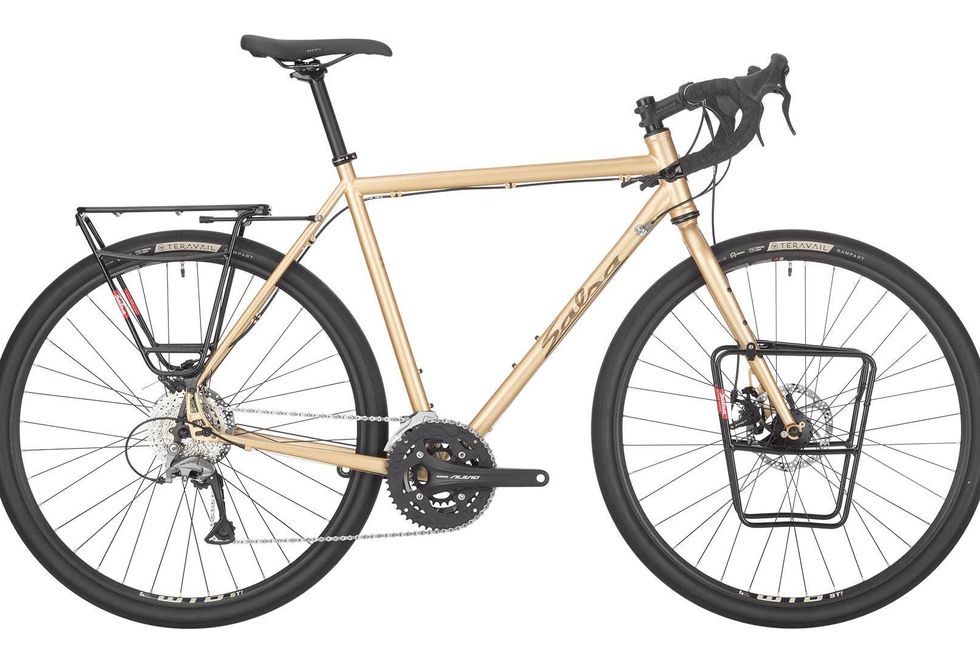
Salsa Marrakesh Alivio
Can be converted to a singlespeed.
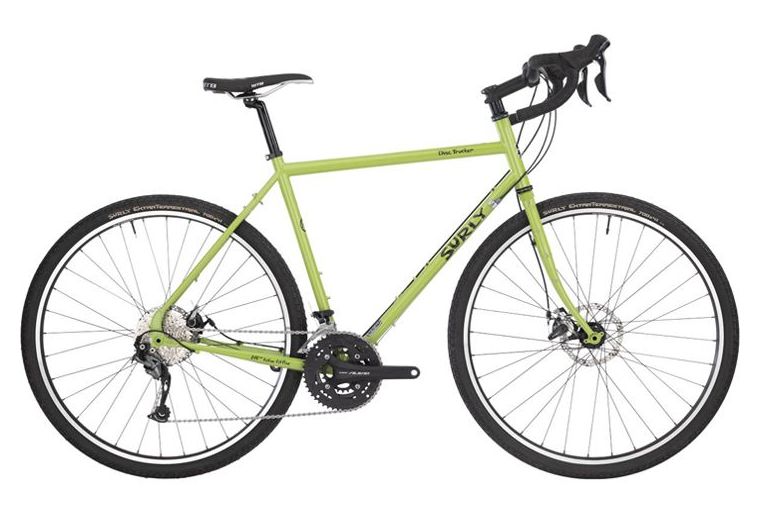
Surly Disc Trucker
Carry more gear with pack mounts on the fork.
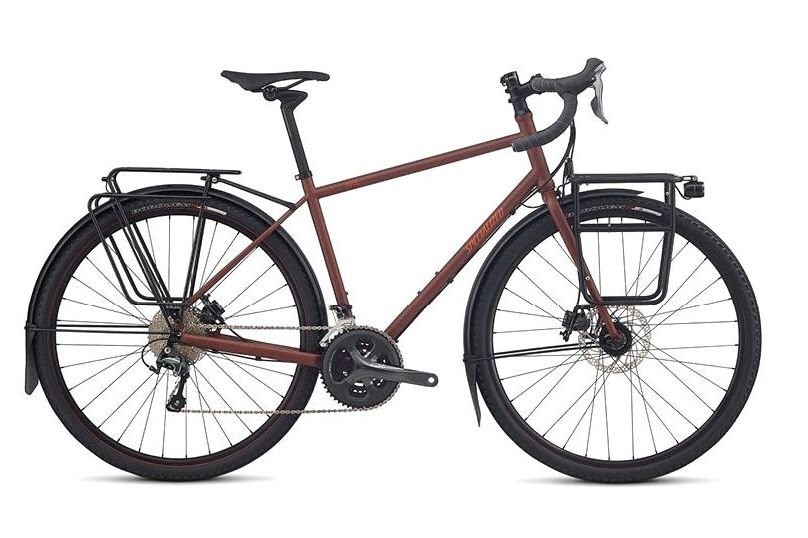
Specialized AWOL Expert
Integrated lights powered by a Dynamo hub.
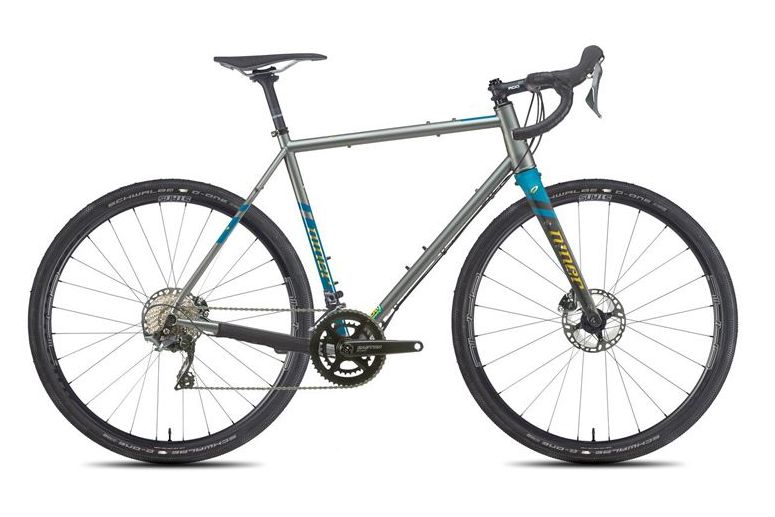
Niner RLT 9 STEEL
Massive tire clearance, and compatible with internal droppers.

.css-1t6om3g:before{width:1.75rem;height:1.75rem;margin:0 0.625rem -0.125rem 0;content:'';display:inline-block;-webkit-background-size:1.25rem;background-size:1.25rem;background-color:#F8D811;color:#000;background-repeat:no-repeat;-webkit-background-position:center;background-position:center;}.loaded .css-1t6om3g:before{background-image:url(/_assets/design-tokens/bicycling/static/images/chevron-design-element.c42d609.svg);} Rides
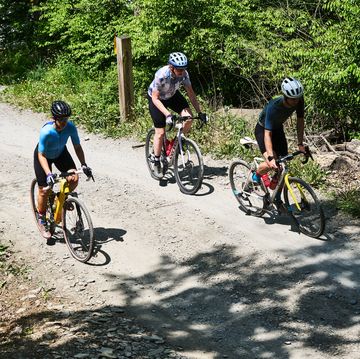
How to Tell if You’re Ready for a Century Ride

6 Reasons to Try Fat Biking This Winter
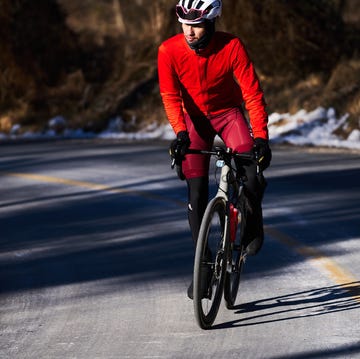
How to Conquer Rapha Festive 500 This Year
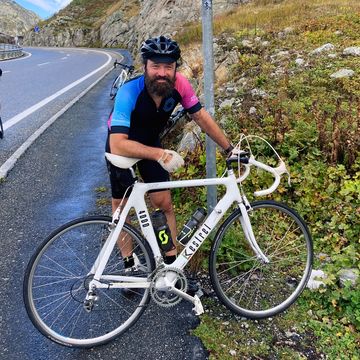
Chasing Tadej Pogačar Through the Swiss Alps

My One-Day Ride Between Santa Fe and Albuquerque
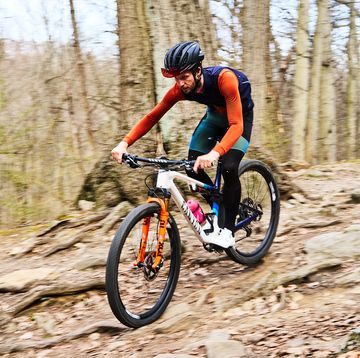
Your Guide to All the Types of Rides
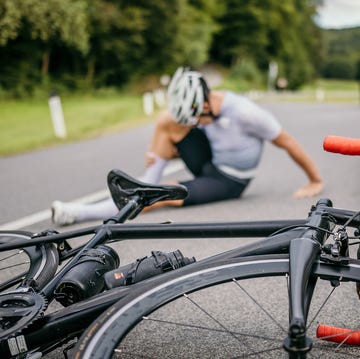
What to Do After a Bike Crash
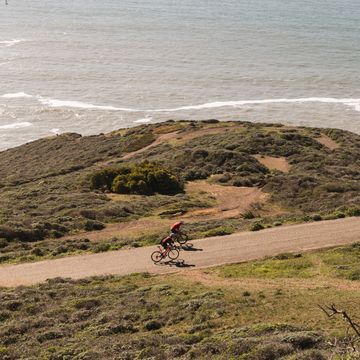
Century Ride Tips for Success

Martijn van Strien Shares How He Enjoys Every Ride
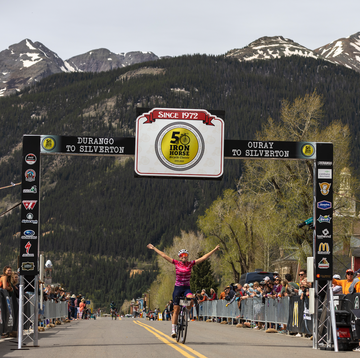
It’s Steam Engine Versus Bicycle in This Race
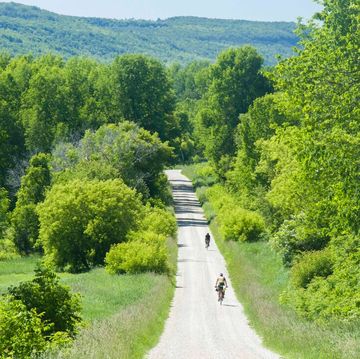
The Great Northern Bikepacking Route
- Subscribe to newsletter
It's going to be so great to have you with us! We just need your email address to keep in touch.
By submitting the form, I hereby give my consent to the processing of my personal data for the purpose of sending information about products, services and market research of ŠKODA AUTO as well as information about events, competitions, news and sending me festive greetings, including on the basis of how I use products and services. For customer data enrichment purpose ŠKODA AUTO may also share my personal data with third parties, such as Volkswagen Financial Services AG, your preferred dealer and also the importer responsible for your market. The list of third parties can be found here . You can withdraw your consent at any time. Unsubscribe
8 Tips for Long-Distance Cycling

Whether you’re a beginner or a seasoned pro, there’s nothing quite like the euphoria you experience after crushing a long bike ride. A rite of passage for any avid cyclist, pushing that two-hour mark is a significant accomplishment that warrants celebration. Like many cycling milestones, though, it can be an intimidating undertaking to pursue. It shouldn’t be one that is off-limits though, even to beginners. If you plan a reasonable route and prepare properly, there’s no reason you can’t tackle a longer ride even if you only have what you’d describe as a “moderate” level of fitness. Here are some tried and true tips to help you feel more confident setting out.
1. Use your pedalling power wisely
You’re eager and motivated to put the miles behind you, right? We understand—it can be hard to contain your excitement. If you want your legs to last though, you can’t go full tilt from the get-go. Especially on a long bike ride, you need to focus on staying in an efficient gear that allows you to maintain a steady cadence and input of effort. The pedals should be moving smoothly beneath you, and you should look to maintain a cadence of at least 90 RPM . At this pace, your aerobic and muscular systems won’t get too stressed, and you’ll be able to keep your overall effort steady. It can take a little patience off the bat, but you’ll be thanking yourself later in the ride.
2. Fuel well and often

To keep yourself feeling strong throughout a long bike ride, it is essential to put some thought into nutrition and hydration before heading out. Exact fluid amounts will be influenced by heat and exertion level, but you generally want to aim to drink around one bottle per hour. You can mix something in the water if you prefer, but it is really the H2O that your body needs to maintain a sustained effort. You should also eat consistently throughout the ride, taking a bite or two every 20 minutes or so.
3. Keep your pre-ride meal carb-heavy and easy to digest
Speaking of fuel—a plate of bacon and eggs might be just what the doctor ordered for a post-ride recovery meal, but before heading out, you want to take it easy on the protein and fats. They both take a bit longer to digest and can be an added drain on your body. Prior to riding, top off your glycogen stores by sticking with plenty of whole grains and fruit.
4. Make segments your friend
The mental challenge of taking on a long bike ride can be the better part of the battle (more on that below), so it’s helpful to break your route down into more manageable chunks. Working each segment individually will help you stay focused and avoid getting overwhelmed. Have a plan for each segment and be willing to adjust your goals accordingly. Everyone’s legs let them down from time to time, and there’s no shame in going back to the drawing board.
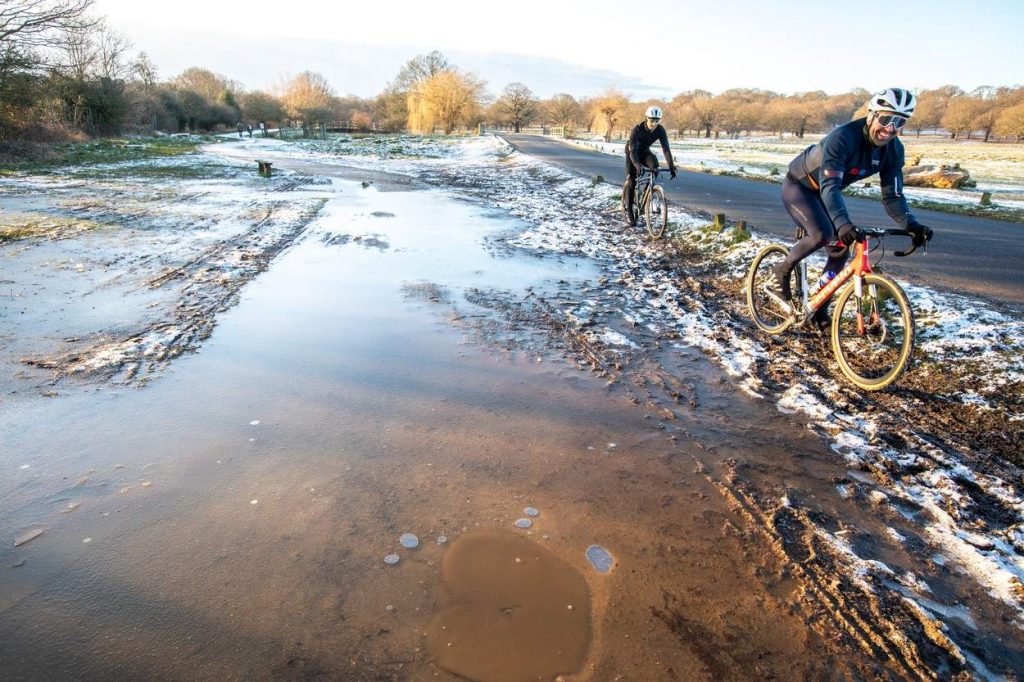
5. Focus on RPMs and cut yourself some slack
Hills and winds can be friends or foes, but it’s important not to lose your cool when they get together to gang up on you. Remember that you’re focus should be on maintaining RPMs rather than speed. Don’t hesitate when it comes to dropping as many gears as you need to to keep the wheels in motion. Remind yourself that it won’t be long before the wind shows up at your back to help you out.
6. Avoid aches and pains with a few simple moves
You might notice that your legs are the least of your problems on longer rides. All sorts of other aches and pains can present themselves if you’re not careful to introduce a bit of movement into the rest of your body. Periodically change hand positions, shrug or roll your shoulders to make them and your neck happy, and stretch out your legs by standing up and dropping one pedal, so your leg is straight. Hold for several seconds before switching legs.

7. Don’t underestimate the power of the mind
Cycling is both a mental and a physical feat. You take everything going on inside your mind and body onto the bike with you, and sometimes this can mean a predisposition to frustration or defeat. Make a promise to yourself before heading out that you’re going to focus on generating positive energy. Enjoy your surroundings, congratulate yourself for doing something healthy, and push yourself to get to that next rest point. You have the power to banish those negative thoughts!
8. Expect the best but be prepared for the worst
Positive thinking can go a long way, but longer rides also come with an increased chance of an incident. Most of these can be quickly dealt with if you’re prepared for them, though. You should ensure you have the gear to fix at least two flats, a mini tool, your cell phone, ID, and a bit of cash for any longer ride. Remember that it’s better to have it and not need it than the other way around.
Articles you might like

The Winner of Our Liège-Bastogne-Liège Contest: ‘Compared to watching it on TV, I found it unbelievable’
More than a month ago, we put out a call for all die-hard cycling fans: show your love for cycling and what cycling fandom means to you and get creative with it. The prize for the best Instagram post was a 3-day experience at the…

Pogačar (of Course!) Soloes to a Crushing Victory in Liège-Bastogne-Liège
Tadej Pogačar’s victory in Sunday’s Liège-Bastogne-Liège was as inevitable as, say, Mathieu van der Poel winning Paris-Roubaix – even though the Alpecin-Deceunick superstar was at the Liège start line. All other things being equal, with its 4,500 m of climbing, the last of the spring…

Grace Brown Triumphs at Liège-Bastogne-Liège: “I waited and came with speed”
In a thrilling conclusion to the 2024 Liège-Bastogne-Liège Femmes, Australian cyclist Grace Brown outpaced everyone to clinch her first victory at this prestigious event. Brown, who previously secured two second-place finishes at La Doyenne, demonstrated remarkable tenacity and strategic prowess in the final moments of…


Pogačar vs. van der Poel: Monumental Match-Up or Is There a Twist in the Tale?
Sunday’s prestigious Monument, the Liège-Bastogne-Liège, is the last of the season’s Ardennes Classics and the oldest of them all as it will be celebrating its 110th birthday this year. So it’s only right that it will pit arguably the two best road racers on the…

Long Distance Cycling – Tips and Preparation
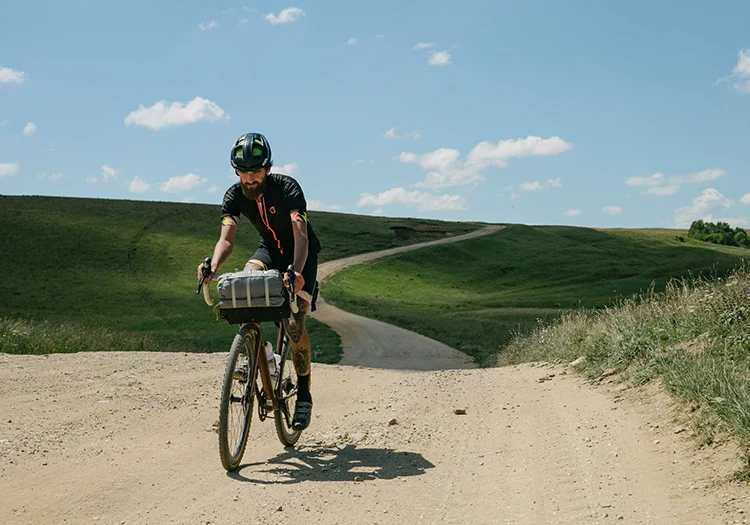
There’s nothing like a long day out on your bike, and in recent years long-distance cycling has become very popular .
Long-distance cycling is challenging, and there’s an art to getting it right. In this article, were going to tell you how to ride long distances easily.
Long rides typically don’t come from just being fit, there are multiple aspects to think about to get it right, and once it all comes together, you will find a long-distance bike ride much more straightforward.
Using the Correct Bike
Nutrition and hydration, tips and advice.
Typically, when you first start riding bikes, many cyclists focus on being fast, and the right bike can quickly improve your speed. Those bikes usually are not the best for long-distance cycling, and it takes the right kind of bike to make a long ride work.
The most used bike for longer rides are road bikes , these are truly made for distance rides.
When we start thing about bikes for cycling long distances, we need to focus more on comfort than anything else. Riding fast will get you further quicker, but you will end up stopping more due to just being uncomfortable.
In long-distance cycling, comfort is king, and there’s much more value in being able to sit on a bike for a long time comfortably than to ride fast.
What Makes a Bike Comfortable?
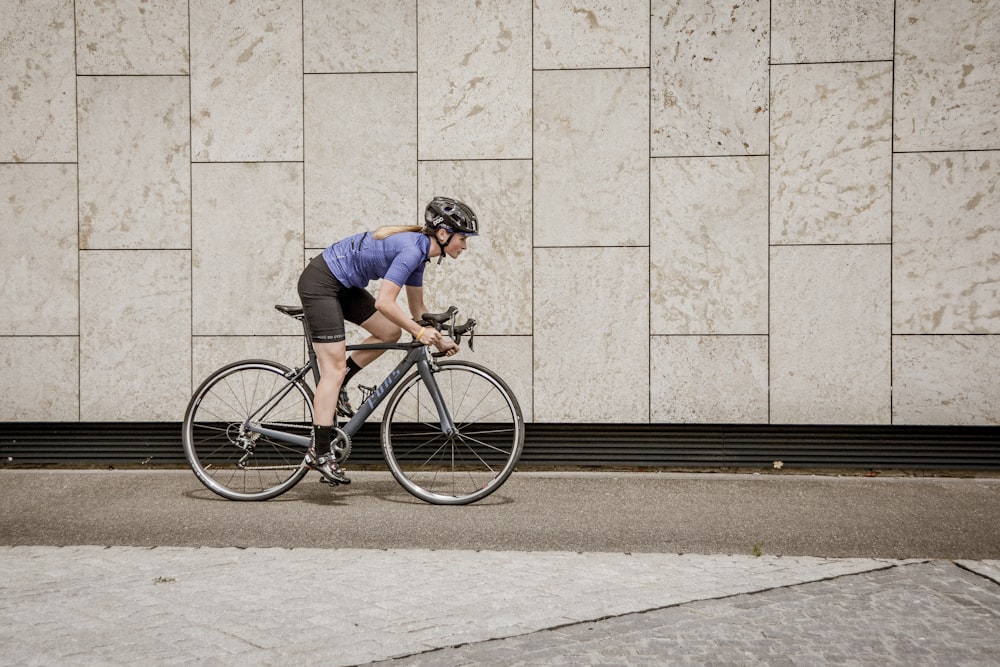
How do we judge a bike on comfort? Is it a gel saddle? Is it suspension? No, these will help, but it comes down to geometry .
Each bike has a specific geometry, and this is the bike’s design.
Some bikes are designed to put the user into an aggressive position which won’t be comfortable, but it will be aerodynamic. Others are designed for user comfort and put the rider in a position where you can sit for much longer comfortably.
Read more: Different Types of Road Bikes
How do we judge if a bike has a good long-distance geometry ? The easy way to look for a comfortable geometry is to look at the saddle height compared to the height of the handlebars .
If they are level , this will be pretty comfortable. If the handlebars are lower , the bike will be aerodynamic and will quickly cause you discomfort on big rides. When the handlebars are higher , the bike will be very comfortable but less aerodynamic.
We all knew we were going to speak about saddles at some point. I wish I could tell you the right saddle for comfort, but unfortunately, it’s unique to the user. We all are very different in our bodies, and you might need to try a few saddles before you find the right one for you.
Then you have a few other factors worth taking into account, such as the bike’s frame material . Carbon bikes are very stiff, and you will find them much harsher on bumps than steel bikes. Also, your tires, tiny skinny high psi 23c tires, will give you much less comfort than a larger endurance tire like a 30c.
Learn more: Tire Pressure Explained
Now you know what to look for in a bike. The next thing you have to think about is getting it set up correctly for you. A bike fit is where a professional fitter will adjust the saddle height, foot angle, handlebar reach, and some other metrics, so the bike is in tune with your body.
Having a bike fit will help you so much. It will help prevent injuries such as severe knee pain, and you will be a lot more comfortable on the bike, making you much more efficient as a cyclist. A bike fit for a long bike ride is vital and the best money you will ever spend.
Cycling clothing , like saddles, is a very personal thing, and you will find some kit that works for you and other kits that doesn’t. Is cycling clothing important for riding? It’s vital in my opinion for a long bike ride and makes a huge difference.
The most essential clothing for long-distance cycling is shorts and shoes.
Padded Shorts

The first thing you are going to want to get right is padded cycling shorts . They’re just incredible, and getting the right set can sit you in the saddle for hours without any issues.
I believe with padded cycling shorts, you get what you pay for. If you buy a cheap set, then you will find that more than likely, you will get some discomfort eventually, and they will wear out very quickly. A decent set will give you much more comfort and last for a long time.

Then we have cycling shoes , typically cyclists tend to have clip-in pedals on many of their bikes.
These fix your feet to the bike, and not only do they help improve your riding and increase the efficacy of your pedal stroke, but they can make your feet much more comfortable.
Getting the right pair will make riding much more comfortable, and I personally would recommend trying some on at a shop before you buy them.
The right shoes will help you ride long distances and can help you avoid issues such as hot foot, which can feel awful.
As far as the rest of the clothing goes, all I can say is to dress appropriately for the situation that you are going into.
If it is going to be cold, make sure to take enough clothing to stay warm, if it’s going to rain then a rain jacket, and if you’re riding at night, then being visible is the key.
A great bit of advice is it is better to overdress than underdress, as you can take layers off. If you don’t take enough clothing, you’re stuck being cold.
A lovely quote I have always said to anyone looking at getting into long-distance cycling is to be prepared to eat a lot of food. It depends on how fast you’re riding, your body weight, where you’re riding, your heart rate, and even the temperature.
Getting a heart rate monitor and using an application such as Garmin Connect or Strava can give you a rough idea of the calories you’re burning. You won’t be able to replace them all, but getting about half of what you’re burning in will be a good start.
Related: Best Smartwatches For Cycling
What foods?

Eating the right foods goes a long way too. You want to focus on carbohydrate-rich foods to keep the muscles powered and make sure they are not things that will make you poorly.
A common problem I see is people purely just eating energy gel. Not only is this awful for your system, but you might also find yourself in a hedge halfway through the ride.
Keep supplements like energy gels in moderation.

Like eating, drinking is also vital to a long bike ride, and the key is to stay hydrated.
Again it is very personal to the person riding how much they drink. It comes down to temperature, how hard you’re working, how much you sweat, and many other factors.
I aim for 500ml per hour at a good work rate. I also do advise every so often to have some electrolytes to replace any lost salts . These come in the form of a powder you put in your water, a tablet, or even a sports drink.
Most cyclists aim to drink a little every half hour to help with longer distances or a big ride.
Mental preparation: It is vital before any ride to understand the challenge you are taking on. It’s often easier to break it down into small chunks. If I am to ride 100 miles, I tend to break it down into 20-mile sections and just focus on each section. It’s much better for your head, and any great cyclist of long distances will tell you it’s a mental game, not a physical one. Try not to feel like you’re suffering.
Pacing: When it comes to long-distance cycling, pacing is everything. Make sure not to work too hard and enjoy the process. Riding fast will only burn you out quicker. Being at roughly 65% of your max heart rate is a great place to ride long distances and hold a decent speed.
Safety: Always be safe, wear visible clothing, ride on the correct roads, use lights at all times, and take a cell phone and some kind of a patch kit. The roads are getting busier and busier. We need to make sure we protect ourselves.
See Cycling Necessities on REI
Related Topics:
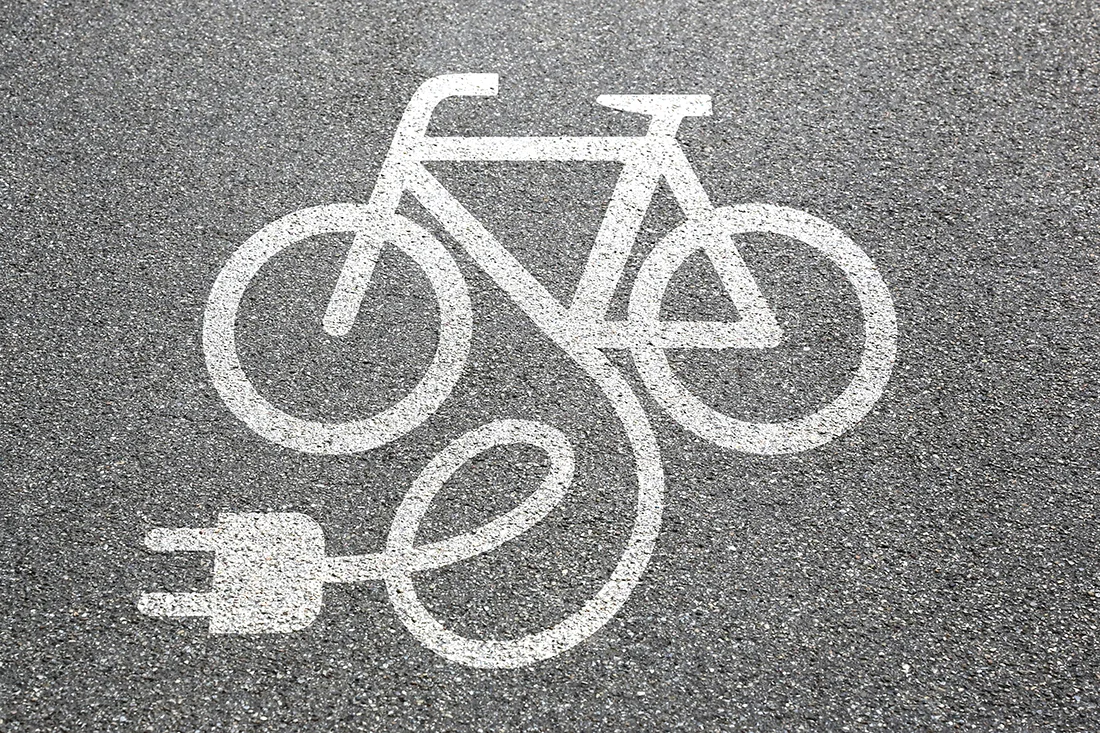
Do You Need a License for an Electric Bike? State-by-State Requirements Explained
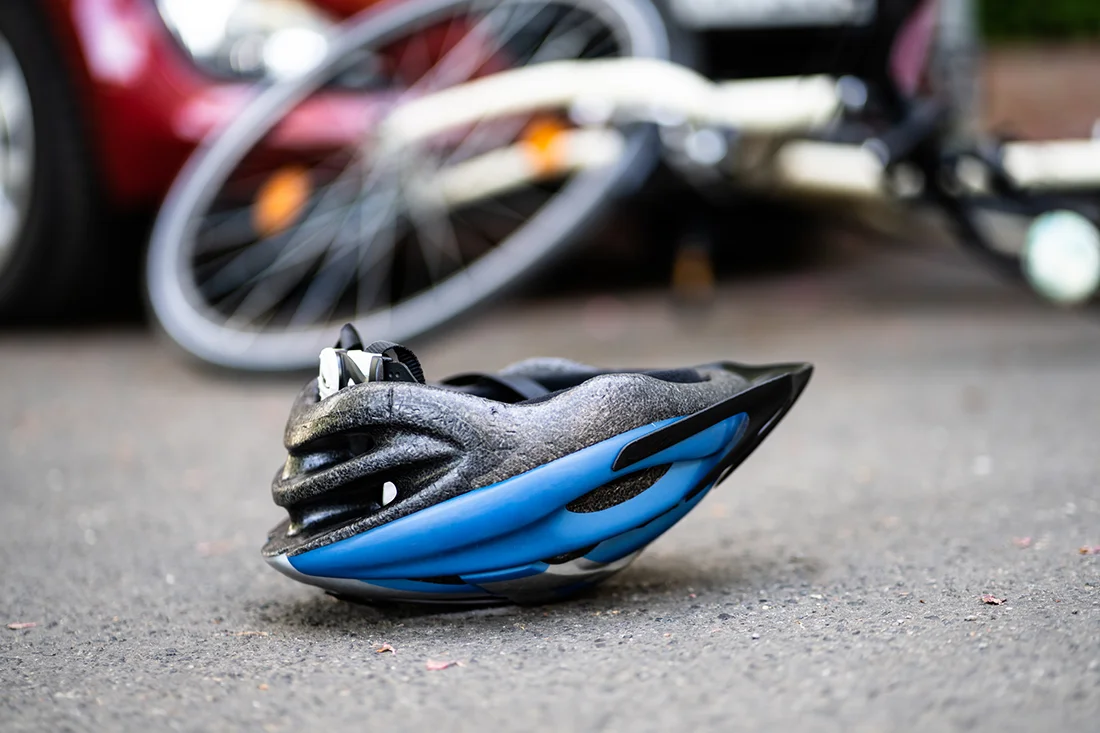
When Are Bike Crashes Most Common? 11 Risky Situations to Know
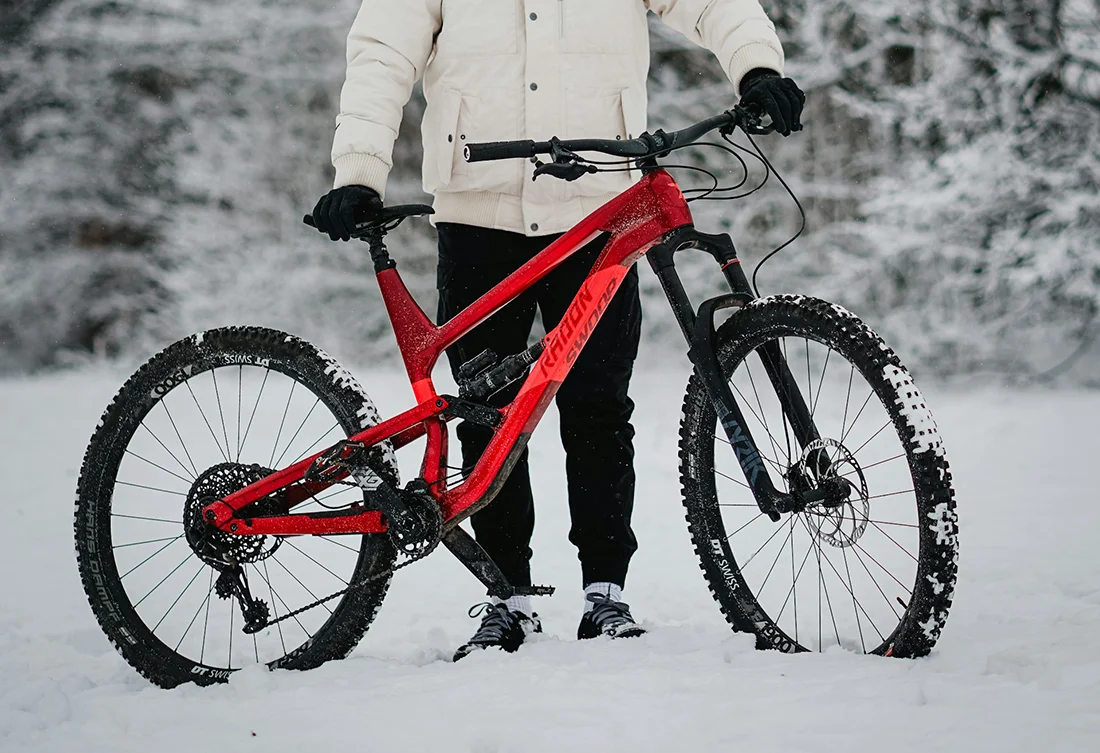
Mountain Bike Types Explained: Find Your Perfect Ride
10 top tips to tackle your first bike tour in 2022
Feb 3, 2022 • 6 min read
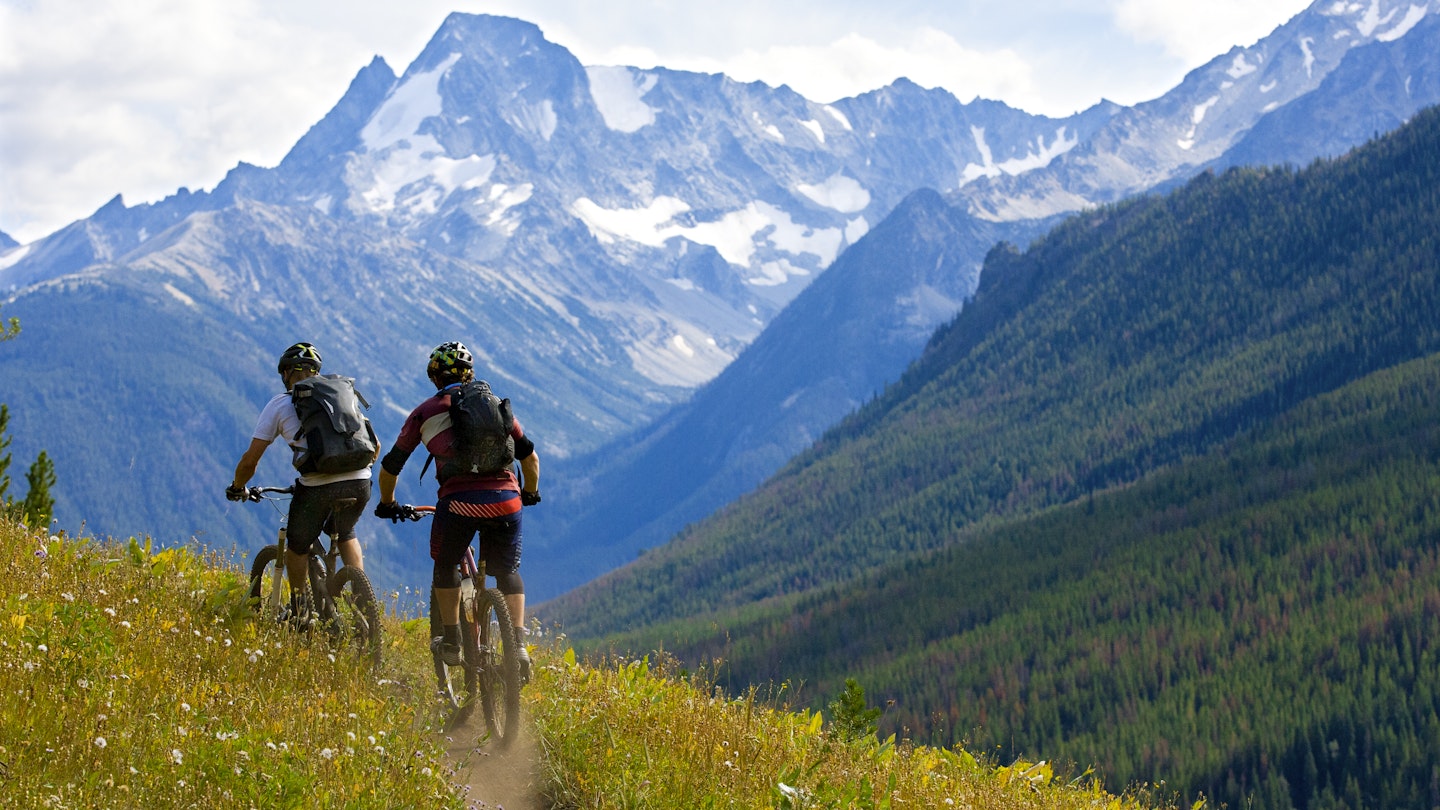
Taking the long route is always the best way to see a destination; mountain biking through British Columbia © GibsonPictures / Getty
Long-distance cycle tours are a cheap, challenging and entirely unforgettable way to see the world. But are you willing to swap planes and hotel beds for a tent, two wheels and the open road?
Here are 10 top bike tour hacks to get you off the couch and onto the saddle.
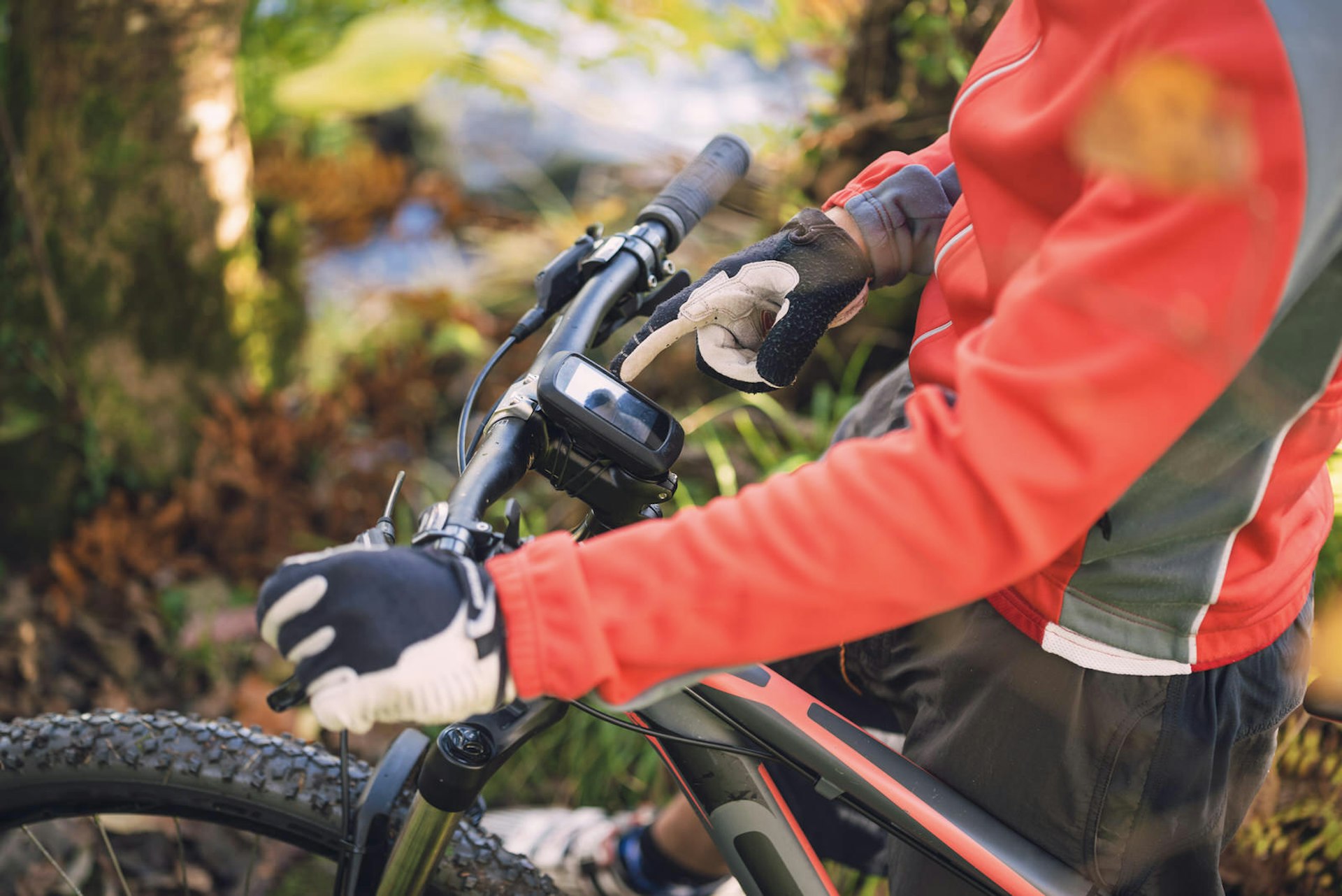
Save the date and start planning
Deciding to go really is the hardest part. Setting the date (and having a rough idea of duration) helps concrete your trip, giving you a deadline to work towards. First-timers should head off during the warmer months and – unless you’re keen to channel Sir Ranulph Fiennes – pick an easy route for the first week or two. Training before your tour helps, but it’s not imperative – you’ll get fit on the road.
For tried-and-tested planning, tips check out bike touring blogs and websites such as Travelling Two and Facebook’s Bicycle Touring & Bikepacking group.
On Québec’s Route Verte, not knowing what I was getting myself into was the best part

Buy the right kit
Invest in the essentials: a good free-standing tent, a decent touring bike, waterproof panniers (bike bags) and a cooking stove. Opt for a sturdy, steel-framed touring bike with steel front and rear racks to hold your panniers. Your bags should be hard-wearing as they'll carry everything you need such as the tent, stove, sleeping bag and mat, electronics and clothing.
Every gram and inch counts. Opt for lightweight gear and use dry bags to compress your clothes. Resist the urge to overdo it and blow your budget on gear that might not last; real kit gems, such as baby wipes, mosquito spray and chlorine tablets, often cost virtually nothing.
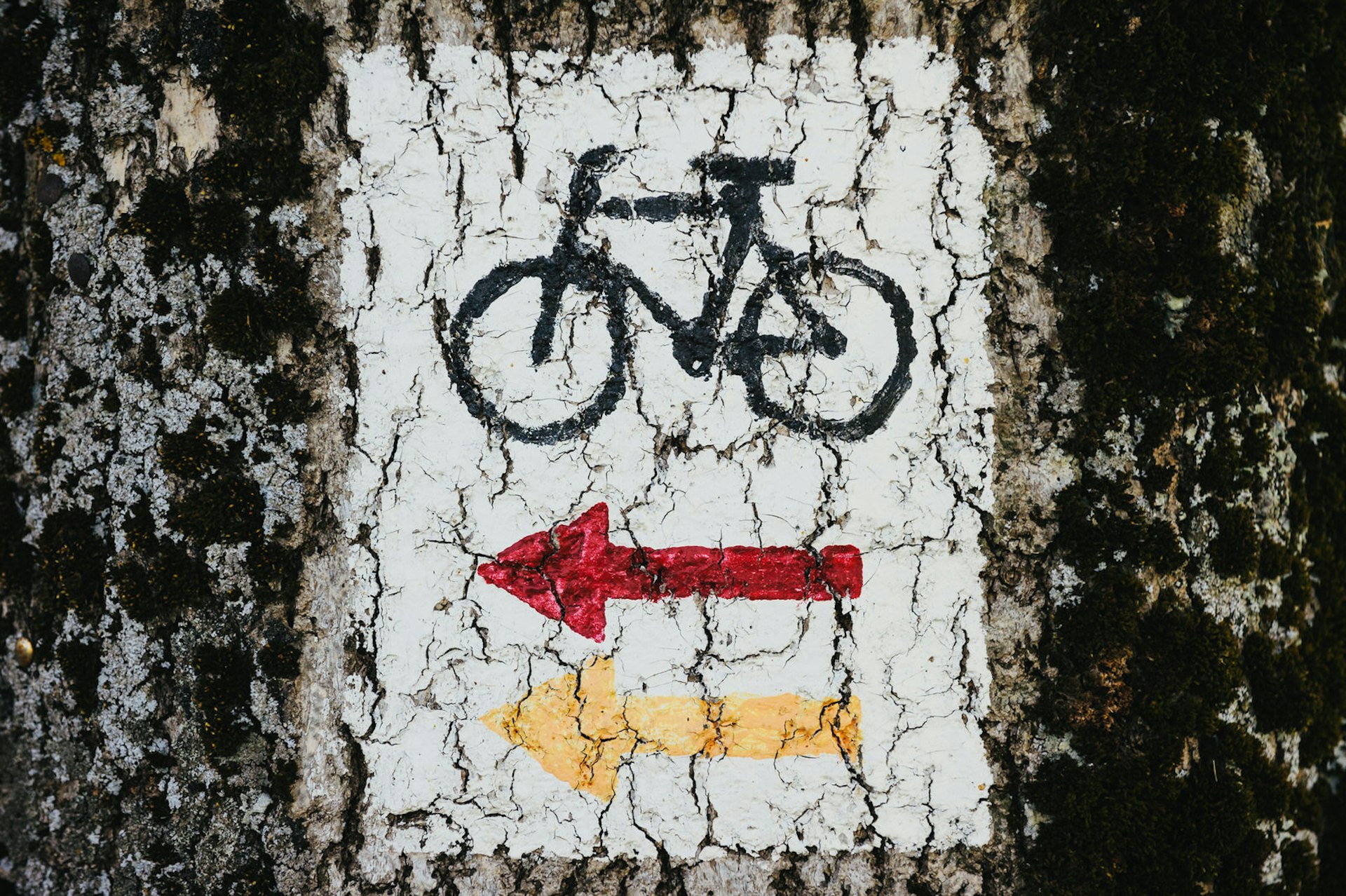
Plan the right route for you
Wherever you’re planning to cycle, consider ditching main roads as they’re busy and often uninspiring. Countries such as the Netherlands are renowned for their flat and bike-friendly trails, while thrill-seekers tend to make a beeline for the likes of Tajikistan and Patagonia .
Tap into regional resources and infrastructure such as Europe’s Eurovelo bike routes which offer excellent off-road rides. The USA’s Adventure Cycling Association and England’s Sustrans network print terrific maps with alternative routes and amenity lists.
The best cycling tours in India
Avoid unnecessary detours
Once upon a time, a wrinkled, dog-eared, hard-copy map was the ultimate bike tour companion. Now, it’s a reliable GPS or navigation app. Opt for a durable and multi-use GPS product designed with adventurers in mind.
Smartphones are also a fantastic option if you’re likely to have regular access to electricity and the internet. You can download maps that don’t just show you the best roads, but the best off-the-beaten-track routes for cycle touring. The Maps.me app is detailed, easy to use and now shows the route elevation on the bike option in most countries.
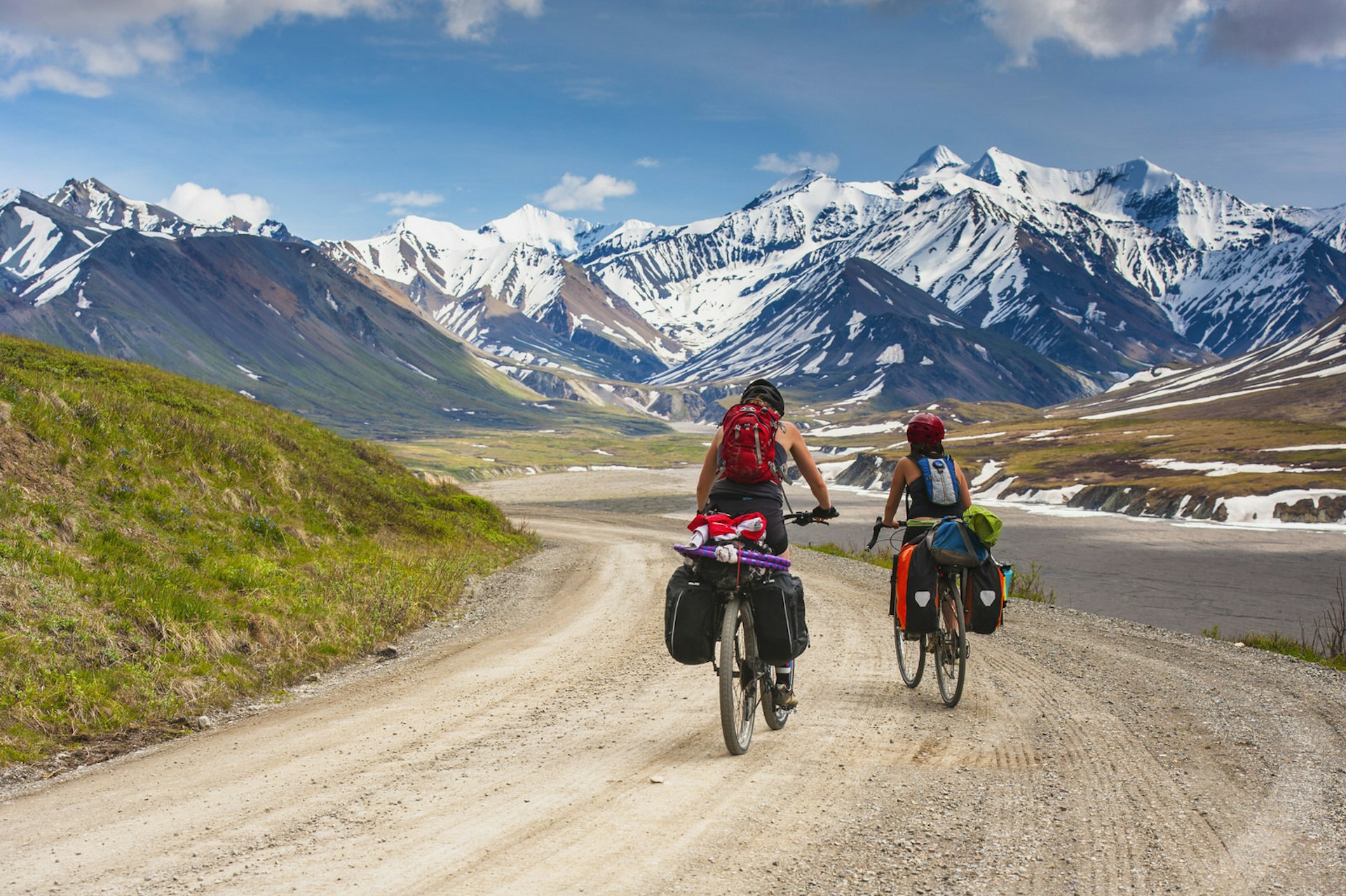
Create a budget and start saving
Bike tours can cost very little; if you’re willing to live on rice and porridge and wild-camp at every opportunity, then an incredibly lean budget is achievable.
Visas, hotel stays and restaurant visits add up, but if you’re hoping for a happy medium (a tight food budget and plenty of low-cost or free accommodation with occasional splurges) then you could keep daily costs quite low, depending on the country. However, it's important to factor in travel insurance and emergency money for bike repairs and kit replacements.
These are the world's best cities for cycling
Set your own personal goals
World cyclist Jonathan Kambsgaro-Bennett says the question he gets asked most is how far he pedals in a day. His answer? "It depends on the hills, the wind, the road and about a million other things… Especially the wind."
Setting daily distances can be tough but having a rough idea of what you want (and are able) to achieve will help you plot an itinerary. Many bike tourers average between 60km and 80km per day, depending on conditions, while those just starting out may aim for much less. Besides the weather and quality of the roads, your personal goals should also influence the decisions you make along the way – and will often push you to keep going.
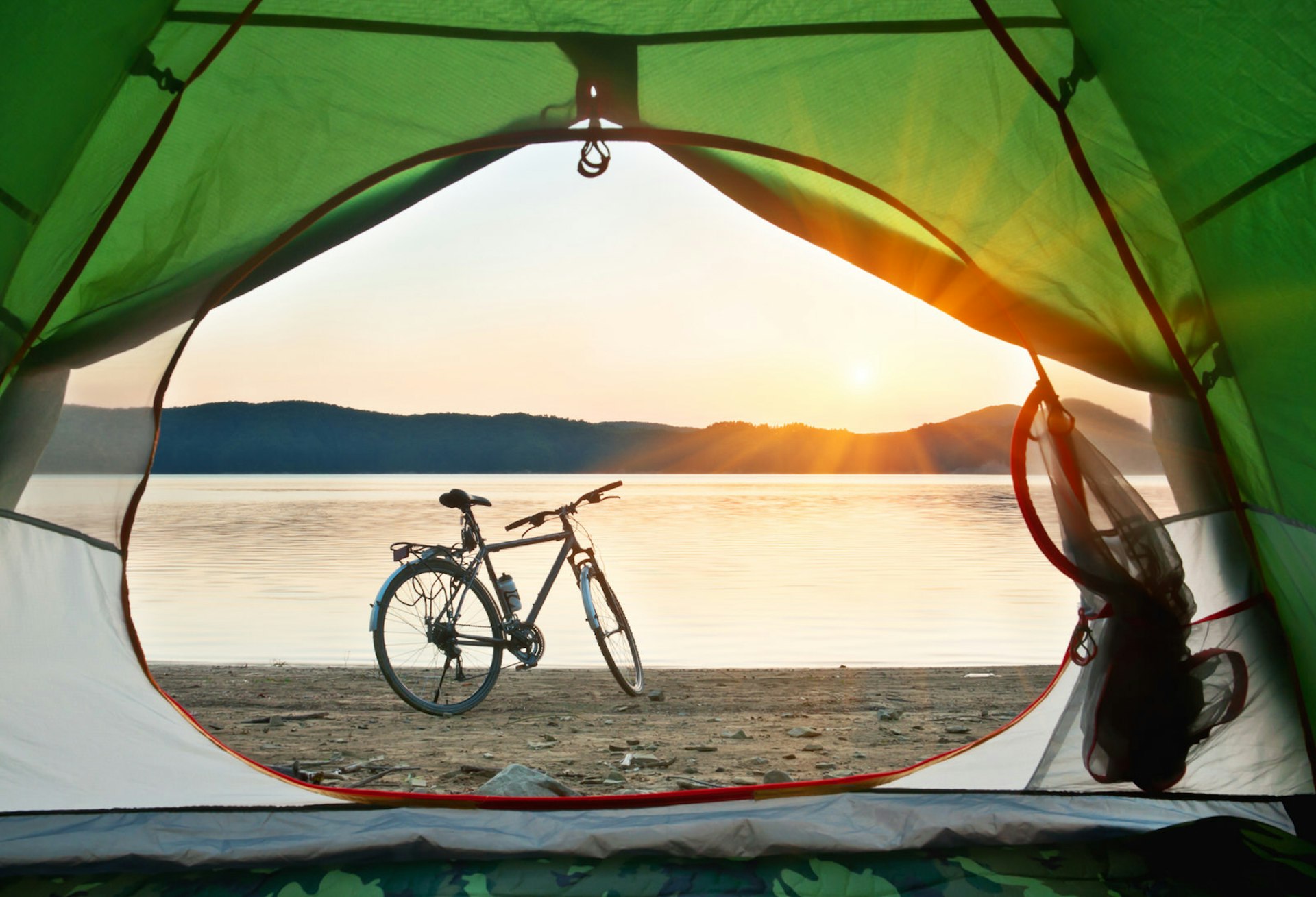
Become a camping pro
Pitching a tent in the wild after a long day in the saddle can be stressful. Fortunately, fatigue often overrides fear – and the more you do it, the easier it gets. Some places welcome wild camping as long as you're out of sight (Scotland, Iran, Japan) while others forbid it which makes things much tougher (Switzerland, Australia and the USA) – it’s worth being aware of the laws wherever you choose to cycle.
While a nice, secluded, flat piece of turf near a river is the goal, anything can make a fine camp spot and the key to overriding those initial fears is to keep off private property, or to simply ask the landowners for permission to camp. Locals are often keen to help – and if you have their blessings, you’ll sleep like a baby. Check out world cyclist Tom Allen’s top tips on how to wild camp .
Become familiar with cyclist resources
If you like Couchsurfing , then Warmshowers – a tight-knit international community of cycling enthusiasts catering to pedal-powered travelers – will be your best friend on tour.
While it’s tough to find hosts in Central Asia, Africa and parts of the Middle East, Warmshowers has a huge network throughout Europe , Iran and the Americas. Many hosts will do more than give you a place to rest your head after a day on the bike, often feeding you dinner and sharing their own tales of adventure.
Why cycling is the future of urban transportation around the world

Learn how to cook on a camp stove
Unless you’re happy with a two-minute noodle diet, spend some time getting to know your stove. Most small camp stoves have just one setting and few bike travelers carry more than two small pots, but with a little creativity you can whip up a delicious meal after a tough day of pedaling.
Pasta, rice and porridge are great value staples. To make your meals more exciting, throw some chili, garlic salt, pepper and curry powder in light, plastic containers. Peanut butter turns even the worst meals into a satay delight and soup mixes make for lightweight yet delicious sauce bases.
Overcome your fears
"What if someone steals your bike? What if you get attacked while camping? What if you get hit by a truck?" These aren’t just the questions people might ask you – they’re the ones you’ll ask yourself repeatedly before setting off.
To deal with those recurring fears, expect the best but prepare for the worst. Commit to reading the fine print and get insurance with a comprehensive cover that will replace your kit if it’s stolen. Keep a personal alarm or bear spray in an accessible place and consider carrying a SPOT tracker; these devices (when turned on) emit your location to allow friends and family to keep an eye on where you are. Stay vigilant and you’ll be fine. The majority of cyclists report overwhelming generosity and kindness from the road.
You might also like: In Iceland’s remote Westfjords region, a new bicycle route takes shape A mountain biker shares how Nordic Europe combines the best of food and biking The 10 best long-distance bike rides around the world
This article was first published February 2017 and updated February 2022
Explore related stories
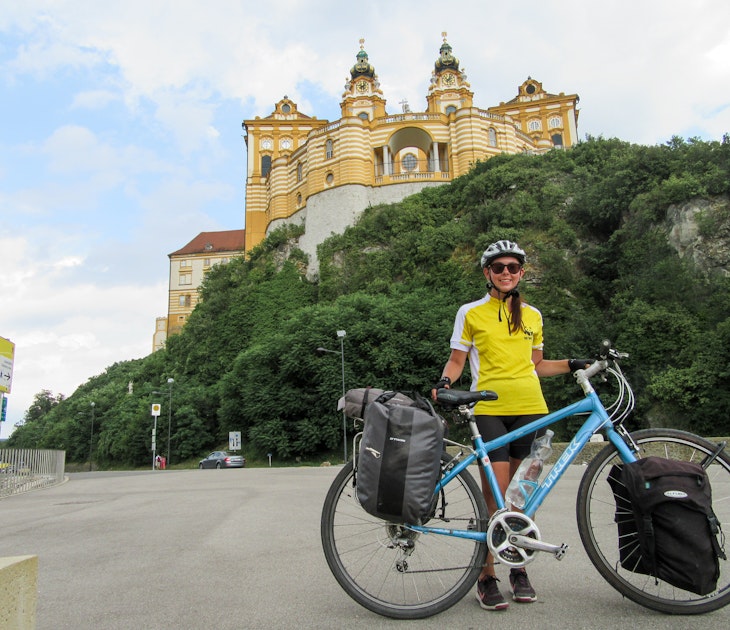
Jun 25, 2020 • 6 min read
Lauren spent 3 months cycling from London to Istanbul. Here are the things she learned about Europe, and herself, on the way.

Apr 19, 2024 • 10 min read

Apr 17, 2024 • 8 min read

Mar 22, 2024 • 9 min read

Mar 13, 2024 • 7 min read

Mar 12, 2024 • 8 min read

Feb 26, 2024 • 5 min read

Feb 26, 2024 • 8 min read
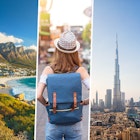
Jan 31, 2024 • 11 min read

Jan 19, 2024 • 11 min read
Adventure Possible
Trial & Error in a Life of Adventure
10 Tips for Preparing for Your First Long Distance Bike Tour
November 11, 2015 by Mark Kelley 9 Comments
Share adventure with others

The author atop the first climb of his first long-distance bike tour, biking across America.
Kudos to you if planning to leave the comfort zone of bike riding along the familiar roads and trails around your home and opting for your first long distance bike tour.
When planning a self-contained bike tour, use our Self-Contained Cycling Checklist and Budgeting Calculator
Taking a bike ride through many cities and states is an awesome adventure that will pay rewards in physical and mental well being as well as character shaping experiences.
Long distance bike tours have allowed me to meet new friends (both riders and “locals”) while exploring popular and obscure places in the United States.
Of course, proper preparation is essential to the enjoyment and success of your first long distance bike tour.
Picking up a bike after years of dormancy and jetting out on a 500 mile bike is potentially dangerous and could make it your last ride because of injury, displeasure, or other mishap.
There are always going to be unexpected circumstances over a long distance ride that might end your tour early, but proper preparation with these 10 steps will help increase your chances for a fun and successful adventure.
Find the Right Bike for your Long Distance Tour
Since you’ll be spending 5-6 hours or even more a day on your bike, it’s important to have one that is a comfortable fit and meets your needs.
Many people preparing for a long distance bike tour try out 4 or 5 different bikes before finding one that lets them sit at the right angle, is the correct height, and is just overall comfortable to be on for extended periods of time.
Choose a Supported or Non-Supported Ride
An early decision in the preparation for your long distance ride is whether to do a supported or non-supported ride.
A supported ride is planned by a company and features other riders as well as a ‘hospitality’ vehicle to carry gear, bring meals, etc.
A non-supported ride means you’re going rogue, planning your own route and being accountable for your own food, lodging, etc.
Depending on the option you choose, you’re planning will look quite different.
Be Honest About Your Physical Condition
When I was cycling across America, a large number of cycling adventurers I met were people in their late 50s to early 60s or older.
Some of these folks were in tremendous shape. They could burn me in a race and beat me up a mountain, while others had to be cycling more slowly and deliberately.
No matter what your age you should be honest about your physical conditions so that you can plan and carry out a feasible tour.
Every tour will provide some challenges and pains, but bike tours turn bad when you sign up for way more than your body can reasonably handle.
Overestimating your abilities may result in a poorly planned or poorly executed adventure. In the worst cases, it may lead to injury.
Start Training for your Bike Tour at Least 3 Months Out
You’ll get stronger as you complete the route on your long distance tour, but it will help in the early days and help prevent injury if you build up a fitness foundation first.
You should be riding frequently to get comfortable on a bike and doing other cardiovascular exercises to build up your heart and lung capacity.
Plan Your Long Distance Bike Tour
The Adventure Cycling Association has implemented almost 30 routes through America, giving you options on what part of the country you’d like to see and terrain you’d like to tackle.
There are Atlantic Coast maps, North to South, Transamerica, Pacific Northwest, and even routes that delve into Canada so options are plenty.
We recommend Adventure Cycling’s maps, and we found them really useful on our bike ride across America , as they showed climbs, descents, accommodations, stores, libraries, etc., all of which were helpful in the planning and on-the-spot decisions.
Don’t skimp on maps. Buy the maps meant for long-distance cycling.
Like, Really Plan Your Bike Touring Route
After deciding which route to ride, it’s important to make a day by day (or close) itinerary.
By estimating mileage traveled per day you can plan your nightly accommodations, meals, sites, and know if you need to increase your pace or can be more leisurely.
Have New Brakes Installed
Before leaving on a long distance bike trip, you should have your brakes changed to promote safety and also reduce the likelihood of having to deal with them on the ride.
Many riders cycle 4,000 miles or more on new brakes without having to change them (although adjustments may be necessary).
Familiarize Yourself With Bicycle Repair
You should practice changing your tires, adjusting derailleurs, and just overall familiarizing yourself with the parts of a bicycle and how they work.
Odds are you’ll at least have to change a tube on your ride but you should be prepared for any and all other repairs.
Join Bike Forums and Do Online Research
If you’re reading this article, you’re probably checking this one of the list.
Hundreds, if not thousands, of people have traveled the routes before you, and these experienced folks are often more than willing to share their experiences with you online.
Riders who have actually pounded the pavement and have encountered the unpredictable on their journey are the best resource for what to expect on a given ride.
Create an Adventure Travel Budget
Although the general costs of a long distance bike tour can be much lower than a traditional vacation, you’ll still want to create an adventure travel budget and set aside enough money for the unexpected.
When planning your bike tour, make use of our free Self-Contained Cycling Checklist and Budgeting Calculator
Some cost considerations to keep in mind…
Many cyclists find that average daily food costs increase as they must replenish their bodies from the 5,000 to 6,000 calories burned per day.
Camping is relatively cheap and can be great on the budget, but there will be nights you prefer a hotel. If you are planning on hotels, call ahead while planning your adventure to find the best deal. Unexpected or more frequent hotel stays can quickly blow up a budget.
And make sure that you set aside enough money for attractions and fun. A long distance bike tour is an awesome opportunity for unique experiences, but many experiences may not be free. Be prepared to spend on museums, parks, concerts, or whatever else gets you excited.
If this is your first long distance bike tour, you find that a fair amount is going to be learned ‘on the fly’, but with proper preparation you can be ‘as ready as you’ll ever be’ for a long distance bike tour.
Got other tips for riders planning their first long-distance bike tour? Leave a comment.
More adventure, please!
July 20, 2016 at 12:14 pm
I like the suggestion to find the right bike for your long distance tour. What you are riding on can really make a difference during your trip. Make sure you are comfortable on the bike seat as well since you will have to be on it for a while.
September 27, 2016 at 2:08 pm
I have always wanted to go on a long bike tour, but I know I’m not quite in shape enough for it yet. That’s where the planning comes in, I suppose. When I finally get comfortable with the idea, I’ll be referencing this list again so I don’t miss anything.
September 27, 2016 at 3:28 pm
Thanks for sharing, Jack. Good luck on your bike tour.
January 26, 2017 at 3:59 pm
Thanks for the tip on starting the training at least three months before the tour! I’m going on my first bike tour later this year and I want to make sure I’m prepared so I can really enjoy it. It’s good to know that this is also a great way to prevent injury in the early days of the tour!
April 20, 2017 at 10:38 am
I like your tip to find the right bike for the tour. When I was younger I went on a fifty mile bike ride with some friends. I was using a mountain bike instead of a road bike, so it was a lot more work for me than anyone else.
June 15, 2017 at 8:22 pm
Thanks for the comment, Leviticus.
November 18, 2017 at 3:17 pm
I have a plan for long distance bike ride. Thanks for the tips.
August 1, 2018 at 11:53 am
My ultimate goal is to head on a huge cycling trip in America, for now its the pennine trail!
December 3, 2018 at 1:33 pm
Before biking you must be trained to ride a bicycle. Although it is not a big deal to ride a bicycle but it involves fitness and health issues.
Share your comments... Cancel reply
Main navigation.
- A Life of Adventure
- Our Adventures Map
Our Big Adventures
- Fish & Hunt
- Checklists & Tools
- The Kelleys
- Abroad in Chile (2022/2023)
- RV Around America (2016)
- Bike Across U.S. (2008)
- Thru-Hike the A.T. (2006)
Social Accounts
- Every Day Chile Instagram
- Katie’s Instagram
- Mark’s LinkedIn
© 2013-2022 PROTRACK MARKETING LLC . Raleigh, North Carolina. Principal: Mark Kelley (LinkedIn).
Your cart is empty
Have an account?
Log in to check out faster.
SAVE UP TO 65% OFF BIKE PARTS & GEAR
FREE SHIPPING ON ORDERS $99+*
0% INTEREST ON SELECT PURCHASES, MORE INFO

How To Prepare for a Long Bike Ride
6 minute read.
How to Prepare for a Long Bike Ride
Whether you’re going out for a long ride up the canyon, entering a day-long race like Lotoja, or going for something far more ambitious like South Africa’s Cape Epic, there’s something about distance cycling that is far different from a trip to work, a morning wake-up ride, or a casual jaunt with the kids through the park. A long-distance bike ride takes a different set of skills, a new level of preparation, and some intense dedication to your sport. But it’s extremely rewarding, both in the physical and mental benefits that you receive from it, and in the sense of accomplishment and pride you feel crossing that finish line.
So how do you get ready for a long distance ride? It can vary a lot depending on whether this is a race, whether it stretches more than one day and requires a support team, or whether it’s just you on the open road, pushing yourself to your limits. But there are some things that are common to all distance rides, and you would be wise to prepare your body and mind for them.

Build Up Endurance
This seems like a no-brainer. Before you can take a long distance ride you have to have put in some endurance training. But how do you go about it? The answer is: gradually. You can’t jump from a two-hour ride to an eight-hour ride without risking serious injury and painful recovery.
A good idea is to add a little bit to your workout every week. If you regularly ride two hours once a week, try adding a half hour to that ride each week, slowly building up your stamina. Do that for two months, and your two hour ride will be a six hour ride. You’ll be stretching yourself and pushing yourself--and it may require digging deep to power through--but you’ll make it if you take it slow and build gradually.
At the same time, you don’t want to push yourself with every ride. You need recovery rides just as much as you need limit-stretching rides. While you’re spending your Saturdays on longer and longer trips, have a few middle-of-the-week cycling trips where you go at a leisurely pace for one or two hours. You’re still getting a workout, still keeping those muscles limber and loose, but you’re not straining every time you hop onto your bike.

Keep Eating and Drinking
You wouldn’t stop in the middle of a 100 meter dash for a bottle of water, but there’s a difference between an endurance race and a sprint. It’s essential while cycling long distances that you stay hydrated and keep eating. A good rule of thumb is to drink a bottle of water every hour, and even more if you’re cycling on a hot day or on a particularly grueling endurance ride. And you’ll want a bite or two of food every fifteen minutes or so. This can be many things, and different cyclists have their various favorites, but it can be anything from a banana to a Snickers bar to a jam sandwich.
The body consumes around 60-90g of carbs per hour to use as fuel, and you need to keep replenishing that energy. If you’re in a race with a crew following behind you, they can help you remember to eat regularly and keep track of what you’ve eaten and when. But if you’re on your own for a long ride, there’s nothing wrong with pulling into a gas station and buying something high in calories that is good on your stomach. One thing to keep in mind is to never try a new kind of food on race day: part of your preparation for a race is making sure that your stomach is accustomed to the food you’re putting into it. You don’t want to try some new super food or energy gel two hours into the Iron Man only to realize it doesn’t agree with you.

Pace Yourself
Distance cycling is a game of endurance, not sprinting, and you want to make sure that you’re not wearing out your body trying to get ahead in the early hours only to fall apart from fatigue as the race continues. In the Tour de France, the cyclist in the lead changes regularly as competitors wait for their opportunity to make their move, saving up energy reserves for a burst of speed at the end.
And even if it’s just you riding against yourself, listen to your body. It’ll tell you what you can and can’t do. If you’re breathing too hard to talk while riding, you’re probably pushing yourself too much. Likewise, if your legs are burning from lactic acid, you’re riding too hard.
Endurance riding is all about avoiding quick accelerations and sprints, and using the slow-twitch muscle fibers, which are central to making it through the long haul. Save your glycogen energy stores.

Prepare with the Essential Equipment
Before you get on your bike, you want to make sure that you have everything you’re going to need, and that everything is in working order. There’s nothing worse than being on a lonely stretch of road in the middle of nowhere and popping a tire, or being in a race and having to stop because of a mechanical glitch with your bike.
So know what you need before you go in, and have everything laid out--make a checklist if you need one, or snap a picture of your long distance kit and refer to it every time you get ready to hit the road.
First, inspect your bike. Are the tires worn ? Are the brake pads bare? Are the chain or chainrings worn and need replacing? Are the brake pads rubbing? Are the tires at the appropriate pressure?
Then take everything with you that you would need to solve any mechanical problem you may run into: extra chain links, a gear cable, spare brake pads, and anything else your bike might need.
Then remember your personal gear: your helmet, your proper clothing that doesn’t chafe after hours of riding, your food, your water. If you use a Camel-bak, fill that; if you use a bottle, fill that. And remember you’re going to need more water and food the longer you go. And plan for trouble--take a little cash with you in case you do end up at a lonely gas station in need of help, take a cell phone, take your ID. An ounce of prevention is worth a pound of cure.

Listen to Your Body, Not Your Mind
We like to say that athletics is mind over matter, and that’s true in some situations--sometimes your body is tiring out and you coax it by saying “we just need to make it to that next ridge”. But sometimes your body is giving you signals that you need to listen to for your long-term health, not just to get through one race.
Pushing through severe knee pain might be doing serious damage to your body that is going to cost you greatly when the race is over, even if it’s possible to grit your teeth and force yourself to go ten more miles on it.
But at the same time, your brain can betray you--it can want to give up before your body does. Your brain can be telling you that you just can’t go any more and that you need to give up, even though your body still has energy and life left in it. In situations like these it’s good to have made a plan in advance to coax your mind along. Promise yourself that if you just make it ten more miles you can indulge in that treat that you’ve stashed in your backpack. Or break things down into steps: you can do five more miles, then once you’ve done that you can do five more. Figure out what motivates you and ride with it.

Got questions? We'd love to chat!
Reach us Monday-Saturday 9-6 PST
Chat with us
Store Hours: Monday-Saturday 10:00 am - 6:00 pm Find a Bicycle Warehouse Store Near You!
Other Articles You Might Like
Brand profile: liv bicycles.
Liv Bicycles, founded in 2008 by Bonnie Tu, is a pioneering brand in the world of cycling, uniquely dedicated to women. This offshoot of the Giant Group was established when...
Thorn in Your Side: How to Outsmart Goat Head T...
Goat head thorns, also known as Tribulus terrestris, are nature's version of spike strips, popping bike tires and pricking toes in warm climates worldwide. These little troublemakers sport yellow flowers...
Bicycle Warehouse Temecula Team Member Spotligh...
Next time you're in Bicycle Warehouse Temecula, make sure to say hi to Ray. Whether you need advice on the best bike for you, want to chat about the latest...
The Ultimate Guide to the Best Accessories for ...
Cycling isn't just about the bike; it's about the experience. Whether you're a seasoned road cyclist or just starting, having the right accessories can significantly enhance your ride. In this...
Back to Top
- Choosing a selection results in a full page refresh.
- Opens in a new window.
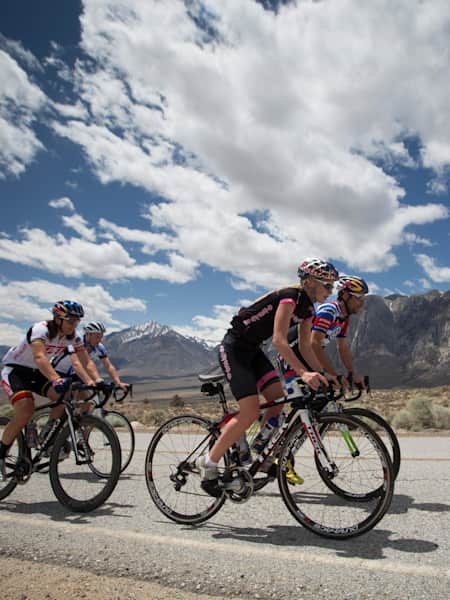
5 ultra long-distance cycling tips your legs will thank you for
Part of this story

Red Bull Timelaps
Take on the world’s longest one-day road cycling event....
1. Pace yourself
Want to take on an ultracycling event in 2019?
© Alex Broadway/Red Bull Content Pool
2. Bulletproof your belly
Healthy, nutritious, the perfect meal for riders
© Christoph Oberschneider
3. Do not fail to prepare
4. develop a pack mentality.
© Lukas Pilz
5. Listen to your body, not your brain

8 of the most beautiful cycling routes in the UK
9 of the best cycling sportives that you can ride in …, the world’s toughest ultra endurance cycling events.

Training for long distance cycling: training plans, tips + more
Training for long-distance cycling is really important if you’ve got a long-distance cycling event on the horizon or are booking a multi-day, back-to-back cycling trip.
Cycling a long-distance – particularly over consecutive days – isn’t for the unprepared. You’ll want to put in place a long-distance bike riding training programme and you’ll need to consider nutrition, hydration and your kit. This will ensure you’re ready and raring to go!
In this article we interview John Dewey, who back in 2017 recorded the 3rd fastest time over 25 miles ( here ) and also successfully completed an Everest up Alpe d’Huez a couple of years ago. He shares his tips for getting ready for endurance riding and taking on many of the kinds of tough, long-distance rides we talk about elsewhere on this website.
Our aim is to help you with preparing for long-distance riding and perhaps even help you create your own long-distance cycling training plan. Whether that’s for the holiday of a lifetime, or your biggest challenge yet!
Read this for our top tips for preparing for long distance cycling.
What is a long-distance cycling training plan?
Cycling any distance that’s beyond what you’d normally tackle requires planning and preparation. If you’ll be taking on a multi-day cycling trip or a long-distance sportive in future, then you need a plan that will ensure you’re up to the challenge. Knowing how to train for long-distance cycling is the key to becoming fit and fast enough to cope with your upcoming event.
Before you start training for long-distance (or even ultra-distance) cycling, you’re already likely to have a decent base level of fitness. You might already be cycling several times per week, for instance, but training for cycling a long-distance will involve ramping this up on readiness for your endurance objective.
A good long-distance cycling training programme will make sure you’re ready to take on those mountain climbs, multiple days spent in the saddle or many miles more than you’ve ever ridden in that time frame before.
Benefits of having a training plan
- You’ll be faster when it counts
- Your overall fitness level will improve
- You can perform at your absolute best when you really want to
- You’ll be able to make the most of every moment of the cycling sportive or holiday
First step: what’s your goal?
When considering how to train for cycling a long-distance, the first thing is to focus on the event or ride that you’re planning to tackle. Preparing for a long bike ride – or a series of shorter ones spread over a series of days – involves thinking about the target.
What is the overall aim you have in mind? If it’s a sportive, do you simply want to complete it – or would you rather set yourself a time goal?
When you’ll be tackling rides over consecutive days, your aim may be more general. You might simply want to keep up with the pack. If you’ve spent a lot of time and money on a cycling holiday, then you don’t want to be spending your days struggling.
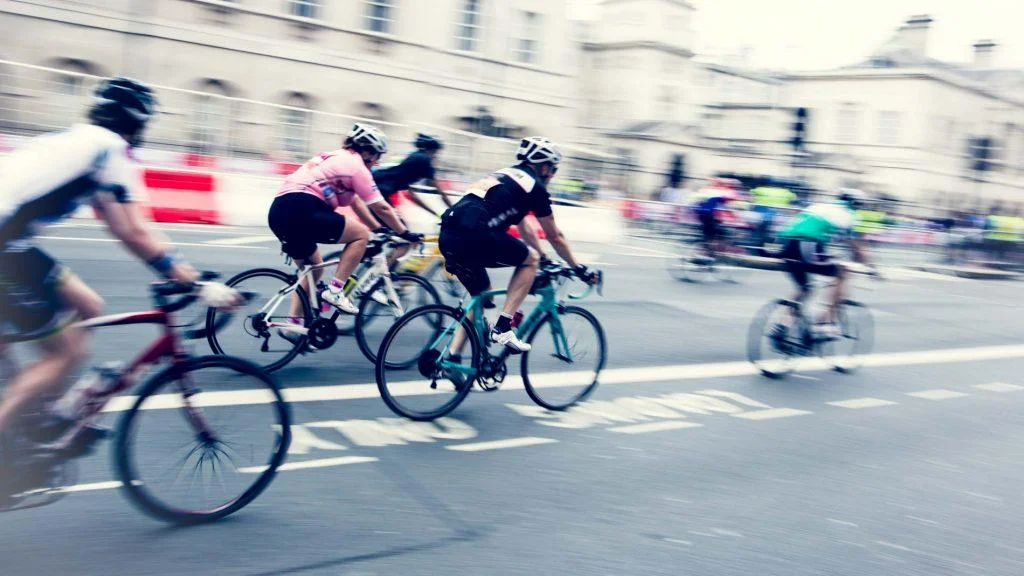
Training volume
Getting your training volume right is important. In addition to how many sessions per week to schedule in when it comes to training for distance cycling, you need to weigh up training duration versus intensity. Active recovery and rest days also must be factored into the equation.
How much to train per week?
If you’re used to riding three or four days per week in the normal run of things, then you may be tempted to head out training every day. One of the key tips for long-distance cycling, though, is that you need to pace yourself.
What you’re looking at is a training programme for long-distance cycling. Not a sprint, but rather a marathon. Five days of training per week factors in a couple of rest days, which are important when you’re working towards an endurance goal.
Training intensity vs. duration
When working out how to bike a long-distance, it’s not only about the amount of time spent in the saddle. The intensity of your training also counts for a lot. Any endurance race or multi-day cycling trip is likely to involve different levels of intensity, and your training programme ideally needs to reflect this.
The higher the intensity, the less time you’re going to be able to sustain it for. A mix of shorter, harder rides plus longer, slower ones is ideal. Some cross training will also give your cycling muscles a rest while strengthening others.
Rest days and active recovery
Another of the long-distance cycling tips you might want to bear in mind is to factor in active recovery as well as rest days. Gentler, lower intensity exercise such as swimming or walking can help to stabilise your muscles while releasing tension.
Allowing time for rest and active recovery can allow your body to reset, making it more ready than ever to take on the next training session.

Training routine
So when training for a long-distance cycling trip, it’s all about mixing it up as much as ramping it up. Rides of various intensities and lengths plus rest days, cross training and active recovery can all play their part.
Base phase of training
Base training is the first stage of any cycling long-distance training programme. This can be seen as the foundation or introductory phase. It’s all about preparing for the more intense workouts that will come later.
Your base training phase may last for six weeks to three months. This phase is about building a strong aerobic base to build on later. Four to six hours of training per week is average during the base phase, but this will depend on how much time you have at your disposal plus your existing fitness level at the outset.
Interval sessions for endurance rides or races
Undertaking some interval training can be a powerful tool when you’re working out how to increase cycling distance. Intervals are something no one tends to look forward to (they hurt!), but they can be one of the fastest and most efficient ways to build endurance. Intervals are also ideal for those short on time, and twice per week can be enough to really reap the benefits.
Interval sessions involve going for the burn. But for a very limited time only: we’re talking between just 30 seconds and a full five minutes each time. Begin with just 30 seconds at the start, building up to one and then several minutes as your fitness levels improve. Don’t forget to factor in a minute or two of recovery time for every intense burst.
Working with power meters, heart rate monitors and turbo trainers
If you want to fully understand how hard you’re working during training, then a power meter could be a very sound investment indeed. This can help you to understand your strengths and weaknesses better. It can also help you to see the tangible effects of your preparation for long-distance cycling. Find out more in our guide to power meters for cycling .
A heart rate monitor can also be a useful tool when you’re facing long-distance cycling challenges. This can help you to measure your training intensity – and can tell you when to take a break. Fitness tracking watches can be used for this purpose, or you can buy chest strap versions.
Turbo trainers are another part of the cycling tech equation. Using one gives you a way to train indoors on your own bike, so it can be a great time saver. It’s also good when you don’t want to deal with inclement weather. (On a side note, turbo trainers can be hired rather than bought if you want to test the water before committing – read all about hiring a turbo trainer in this article .)
Off bike training
When preparing for long-distance cycling races, core strength can be a formidable weapon in your armoury. When we talk about the core, we mean the centre of the body, minus the limbs. A strong core can improve your posture, assist with power transfer and even reduce your risk of injury.
Off-bike training is the key to developing good core strength. Push, pull, hip and knee dominant movements are ideal, and these can be done at home or in the gym. Ab rollers are also an excellent tool to increase your core strength.
Increasing the training volume over time
The build-up to long-distance cycling events involves preparing for the marathon ahead. Slowly but surely. Once you’ve covered the base phase, it’s all about increasing how much time and intensity you pack in per week. Consistency over the weeks is key – don’t fall into the trap of pushing too hard for too long on group rides if it will take you three days to recov er!
Rest days are equally important, though, and you’ll need to allow a couple of days per week to let your body recover. Once you’re in the training phase, around nine hours per week is a good volume to aim for. As outlined above, this should include a mix of intensities and activities.
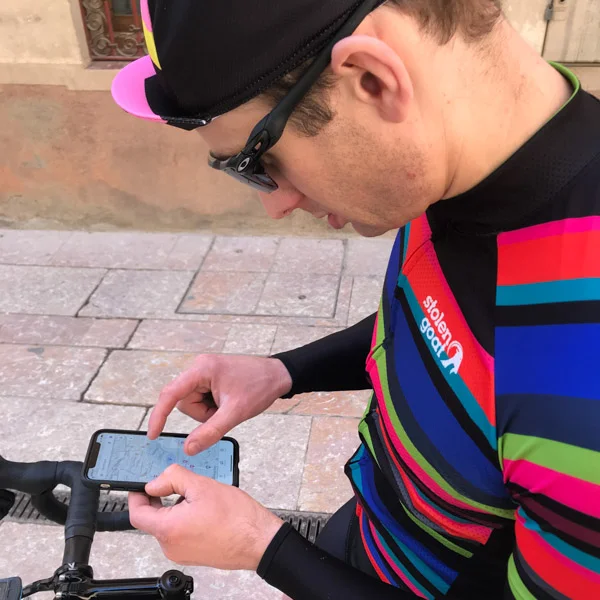
Plan your training rides
Vary your routes.
One thing I find essential for long-distance cycling training is mixing things up. With that in mind, a simple way to achieve this is to vary the routes you take when training. Including a variety of terrain – and gradients – will ensure you’re ready to tackle a range of these during the event itself.
One of the key benefits of long-distance cycling training is that you can get out there and explore while maximising your fitness levels. Switching up your routes can therefore help to keep you motivated.
Take the long way home
If time is of the essence, then it might be about fitting in some long-distance road cycling wherever you can. Could you, for example, take a longer route home from the office? Perhaps covering a steeper incline or longer stretch of smooth tarmac en route?
Try multiple days
It’s also sensible to include consecutive days of riding on your long-distance cycling checklist. It’s no good booking a long cycling trip or signing up for a multi-day event if you’ve never done any multi-day cycling before you go. This will also help you iron out any problems with your kit set up.
Training camps and coaching
A dedicated training camp can form an integral part of preparation for long-distance cycling event.
A cycling training camp involves training on your bike for a set time period. They’re ideal for those preparing for any kind of endurance event. During a typical camp, you’ll become familiar with spending hours in the saddle while improving your speed, stamina, strength and fitness.
Discover more about cycling training camps in this complete guide , or take a closer look at Spanish cycling camps here .

Nutrition and fuelling for long-distance cycling
A key factor in how to ride long-distance cycling is to get your hydration and energy levels just right. You can read our in-depth blog post on nutrition – but here are some of the key of the points to consider.
Hydration strategies to maximise performance
Keeping hydrated is vital. A good rule of thumb can be to take a drink every 10 to 15 minutes while on your bike. Take two or three sips each time to avoid dehydration. So make sure you have a good water bottle, plus a spare, and have found out in advance where you’ll be able to refill this along the way.
Your performance will soon suffer if you don’t get enough fluid on board. The symptoms of dehydration include overheating plus decreased sweating, and less effective use of muscle glycogen. A good sports drink will provide energy, improve absorption and provide salts and other key nutrients.
Your performance will soon suffer if you don’t get enough fluid on board. The symptoms of dehydration include overheating plus decreased sweating, and less effective use of muscle glycogen.
Hydration in the run-up to a big ride is also critical, so pay particular attention to this during the 24 hours before setting off.
Energy bars and gels for sustained energy levels
Getting enough fuel on board is critical for endurance riding. When you’re pushing yourself to the limit, the last thing you want is to hit a slump.
It’s easy to underestimate quite how much energy is required . Depending on the conditions and your physiology , intensive cycling may require as much as 1,000 calor ies per hour, with the body quickly depleting its reserves of readily available glycogen. That’s more than four Mars bars every hour (this is not a nutritional recommendation!).
On-the-go sources such as energy gels and bars mean you can keep going without getting off your bike, though it requires focus and effort to remain well fuelled for long periods .

Fuel your ride with Veloforte
(And save with a generous 20% discount!)

Enjoy award-winning sports nutrition on your next long ride or cycling holiday, with an exclusive offer: 20% your next purchase.
Veloforte’s performance range delivers quality nutrition to fuel epic bike rides and multi-day adventures. When you’re riding long distances, you need food and drink you can count on. Veloforte’s range provides fast release carbs and zero compromise on flavour and quality.
If you’re new to Veloforte, check out the starter pack with its curated mix of 9 products for before, during and after cycling.
🍊 100% real ingredients
⭐ 17.5k five-star reviews
🏆 26 Great Taste Award stars (to date!)
Veloforte: a cyclist’s secret weapon.
Simply use code EPIC-20 at checkout for a one-time 20% off any of the Veloforte range until 30 September 2023.
(Tips: Code works for new and existing customers. If you use the code to subscribe to the starter pack, you’ll get the 20% discount on your first pack on top of the subscription discount.)
Tips on when to eat during long rides
There’s no need for carb loading the night before a long ride. Fish or poultry are good, light sources of protein, and you can add some carbs such as pasta, potatoes or rice.
A breakfast such as an omelette or porridge can ideally be eaten 90-minutes to two hours before setting off.
A protein drink at the end of the ride will help you to recover, and during the ride you can also refuel en route by taking on energy bars and gels. Research also suggests that some protein during prolonged exercise is beneficial to recovery.
Real food too
Many riders tackle long events relying on the same type of energy bars, drinks and gels they would use for shorter events. There are g ood physiological and psychological reasons why you should plan for variety in food and drink during long events .
Under heavy exertion and unpredictable event conditions , your body may not want or be able to ingest one particular form of nutrition . This could result in reduced appetite for nutrition or gastro-intestinal problems , a dry or sticky mouth, sickness or other discomfort, ultima tely reducing performance as well as enjoyment. You don’t want to accidentally lose a bar from your jersey pocket to find that this leaves you short of fuel for your ride .
Having option s of natural, protein rich , caffeinated or sugary snack s will help you meet your nutrition needs and achieve your best performance irrespective of unpred ictable factors like what your body is craving or if the event conditions are different from expected ( heat , cold , wind , length , etc.). Read this article for the inside story on the best snacks for cyclists .
Train with your ride-day fuel
How much to take on board during a ride varies enormously. So it’s important to try out the fuel you plan to use on the ride day when training. This way you can tweak what works for you in terms of what to take along – and how often to consume it.
Wear in your gear
Pushing yourself physically of course involves some discomfort. To ensure this isn’t overwhelming, our advice for long-distance cycling has to cover your kit. Is your bike itself as comfortable as it could be? If not, could you adjust the height, or replace the saddle?
Though it may be tempting to wear box-fresh clothing and footwear on the first day, old faithfuls are a more sensible choice. Comfortable clothing that fits like a second skin is the way to go. Rather than contending with surprisingly scratchy fabric, or cleats that rub every time your foot turns.

Recover well
It’s not only about preparing for long-distance cycling. What you do afterwards can also be very important.
Tips for recovery
Once your big ride is complete, taking on a protein drink is the ideal way to kick-start the recovery process.
A dinner rich in important nutrients will also help your body to heal after being pushed to its limits. If you’ll be back in the saddle the next day, plenty of light protein can help your system to rebalance as you sleep.
Quantity and quality of sleep is important – p rofessional cyclists sometimes sleep in excess of 10 hours per day . Try taking a nap in the afternoon if you have this luxury!
Avoiding too long in the bar is wise if you’ve got to be riding again the next day!
Preparing for a long cycle ride is so much easier when you plan well ahead of time. Things to think about include what to wear, how to refuel, the weather at your destination and of course making sure your bike is in tip-top condition.
Plan your kit and fuelling
As touched on above, choose clothes and shoes that are comfortable and worn-in rather than opting for the unknown. Try out your energy gels and bars in advance, making sure you stock up on plenty before your trip.
Route planning
If you’re taking a cycling holiday with a tour operator or are taking part in a sportive, then it may be that the route is already taken care of. When this is not the case, you’ll want to weigh up your options and pin down the best routes before you go.
This guide to route planning and the best apps for cyclists should help when you need to map out where you’re going.
Gearing is something that is often overlooked. However, if you’re tackling an event or multi-day ride in the mountains, you want to make sure you don’t run out of gears!
Think ahead and consider whether your bike needs a trip to the bike shop for a new cassette or chainrings to give you some more gears. If it does, make sure there’s still time to practice using it before the big day.
If you’re taking your own bike to the sportive or on holiday, then having it fully serviced before you go is surely a no-brainer. Why take the risk of running into avoidable mechanical issues? If you hire a bike, tell them you’ll be tackling long-distances. Don’t be afraid of asking – politely of course – whether the bike you’re renting is up to the demands of the job.
Weather and climate
Lastly, no list of long ride cycling tips would be complete without some mention of the weather wherever you’re headed. This could make or break your holiday or sportive, especially when the climate is very different from where you live and what you’ve been training in. Take this into account when planning where to go for your ride, during your training and packing.
In the mountains, in particular , temperatures and weather conditions can change rapidly. Allowing for a drop in temperature of 1 degree Centigrade for every 100 metres climbed is a helpful rule of thumb. A sunny 25 degrees Centigrade at the start of a sportive can easily become rain and freezing temperatures crossing an alpine col a few hours later , even in mid summer . You could be descending on wet and icy roads, soaked with sweat and depleted after a long climb. In this scenario, a thin long-sleeve shell can be a vital necessity , even if you’re determined to carry the minimum on your ride. There’s more on Alpine weather in this article.
While the long-distance cycling benefits are huge, preparation is crucial. Whether it’s a cycling holiday to discover somewhere new over multiple days or the challenge of an as-yet uncharted sportive, the only way to get the best out of the experience – and yourself – is to train and plan ahead during the months leading up to the endurance event.
We hope this article has provided some useful tips for long bike rides.
If you want more info on cycling training camps , check out our guide here.
If you want someone to guide you through the process of creating a tailored training program just for you and your event, professional cycling coaching is definitely something to look into.
Please support Epic Road Rides
A huge amount of time and effort goes into the article you’ve just read, all with the aim of helping you!
If you found what you’ve read useful, I’d really appreciate it if you dropped something in the tip jar here .
It’s a way you can say thank you and help us carry on creating top quality content with no annoying ads and no pay wall.
Leave us a tip here!
Got a question for John?
Fill out this form and we will send it to John. We aim to get you an answer within 24 hours wherever possible!
We will use this info to send the enquiry to John and/or their team. Our privacy policy explains more and here’s a reminder of our disclosure policy and terms and conditions.

John Dewey , is an avid cyclist with a tendency to underestimate total riding time (or over-estimate his speed)! It’s been a few years since he hung up the TT skinsuit, but his love of riding continues unabated.
The contents of this website are provided for general information purposes only. It is not intended to amount to advice and you should not rely on it. You should carry out your own due diligence and take professional advice. We make no representations, warranties or guarantees, whether express or implied, that the content on our website is accurate, complete or up to date. If you use any information or content on this website, download from, or otherwise obtain content or services through our website, it is entirely at your own discretion and risk. Epic Road Rides Ltd disclaims all liability and responsibility arising from any reliance placed on the information and content on this website. Find out more here .
Leave your comment
Click here to cancel reply.
- Name (required)
- Mail (required) (will not be published)
This site uses Akismet to reduce spam. Learn how your comment data is processed .
Privacy Overview
This site has limited support for your browser. We recommend switching to Edge, Chrome, Safari, or Firefox.
🚚 Rapid International Shipping FREE shipping will be applied at checkout
Earn 10% back with Refuel Rewards
📦 Subscribe & Save 15% on every order
- Bundle Builder
- Find Your Fuel Quiz
- Refuel Rewards
- #FuelBetter Blog
- Sustainability
- Become an Ambassador
- Subscribe & Save 15%
- Create account
New customers save 15% with code WELCOME15
Cart 0 items
Sorry, looks like we don't have enough of this product.
Shipping & taxes calculated at checkout
Long Distance Cycling: Tips and Training Guide
By Team Veloforte March 29, 2022

Are you ready to go long? Not sure what to pack, or how to go about training for a long ride?
Veloforte Creative Director, Gareth Winter, knows a thing or two about long distance cycling, having ridden with icons like Bradley Wiggins and Eddy Merckx. We got his insight into the best ways to prepare, train and fuel for a long ride .
Read on for a comprehensive guide to stronger, happier long rides.
10 crucial tips for long distance cycling
Pace yourself, build up gradually, pedal smarter, not harder.
- Go together
Get your gear right
- Prepare don’t repair
Protect your assets
Fuel. a lot., break it into sections.
- Don’t neglect your post-ride recovery
Download the ebook above.
Let’s start with the obvious. You’re not going to be able to go all-out for six hours, and if you set off all guns blazing you’ll probably find yourself flagging long before you reach the finish line.
Don’t burn all your matches in the first quarter. Aim for a steady flame — you’re endurance pace, also known as Zone 2 (for those who ride and train with data), feels relatively comfortable and you should be able to hold a conversation.
You will have to dig a little deeper on the climbs, but you can recover on the descents to even it back out. If you pace it right, you can light your final match in the last hour and burn the box to the finish line.

We’ll go into more depth on how to train for long distance cycling below, but the golden rule is: build up to it gradually. Adding on the miles to your training too soon is a one-way ticket to overtraining and injury.
Instead, try adding 10% to your weekend-long rides to develop leg strength, aerobic fitness and the all-important mental toughness to go long.
When you’re going long, you’re going to get to know your bike pretty well. So it’s important that you work with your bike — choose efficient gear to save your legs.
It’s wise to pedal with a higher cadence in a lower gear, which will cause less resistance — and less muscle soreness over the duration of your ride.
A 100km cycle isn’t just a challenge on the legs. It can be a real test of mental strength too. So it’s always good to go together, especially if you’re new to long rides. Don’t underestimate the mood-boosting properties of having somebody to share the experience with, and drafting other riders will save you a lot more energy.
Going together is also great insurance against things going wrong.
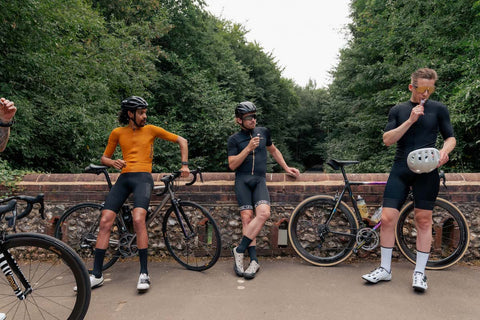
“Bike fit is everything” , is Gareth’s motto.
Comfort is speed, especially over long distance. If your bike fit is optimised — saddle height and position, reach, stack, bar width, crank length, cleat position, etc. — you won’t be tortured by numb hands, stiff shoulders, sore saddle area or, worst case, develop a knee strain.
Wider tyres with lower pressure are much more comfortable over long-distance, they are also proved to be faster when paired with a wider rim — aerodynamically and with a lower rolling resistance.
Personally, I ride a 28mm tyre with a 30mm (externally) wide rim. Now you need to decide on how tough your tyres need to be. Generally speaking, a lightweight tyre will have lower rolling resistance and lower rotational weight. This is great if you’re on beautiful smooth roads all day, but if you are riding on heavy roads, gravel sectors or cobblestones, you will need a tougher tyre, otherwise you will lose time and patience fixing punctures all day.

Saddles get a bad reputation, many people that have a bad experience with saddle discomfort blame the saddle. In most cases, the issue is with the saddle position:
- too high or low
- excessive rotation up or down
- or too far forwards or back.
Again, I cannot emphasise enough the importance of getting your bike fit right.
Write a list of everything you are going to need a fortnight before your ride, so you have time to keep adding to it, and if you need to order anything - it will arrive in time (such as a Veloforte top-up). A few nights before, lay it all out. I use the notes app on my phone, so I can add a tick box next to each item.

Prepare, don’t repair
“Failure to prepare is preparing to fail.”
Of course, mechanical issues, punctures and technical issues happen. But you can limit them from happening by regularly checking your equipment before you set off. To save yourself from standing on the side of the road fixing your companions' bikes, don’t be afraid to give their bikes a little glance when you meet for a pre-ride coffee.
For example, the night before a big ride, I inspect my tyres — you’ll often find little pieces of glass or flint buried in the tread. Pick them out with tweezers, otherwise they will slowly work their way deeper.
Long distance is all about efficiency. A clean, freshly lubricated drivetrain is far more efficient than a dirty one. Otherwise, you are wasting watts turning gritty gears.

You’ll also get intimately acquainted with your saddle, which means your rear end will likely develop some aches and pains throughout the ride. Practice shifting your position, and taking regular standing breaks to take the pressure off. And padded shorts go a long way.
Gareth works to a simple principle: “If you’re hungry, it’s too late”. Make sure you’re properly fuelled with a carb-forward breakfast before you start, and keep regularly topping up during your ride to avoid the bonk down the line.
Your body will need around 30–60g of carbohydrates per hour, with some people needing even more, so aim to eat every 30 minutes. And don’t neglect your hydration too.
Before I found Veloforte, I used to make my own date and almond energy balls. Halfway through my ride, they would turn into mush, due to the heat from my body. With Veloforte, I can eat delicious, natural, high-performance energy without all the mess.
My favourite ride snack is the Veloforte Avanti bar . It tastes incredible, is conveniently packaged into perfect pocket-sized portions, and holds its shape, unlike my homemade energy balls.

SHOP AVANTI
You need a lot of carbs. Sometimes it’s hard to keep eating, so don’t be afraid to drink your carbs too.
The most effective way to top up your engine is with a gel, our Veloforte gels aren't like others on the market. They’re made with natural ingredients, taste fantastic, and are easy to digest. I flush them down with plenty of water for absorption. Also, our Vivo hydration powder has 22g of carbs and will replenish your electrolytes.
Stick something savoury in your pockets too, my favourite is a cheese roll.
We’ve got an in-depth breakdown of nutrition for long distance cycling here .

SHOP CYCLING NUTRITION
60km, 80km, 100km or more. It can sound like an impossible distance, especially if you’re new to long distance riding. So mentally break down your ride into sections.
Three equal parts is a good rule of thumb. Working towards a mental checkpoint 10km or 20km away can give a huge positive boost. Checkpoints are also a great time to check-in: how am I feeling? How am I fuelling? Do I need to make any checks or changes?
Don’t neglect post-ride recovery
You’ve ridden all day. You’re exhausted, hungry and hopefully feeling pretty good about yourself. Your next ride is probably far from your mind right now, but don’t neglect your recovery.
For cycling recovery , make sure you’re restoring your body’s carbohydrate stores and taking on protein within 30 minutes of your ride. You’ll thank yourself tomorrow.

Training for long distance cycling
Your long ride starts way before you get in the saddle. Here are our top tips to get you to your long ride feeling strong and confident.
Where to start
The key to long ride training is to build up your aerobic capacity and tolerance for heavy mileage. That means increasing your long, steady rides at the weekend.
To avoid overtraining, gradually build up your Saturday or Sunday ride by 20-30 minutes each time. These sessions aren’t about bagging Strava segments, so focus on riding easy and getting miles in your legs.
Route planning
Spend time properly planning out your route. Take note of the terrain, elevation, what kind of surfaces you’ll be riding on. This will help you visualise your day in the saddle and also help you tailor your training to best replicate the kind of conditions you’ll be riding in.

Prepare for hills
Even if you’re not attacking mountains on your long ride, you’re going to end up covering some hills. Over several hours that elevation gain can add up — even on a seemingly ‘flat’ ride — and if you’re not prepared for it your legs won’t thank you.
To be well prepared for the terrain, incorporate hill sessions into your training. You’ll thank us later.
Train with your fuel
You’ve heard the expression, “nothing new on race day?”. Well that goes for your long ride fuelling too. An all-day adventure on the bike isn’t the time to be experimenting with new fuels and flavours (especially if you’re miles away from the nearest toilet).
Train with your fuel. Get used to opening and eating your energy bar or gel while pedalling. Find your favourites and learn how frequently your body needs to fuel.

Wear in your gear
You should make sure to wear in your gear too. You don’t want any unexpected chafing from new clothes on the day of your long run. Find the best combo for you and make sure you practice riding in it. And don’t neglect the little things — like cutting your toenails.
Exercise off the bike
You knew it was coming. Enduring a long ride will be a whole lot easier and more comfortable if you’re focusing on strength and conditioning. Make sure to factor in one or two strength and conditioning sessions a week.

Don’t neglect your core, as this will give you balance and stability in the saddle and help prevent any weird posture, which can hurt down the line.
Recover strong
Don’t leave recovery to chance. Restore your body’s energy supplies after exercise and take high-quality protein on board to give yourself the best chance of recovery.
What to pack for long distance bike rides
Preparation is key to peace of mind on a long ride. Here’s what you should be packing:
- A minimum of two spare inner tubes
- Tyre levers
- A bike multi-tool
- A pump (CO2 inflators are handy too, but we’d always carry a pump)
- Emergency cash or debit card
- Plenty of cycling nutrition (and a bit extra for emergencies)
Sufficient clothing including warm layers

What to eat for long distance cycling
Nutrition can be the difference between a successful long ride and a disappointing failure. Get your fuelling right and you’re already halfway there.
We’ve done a deep dive into nutrition for long distance cycling , but here’s some wisdom from Gareth:
- Keep your fuel natural
- Train with your fuel so you know how your body will respond
- Don’t be afraid to drink your calories
- Make time for savoury foods. A cheese sandwich can work miracles a few hours into a ride
- Tags: Cycling
Are you ready for your longest bike ride? Here’s how to prepare in the lead up and succeed on the big day
There's still time for an epic summer cycling adventure. We guide you through the essential preparations to conquer your longest ride of the year
- Sign up to our newsletter Newsletter
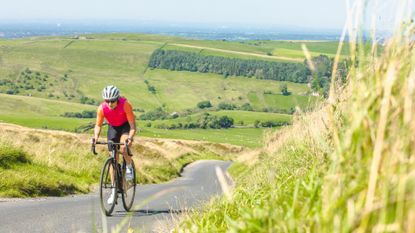
- Planning and preparing
- In the lead up
The day itself
The after-party.
- ‘I rode for 18 hours, and here’s what I learnt’
Make your own mile munchies
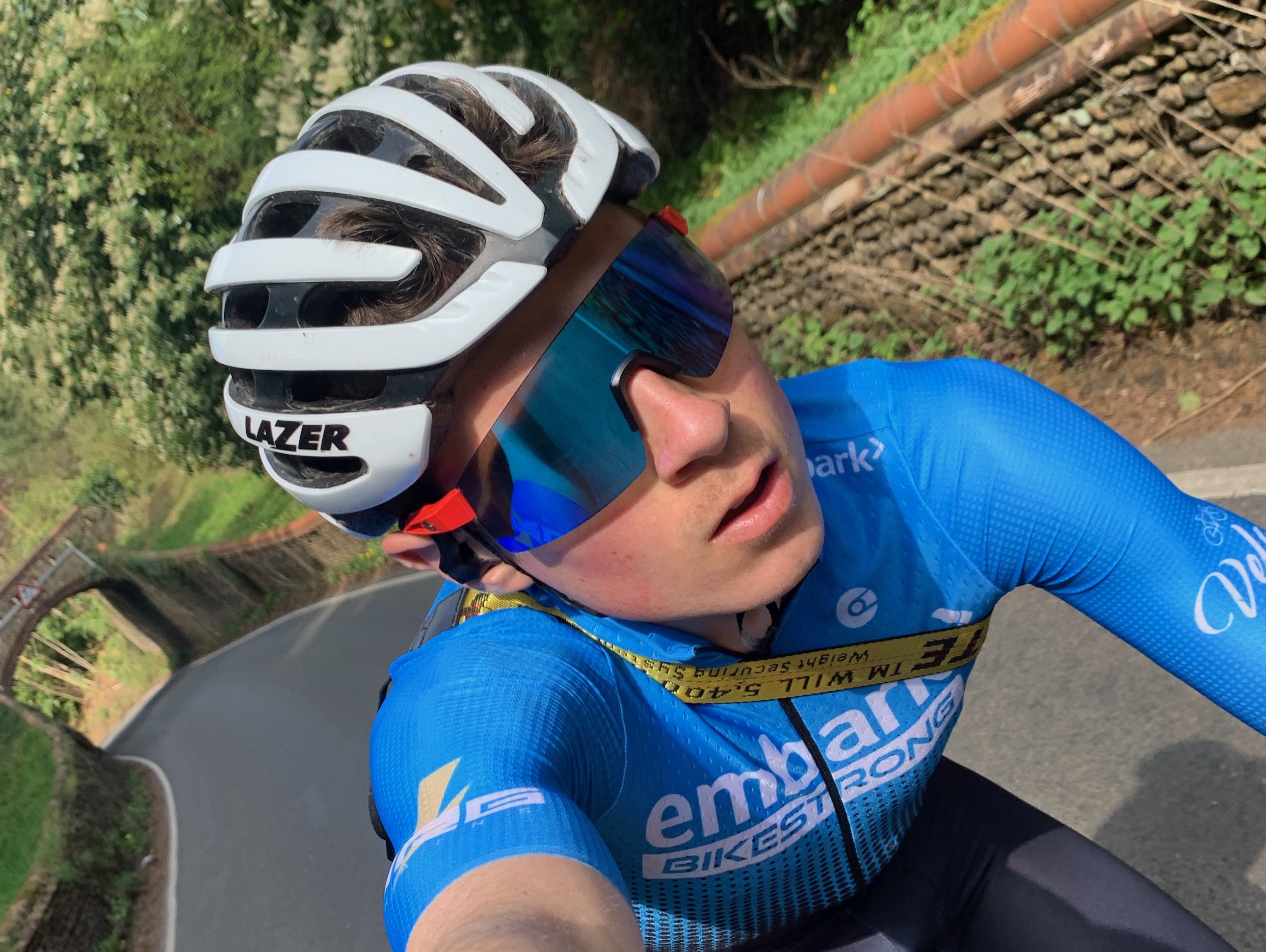
The summer is a great time for ticking off your longest ride of the year, but time is running out on the sunniest season. Whether to explore new roads and scenery, to challenge your limits, or just for a sense of accomplishment and adventure, there is something very special about pulling an all-dayer. Right from the moment you decide to do it, heading into the unknown, both in terms of distance and physical endurance, is incredibly exciting.
Of course, this bigger-than-usual ride requires some careful planning and preparation – and that’s the purpose of this feature. We’ll break down the challenge into manageable chunks so that you can head out feeling confident and ready to make the most of every moment.
Planning and preparing for your longest bike ride
How far is too far?
The first and most important question is, how far? This must be tailored to your experience and current fitness. “Consider what you’ve done before, and make the goal further than that,” suggests coach Amira Mellor ( edgecoaching.cc ). “If you have only ever ridden 100km, don’t go attempting 360km.” Perhaps you’re ready for your first 100-mile bike ride , but be realistic and don’t try to add more than about 20% on top of the distance you’ve achieved before.
How much training is needed?
Ideally you’ll have put in at least 10 weeks of consistent riding, steadily building up your endurance and mileage. “If you’re aiming for 100 miles, I would suggest doing a five-hour ride nine weeks out, followed by a six-hour ride six weeks out,” advises Mellor. “After that, shorter rides of three to four hours should be enough. Accumulated time on the saddle is what matters most.” Focus on putting in the hours at a sustainable pace and keeping stops to a minimum.
Do I need to complete the target distance in training?
Get The Leadout Newsletter
The latest race content, interviews, features, reviews and expert buying guides, direct to your inbox!
No, you do not need to have completed the distance in a single ride during your training. Nor should you ramp up your volume too dramatically. “If your normal volume is six hours a week, you can’t jump straight into a 12-hour training week,” says Mellor. “Instead, aim for a slow progression, increasing volume by 10% per week.” This steady progression allows your body time to adapt to the increase in volume, reducing the likelihood of overtraining , injuries and illness .
How hard should I ride in training?
“Long, easy rides are the key,” says Mellor. “There’s a time and place for shorter interval sessions, especially when working a full-time job, but for long rides, you need base endurance.” A long day out, such as a 100-mile ride, places big demands on your aerobic system, meaning you need to be able to churn out Zone 1 and 2 intensity for long periods of time.
Sweetspot training is great for long ride preparation. Riding at around 90% of your FTP is a level of intensity that is uncomfortable but manageable and fast-tracks your sustainable power. Be warned, though, long blocks of sweetspot are hard! Start with two times 15 minutes, adding a third and fourth interval only once you feel ready. Repeat the session once every seven to 10 days.
In the lead up to your longest bike ride
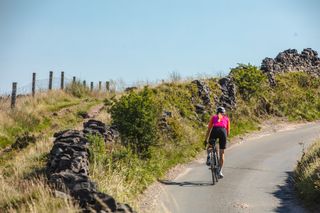
Do I need to taper?
Yes, a taper allows your body to freshen up and consolidate training gains. “Around 10 days out from the event, start cutting down the duration of your long rides to a maximum of three hours,” says Mellor. “Include at least two rest days in the final week before the big ride.” One or two short, sharp sessions during the final 10 days can be effective in keeping your engine primed without causing too much fatigue.
What about the bike?
Your bike as well as your body is taking on its biggest challenge of the year, so it needs to be in tip-top condition. Make sure it is clean and that there is plenty of life left in the brake pads and chain. Safety and peace of mind are paramount, so do not leave these checks until the last moment.
How many layers?
Be ready to amend your kit choices accordingly. Hopefully it’ll be warm enough for bib shorts and short-sleeved jerseys , but if you’re starting early in the morning, you’re likely to need a thin gilet and/or arm-warmers to begin with – both of which are easily stashed in your jersey pockets once the heat of the sun breaks through.
What am I forgetting?

A long day under the sun won't just drain your water supply but also your batteries. Fully charge all your electronics: phone, cycling computer , shifters and bike lights (the latter just in case).
How to research the route?
Technology has turned route-planning from a chore into a pleasure. Apps such as Veloviewer or Google Maps provide so much data it’s as though you’re previewing a Tour de France stage. Scout the route from the comfort of your sofa. Are there going to be any steep climbs towards the end that you’ll need to save some energy for? Are there any dangerous descents ? Where’s the best place to stop for lunch? Get it all mapped out in advance.
How to navigate?
Most routes are available as a GPX file which can then be downloaded onto your GPS head-unit. To do this, you must first open the GPX file in your chosen app, e.g. Garmin Connect , where you can select to share the route with your head-unit. Within a few minutes the route will be accessible on your bars via the navigation menu; click and go!

What to eat for breakfast?
The most important meal of the day? Well, it certainly is today. Make sure you get up early enough for a hearty breakfast. “Eat breakfast at least an hour before you start riding, and prioritise carbohydrates over other macronutrients,” advises performance nutritionist Danilo Coppola ( @danilo.copp on Instagram ). “You should aim to consume at least a gram of carbohydrates per kilo of body weight – but don’t eat so much that you feel uncomfortably full. Starting the day with gastrointestinal discomfort could seriously hamper your performance.”
Here’s a sample breakfast for a 70kg cyclist (scale up or down as suits):
- 60g oats
- 150ml skimmed milk
- 10 sweet cherries
- 1 tsp of honey
How to pace it?
Remember, this is not a race, so don’t get carried away early on while you are still feeling fresh. Pacing yourself is crucial. Keep an eye on power and heart rate as well as perceived effort, and stay within the effort level you proved to be sustainable during your training. “Even if this means dropping off a group up a climb, making sure your heart rate is not drifting over threshold will keep you from blowing up,” Mellor explains, who recommends using heart rate to stay in Zone 2 throughout. At the most basic level, your effort should be low enough that you’re able to chat.
How to save energy?
As well as thoughtful pacing, smart positioning and road craft can save you a huge amount of energy. If you’re riding with others, alternate the lead so that everyone gets roughly equal time drafting. Cycling in the slipstream saves 20-40% of energy. An efficient cadence plays a part too: aim for 80-90rpm to keep your legs spinning without overstressing the muscles. ‘Spin to win’ as they say.
How much do I need to eat on the bike?
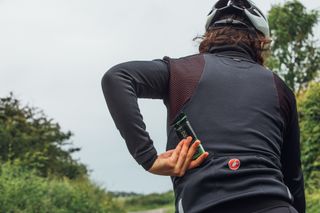
As a minimum, you’ll need to consume one gram of carbohydrate per kilo of body weight per hour. “For very long rides, the recommendation is 90-120g of carbs per hour,” says Danilo Coppola, “with the caveat that the athlete’s digestive system has to be able to tolerate these high amounts.” Before the big day, you should have tested out your cycling nutrition to make sure your gut can handle it. “Eat solid sources of carbs such as bananas and flapjacks in the first few hours,” Coppola recommends, “before switching to energy gels and liquid carbs in the later stages, as these are easier to digest.” Sticking your nutrition plan to your stem can be a useful reminder.

How much to eat afterwards?
Although it can be tempting to order the biggest, greasiest burger and chips on the pub menu and wash it down with several pints, spare a thought for your depleted body. “Athletes should prioritise glycogen replenishment,” says Coppola, “and this is best done within the first 30 to 60 minutes after you finish riding”. A 70kg rider should aim to consume about 70g of carbohydrates and 20g of protein in this post-ride meal, equating to 1g carbs and 0.3g protein per kilo of bodyweight. Adding a protein shake is an easy way to boost that protein figure.
Where’s my soigneur?!
Sadly most of us don’t have the benefit of a personal soigneur – so you’ll thank yourself for having pre-cooked pasta ready to reheat and wolf down as soon as you get home. Without a soigneur to massage your legs, an easy spin the next morning can work wonders. This very, very gentle ride can be paired with some yoga and foam rolling to further mitigate the delayed-onset muscle soreness felt the next day.
Learning the long way: ‘I rode for 18 hours, and here’s what I learnt’
At the end of April I took on the Traka, a 360km (224 miles) gravel race around Girona in Spain . This was my longest ever ride – but quite a big margin – and I learnt some important lessons along the way…
- Dry lube was my best friend: Over very long distances in dusty conditions, chain lube wears off and needs replenishment to prevent the loss of precious watts in unnecessary friction.
- Pack some caffeine pills: I was riding for nearly 18 hours, and inevitably sleepiness was kicking in by the end. With no time to stop for a coffee , caffeine pills were my go-to alternative pick-me-up.
- Company keeps you merry: Having someone to ride with helped the kilometers tick by, breaking up the silence of my own thoughts.
- Tantalise the taste buds: Eating can become very monotonous during an ultra event. Combat this with a wide range of snacks. Personally I prefer to have some savoury snacks to hand.
- Don’t forget the multi-tool : A lot of things can go wrong with a bike in a full day’s riding. So don’t get caught out.
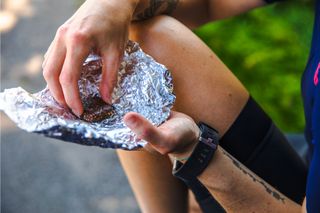
Making your own on-bike nutrition is a cost-effective alternative to shop-bought energy products. During lockdown, I let my imagination run wild and created a whole book’s worth of DIY recipes (available in PDF – drop me an email: [email protected] ).
Here are two of my favorite, easy-to-follow recipes:
1. White chocolate and peanut butter crispy bars
- 200g puffed rice
- 100g peanut butter
- 150g white chocolate
- 100g marshmallows
- ½ tsp vanilla extract
- Roughly chop 100g of the white chocolate into small chunks before placing in bain marie to slowly melt. Once fully melted, stir through the marshmallows and peanut butter until all has melted.
- Pour in your puffed rice and vanilla extract, using a wooden spoon to combine mixture together.
- Line a small baking tray with baking parchment before adding the mixture and using a wooden spoon to compress the mixture and properly press it out into the corners.
- Melt the remainder of your white chocolate and use a small teaspoon to drizzle over the marshmallows to decorate.
- Place in the fridge for one to two hours to set before cutting into the desired number of slices.
2. Chocolate peanut balls
- 200g oats
- 100g golden syrup
- 100g pitted dates
- 50g salted peanuts
- 3 tbsp cocoa powder
- To a powerful blender add the peanut butter, golden syrup and dates. Blitz until the dates have broken up to create a smooth sticky mixture.
- Pour in the cocoa powder and blend again.
- Finally add in the oats and salted peanuts, using a wooden spoon to combine the mixture.
- Using your hands, roll out the mixture into 12 roughly equal-sized balls.
Here you can find more homemade energy bar recipes .
This full version of this article was published in the print edition of Cycling Weekly. Subscribe online and get the magazine delivered direct to your door every week.
Thank you for reading 20 articles this month* Join now for unlimited access
Enjoy your first month for just £1 / $1 / €1
*Read 5 free articles per month without a subscription
Join now for unlimited access
Try first month for just £1 / $1 / €1
Tom Couzens is a racing cyclist currently representing The Ribble Collective on the road and the Montezumas cyclo-cross team off road. His most notable results include winning the Monmouth GP national series race as a junior; finishing sixth in the 2022 British National Cyclo-cross Championships; and he was selected to represent Great Britain at the European Cyclo-cross Championships in 2020/21. Tom draws on his high-level racing experience and knowledge to help Cycling Weekly readers maximise their potential and get as much as possible out of their riding.

All the teams and riders for the 107th Giro d'Italia
By Adam Becket Published 25 April 24

Giant filed a suit against Stages in February and four team members left the latter to join Giant
By Michelle Arthurs-Brennan Published 25 April 24
Useful links
- Tour de France
- Giro d'Italia
- Vuelta a España
Buyer's Guides
- Best road bikes
- Best gravel bikes
- Best smart turbo trainers
- Best cycling computers
- Editor's Choice
- Bike Reviews
- Component Reviews
- Clothing Reviews
- Contact Future's experts
- Terms and conditions
- Privacy policy
- Cookies policy
- Advertise with us
Cycling Weekly is part of Future plc, an international media group and leading digital publisher. Visit our corporate site . © Future Publishing Limited Quay House, The Ambury, Bath BA1 1UA. All rights reserved. England and Wales company registration number 2008885.
Multi-Day Tours
- Bike & hotel tours
- Bike & boat tours
- Destinations
- Boats & barges
- View all tours
- Bike tour reviews
- Tulip tours
- E-bike tours
- Gravel bike tours
- Family-friendly
- First-timers
- Staff picks
- Top rated tours
- Client favorites
- Discounts/specials
General info
- How to book
- Terms & conditions
- How to choose
- Guided vs. self-guided
- A typical day
- What to bring
- Extend your trip
- Travel insurance
- Passports & visas
- Why our travelers love us
- Tailwinds (our blog)
Packing for a bike tour

If you’re not sure if your suitcase is too heavy, carry it a couple of blocks at a fast clip, or up a flight of stairs without stopping. If you’re uncomfortable, it’s too heavy. (We recommend this activity for pre-dawn, before the neighbors wake up and wonder if you’ve finally gone over the edge.)
On most bicycle tours, you’re on the move with little time for laundry and drying. When possible, travel with fast-drying clothing – from undergarments to outerwear. Check out our clothing recommendations . Synthetic fabrics/blends are not only the most breathable and quick drying, they can also be the easiest to pack (the worst fabric to ride in is cotton).
A few ways to make the most of limited packing space:
- Stuff hollow items (like shoes, helmets, and water bottles) with other small items (socks, MP3 player, etc.). No dead space!
- Roll clothes to eliminate air and reduce wrinkles.
- Packing cubes make the most of small spaces, organize your items, and make packing and unpacking a cinch (key for the daily hotel moves typical of bike tours).
- Stuff sacks are another helpful packing organizer.
Note that bike rentals generally do not include helmets and that you must bring your own.
Suggested packing list
See information on appropriate gear and equipment for your bicycle tour.
- Water bottle
- Waist pack or small day pack
- 2 pairs of riding shorts (we recommend padded shorts and that you try them out before your tour)
- 2 riding jerseys (quick-dry)
- 2 pairs of quick dry socks for cycling
- Comfortable shoes for biking and walking
- Riding gloves
- 2-3 tee-shirts or casual shirts
- Trousers or jeans
- 1-2 pairs of casual socks for non-cycling activities
- 3-5 pairs of underwear (quick-dry)
- Cool-weather jacket or rain jacket
- Extra layers and gloves for cooler season or climate (thin, thermal, water-resistant)
- Bathing suit
- Toothbrush and toothpaste
- Hand sanitizer
Miscellaneous
- Passport , wallet and ID
- Health insurance card
- Travel insurance card
- Cash and/or credit cards
- Camera (with spare battery)
- Plastic bags (for dirty laundry, wet clothes)
- Electronic chargers (for the camera, e-reader, cell phone)
- Adaptors or converters
First aid kit
- Insect repellent
- Antiseptic cream or antibiotic ointment
- Band-aids and ‘Second Skin’ for blisters
- Salve for chafing
- Medications (in original bottles with your name on them)
Clothes Tips on clothing for your bicycle tour. Special clothing items, map holders, day packs, adaptors/converters, and more.
Gear and equipment Help planning and packing information on what gear and equipment you'll need and want while on your bicycle tour. Tips, links, advice and more!
Find my tour
- Guided vs self-guided
- Getting around Europe
Popular trip types
- Family-friendly tours
- First timer tours
HOW TO REACH US
Phone (local + international): 1-215-613-0874
BikeTours.com PO Box 30 Dimock, PA 18816
Office Hours: Monday-Friday 8 am to 5 pm EST
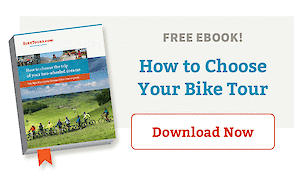
- Bike day tours
- Discounts and special offers
Top destinations
- Switzerland
Top tour categories
- Great for first-timers
- Bike and boat
- Become An Agent

Respect Senior Care Rider: 9152007550 (Missed call)

Help Control COVID-19 New

Get In Touch
Claim Assistance Numbers
Health toll free Number 1800-103-2529
24x7 Roadside Assistance 1800-103-5858
Global Travel Helpline +91-124-6174720
Extended Warranty 1800-209-1021
Agri Claims 1800-209-5959
Sales : 1800-209-0144
Service : 1800-209-5858
- Motor Insurance
- Health Insurance
- Travel Insurance
- Home Insurance
- Cyber Insurance
- Knowledge Bytes
- Senior Health Care
- Announcements
- Pet Insurance
- All Categories
- Property Insurance
Bike Maintenance Tips for Long Trips: Keep Your Ride Smooth and Safe
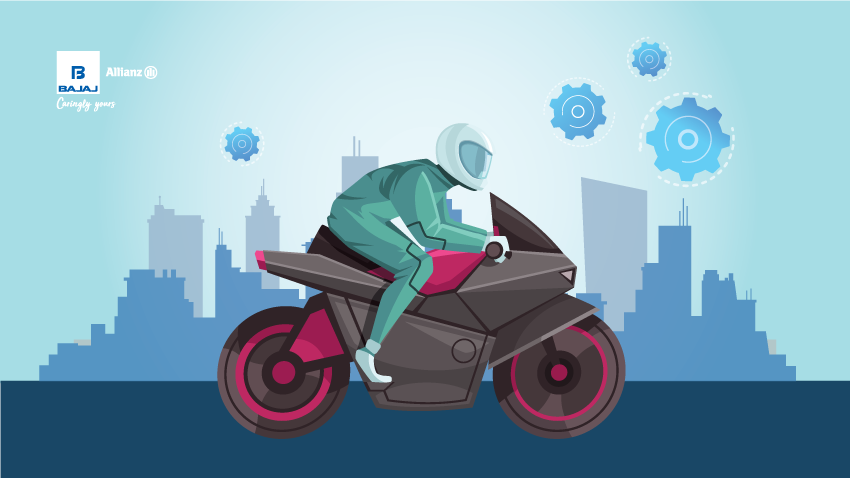
Bike Maintenance Tips To Ensure Optimal Two-Wheeler Performance
Pre-trip inspection, fluid levels, brake inspection, chain and sprocket maintenance, electrical system, suspension and steering, emergency kit, regular maintenance.
Was this article helpful? Rate it
Average rating 5 / 5. Vote count: 18
No votes so far! Be the first to rate this post.
Like this article? Share it with your friends!
Share Your Thoughts. Leave a Comment Below!
Leave a reply cancel reply.
Your email address will not be published. All fields are required
Request Call Back
Full Name :
Mobile Number :
please select product
Related Articles
Twitter feed.
- Share full article
Advertisement
Supported by
How to Turn a Bike Ride Into a Bike Workout
Cycling isn’t just fun. It can also deliver big fitness gains with the right gear and strategy.

By Amanda Loudin
The reporter is a former triathlete, who still dusts off her bike on warm spring days. This summer she’s tackling her first gravel bike race.
There’s no better way to take in a perfect spring day than from a bike. The songbirds are back, the daffodils are blooming and your dusty 10-speed is looking for a rider.
But hopping on a bike can be more than a way to pass a pleasant afternoon; cycling can also give your fitness level a powerful boost without straining your joints, preparing you for higher-impact sports like running or tennis.
“There’s a reason cycling is the gold standard for people rehabbing knee injuries,” said Seth Forman, a sports performance trainer in New Jersey.
Research suggests cycling can improve cardiovascular health, which in turn lowers cancer mortality. That said, riding is not a perfect form of exercise. While it’s excellent cardio, it won’t boost bone health as much as sports like running, because your weight is supported by the bike.
“You need to supplement with resistance training to fill in the gaps,” Mr. Forman said.
But you don’t need to invest hundreds of dollars in Lycra to take your Saturday fun ride up a few notches to become a workout. You just need the right bike, gear and training approach.
Finding the right bike for you
Whether you’re pulling an old bike out of the garage or buying new, your first trip should be to your local bike shop for sizing. “If you’re not comfortable on your bike, you’re not going to ride it much,” said Marilyn Chychota, a triathlon coach in Tucson, Ariz., and former professional athlete.
Joe Traill, who owns Joe’s Bike Shop in Baltimore, said most stores will make free sizing adjustment to a bike they’ve sold. A more involved option is called a bike fitting, which usually starts around $100 and can include body measurements, flexibility analysis and more.
Also think about whether you want to ride on streets or trails . If you’re unsure, begin with a hybrid bike , which has wider, more stable tires and flat handlebars for bumpy terrain.
E-bikes are another option if you live in a hilly area, want to bike commute or worry about keeping up with friends. “Even if you’re riding for fitness, studies show some people will ride more and get more of a workout with the electric assist,” said Mr. Traill. Be careful purchasing an e-bike online, however, as some off-brand versions may pose a fire hazard .
Also, plan to purchase a good helmet — in the range of at least $50 — that comes equipped with “MIPS” (multiple impact protection system).
Getting fit
The first step in leveling up your bike ride is to focus on pedaling. You’re after a smooth pedal stroke, so begin in easy gears and aim to turn your pedals quickly.
Serious cyclists prefer clipless pedals and the special shoes that attach to them, which let you more effectively transfer power, especially on the upstroke. But they can be intimidating to beginning riders. Whether you use them or not, think about pushing and pulling your pedals in continuous circles, without any pauses or changes in cadence.
“Start by riding for about 20 minutes, three times a week, aiming for a nice consistent tempo,” said Ms. Chychota. “Ride at a perceived exertion of about five out of 10.” That means breathing at a rate that would still allow you to hold a conversation.
From there, extend the time you’re in the saddle for one of your weekly rides, ideally by about 10 minutes each time. Over the next three months, make it your goal to reach 90 minutes on that longer ride. On the other two, build the time as well, but cap it around 45 minutes to an hour, recommended Ms. Chychota.
This is true whether you’re new to cycling, or just getting back in shape after a long winter.
“I always start with shorter, easier rides,” said Steve Johnson, a travel writer in Minneapolis who returns to his bike every spring after months of winter sports. But he added: “I try not to miss more than three days in a row. By summer, I’m riding several times a week and doing long, hilly rides every weekend.”
Riding hills once a week is great way to push your fitness, said Ms. Chychota, once you’re comfortable riding the flats. She recommends starting with short climbs: Ride hard up a hill for one minute, return to the bottom at an easy pace — and then turn around and do it again. Start with four or five repeats, and gradually extend the length of these repeats until you can climb for four minutes, eight times over.
On one of your shorter days each week, consider adding some interval training — short bursts of speed followed by easier riding to increase your endurance and performance. Find a faster pace, around 90 percent of your maximum, that you could only hold for five minutes, and look for flatter stretches of road.
Here is a weekly progression that Ms. Chychota recommends. You should be challenged, but if you struggle to complete one week’s workout, it’s fine to repeat it until you feel like moving on.
Week 1: Five rounds: 30 seconds fast and one minute easier.
Week 2: Eight rounds: 30 seconds fast and 30 seconds easier.
Week 3: Two sets of eight rounds: 30 seconds fast and 30 seconds easier (with five minutes easy pedaling between them).
Week 4: Eight rounds: one minute fast and two minutes easier.
Week 5: Five rounds: two minutes fast and two minutes easier.
Week 6: Five rounds: three minutes fast and three minutes easier.
After this, you will be a fairly fit cyclist, but keep these workouts in your routine. As with any activity, remember to start low and slow, but also, don’t be intimidated, said Mr. Traill: “Cycling is a great form of exercise, and it’s also inherently fun.”
Amanda Loudin is a freelance writer covering health and science.
Cycling Around the Globe
The cycling world can be intimidating. but with the right mind-set and gear you can make the most of human-powered transportation..
Are you new to urban biking? These tips will help you make sure you are ready to get on the saddle .
Whether you’re mountain biking down a forested path or hitting the local rail trail, you’ll need the right gear . Wirecutter has plenty of recommendations , from which bike to buy to the best bike locks .
Do you get nervous at the thought of cycling in the city? Here are some ways to get comfortable with traffic .
Learn how to store your bike properly and give it the maintenance it needs in the colder weather.
Not ready for mountain biking just yet? Try gravel biking instead . Here are five places in the United States to explore on two wheels.

The 12 Best Beginner Motorcycles For Long Road Trips
I t's easy to romanticize the idea of setting off on a long road trip, especially when it concerns doing it on two wheels . It's a chance to revel in the freedom the open roads give you, explore, and, quite importantly, get to know the vehicle enabling this experience. Given that, though, it's critical to get the right kind of machine along for this trip.
UPDATE: 2024/01/26 16:17 EST BY RAUNAK AJINKYA
Road trips, in general, can be tough if you don't have the right motorcycle along for the ride, especially if you are a novice rider. Given that, we have updated this list to include a few more entries of motorcycles perfectly suited for the job.
This is especially true if you're a rider devoid of a lot of seat time. The last thing you want to do is bring someone's sportbike along because while it may have a lot of power and consume miles rapidly, it's something you'll tire of rather quickly because of the compromised riding triangle. Luckily, this list should help you get through that selection process. It features beginner-friendly motorcycles you can legitimately rely on for long road trips by the likes of Suzuki , Harley-Davidson , Yamaha , and even Ducati, among others.
How we got our model selections: To compile this list, HotCars made a list of all the appropriate motorcycles on offer that enable long trips. While power was considered a criterion to narrow the list down, the motorcycles also needed to be beginner-friendly, meaning priority was given to motorcycles with comfortable ergonomics, impressive fuel tank capacity, and easy-to-handle curb weight figures. It should be noted that this list is a mix of motorcycles currently in production and those that have been discontinued but can be readily found in the used market. Also, the motorcycles have been organized in increasing order of the current market values.
Top 10 Beginner Motorcycles Under 500cc
Suzuki boulevard s40, used price range: $2,000-$6,000.
Suzuki's cheapest Boulevard doesn't leave you wanting for much. The 652cc engine is strong but not too strong for the bike's weight. It's not quite as long as other cruisers, which is nice for a beginner, and it's got a fairly affordable used price range, too. The seating is relaxed, with handles a little closer to you.
The newer ones come in a cool street-color gray and a classic blue. The way it features less chrome with a blacked-out engine and black finish on the wheels makes it look sporty and simple. A single speedometer over the gas tank is analog, and it has plates on the sides for saddlebags if you need cargo space.
2019 Suzuki Boulevard S40 Specs
(Specs sourced from Motorcycle Specs )
Harley-Davidson Iron 883
Used price range: $2,000-$10,000.
This Harley-Davidson gets 833 America-made ccs of power and goes for well under $10k in the used market. It's one of the best Harleys to start with, and you won't get kicked out of a biker bar for owning one. The Iron 883 has a V-Twin engine. If you don't know, this is a cool thing to have if you wear a leather jacket with patches unironically.
Admittedly, you don't get quite as much for your investment as an Indian Scout Sixty, and both will always be less reliable than a Honda or Kawasaki, but there are some things that just don't compare, like the trademark Harley rumble! Plus, with motorcycles, there's always less to fix than with cars so that you can do a lot of the work yourself.
2008 Harley-Davidson Iron 883 Specs
Yamaha v star 250, starting msrp: $4,699.
The Yamaha V-Star 250 is one of the very best for uneasy beginners looking to road trip . A new one costs just $4,699, and it gets 78 MPG. That means 195 miles between stops, which is pretty decent for a motorcycle. If you haven't figured it out, most of the time, the numbers by the name represent the ccs in a bike, so this has 249 (thus, 250). That means it's a very comfortable beginner's bike that won't scare you but can still get up to cruising speed faster than most cars. It also means the bike is lighter and easier to control.
It has a decent rear seat for passengers and a good base for saddlebags and packs. The speedometer is analog, and the styling is classic, so you might get confused if you park by any V-Star from the past 40 years. Despite the timeless look, the bike holds up to aging well and won't feel rough or uncomfortable on a long trip.
2024 Yamaha V-Star 250 Specs
(Specs sourced from WebBikeWorld )
These Are The Best Cheap Beginner Motorcycles From Japan
Ducati scrambler sixty2, used price range: $5,000-$7,000.
The Scrambler Sixty2 is a 399cc sportbike marketed more towards women. It weighs less than any on this list at just 403 lbs, which is great for people worried about laying it down on accident. It may look like a "naked" (a sportbike with no fairings or extra body covers), but this bike gets just shy of 250 miles of range, and even though the seat is a little more aggressive and won't hug your buns, the way it's shaped actually is relaxing and won't rub your behind the wrong way like a dirt bike (for men and women).
This bike won't be able to hold saddlebags, but the Sixty2 makes a great road trip bike for someone who won't spend more than three days riding in a row and wants a good in-town motorcycle the rest of the time. Surprisingly, for its size (but not for Ducati's standards), it can go up to 100 mph, so you'll never be left wanting more power on the freeway.
2018 Ducati Scrambler Sixty2 Specs
Bmw g 310 gs, starting msrp: $5,890.
The BMW G 310 GS is an adventure bike , meaning with some knobby tires, it makes a decent dirt bike for trails as well. With an adventure bike, you get way more travel (7.5 inches) for smoother rides, a more comfortable seat than a dirt bike, and a more upright seating position than dirt or bullet bikes. The 310 GS is one of the cheapest Beamers you can buy new for just $5,890. That being said, it is a Beamer. This won't win any awards for reliability.
The 310 GS makes a comfortable 313cc that won't get you up any hill climbs but will easily take you up to 90 miles per hour. With 71 MPG, it has a range of 213 miles. The digital display shows gas, gear, and speed in bold fashion, and the LED light makes for a great off-road light in bright mode.
2024 BMW G 310 GS Specs
Honda rebel 500, starting msrp: $6,499.
The Rebel 500 is an affordable and comfortable bike that will last you your whole life. It has 471ccs, which won't let you do any wheelies but does get you up to cruising speed sooner than you need. To keep yourself from locking up your brakes (a significant factor in motorcycle crashes), you can and should get the ABS option. The blacked-out bike may mimic a Harley, but the low seat height makes it ideal for women and the height-challenged. It is also surprisingly fitting for full-height people.
The Rebel has been around for years, so used ones aren't hard to find, and a new one will run for just $6,499. The digital cluster is simple and includes a fuel gauge (not included on all motorcycles). Honda’s slip/assist clutch makes shifting easy for the uninitiated, but sadly, this doesn't come with an automatic transmission. The manual is very forgiving, easy to learn, and worth it, in our opinion. This bike is ideal for beginners who don't plan on switching bikes for years to come.
2024 Honda Rebel 500 Specs
These are the best beginner motorcycles money can buy, kawasaki vulcan s, starting msrp: $7,349.
According to their official website, Kawasaki advertises the Vulcan as being able to fit a wide range of people. The 649cc engine has a good kick at low to mid-range for city stops, but it can also get up to 100 mph. For $7,349, it will feel sportier and quicker than other bikes, but it's also reportedly fun to sit on on the freeway! It has one of the most natural seating positions of any bike under $10,000, probably because it's adjustable.
It may look nothing like a beginner's bike, but it is what Kawasaki offers as their entry-level cruiser . If you're not worried about the bike weighing a little more, it is a very forgiving and comfortable ride. ABS is available, features like a windshield and back support are easy to add, and they are a massive plus on long rides.
2024 Kawasaki Vulcan S Specs
Honda nc750x, starting msrp: $9,499.
If there were a contender for the bike on this list that you could buy with your eyes closed, the Honda NC750X would be right up there at the top of that list.
It's easy on the eyes, great for beginners in terms of the riding ergonomics, is affordable enough, has a great ride, and the DCT on it is the cherry on the icing. It even includes riding modes, a windshield, and a low seat height. That the NC750X often gets discounted is a puzzle.
2024 Honda NC750X Specs
Triumph tiger 660, starting msrp: $9,695.
The star of the show here is, of course, Triumph's lovely 3-cylinder engine, but the Tiger 660 is no one-trick pony. This is about as close to ideal for beginners to get on and go on a long trip .
Tack on luggage and load it up, and the excellent tractability of the motor will still pull you along comfortably. You can even add optional extras that will make the journey more comfortable, like additional lighting and heated grips. Hard to fault the Tiger 660, really.
2023 Triumph Tiger 660 Specs
10 best beginner motorcycles money can buy, bmw f 750 gs.
BMW's GS motorcycle lineup is legendary . The F 750 GS is a natural at completing longer journeys in absolute comfort. One of the most important factors is, of course, the seat, and the F 750 GS makes do with one that's ideally suited to road trips.
At 32.1 inches, it's much lower than you'd expect for a bike this size, but if that's not enough, BMW will also sell you a suspension lowering kit and soft seat, bringing the seat height down further to 30.3 inches. In addition to that, it also gets dynamic traction control, ride modes, and adjustable brake and clutch levers, among others. For the money, it's quite a deal.
2023 BMW F 750 GS Specs
Indian scout sixty, starting msrp: $11,749.
The Indian Scout Sixty is one "beginner" bike that will earn you a lot of respect . It starts at $11,749 and is pretty long and wide but isn't necessarily heavy. The wider handlebars give you better in-city control around corners, and ABS is an option. The engine is 1000ccs, the most of any on this list, but not something an average-fit person couldn't handle easily.
While this is more of a luxury option, it allows for things like a windshield (don't discount how useful one of these is after just two hours of 60+ mph wind in your face) and genuine leather saddlebags. The seat is wide, which benefits the narrow-waisted as well as larger people.
2024 Indian Scout Sixty Specs
Energica eva esseesse9+, starting msrp: $16,110.
This electric bike warrants some cautionary tales: First, do not listen to music until you are comfortable with traffic flow and riding defensively! Cars cannot hear you at all, and they can't see you too well either. Also, its range is 143 miles combined, which is not the best for long trips but is still passable with some planning.
With that out of the way, you get an 80% charge in 40 minutes with a fast charge! All you need to do is stop for a meal by a power station, and you're as well off as any ICE bike. The EsseEsse9 has a nice, upright position , but you're also working with a lot of torque, so make sure you take it slow, or you can pop a wheelie. Otherwise, unlike combustion bikes, it's small and simple and won't have any mechanical issues to stump you. The gauge is simple and can tell the range so you won't be left without power.
2020 Energica EVA EsseEsse9+ Specs
(Specs sourced from Bikez )
- Source for features: Respective manufacturers' websites
- Source for technical specifications: Motorcycle Specs, Bikez, WebBikeWorld
- Source for used prices: Cycle Trader
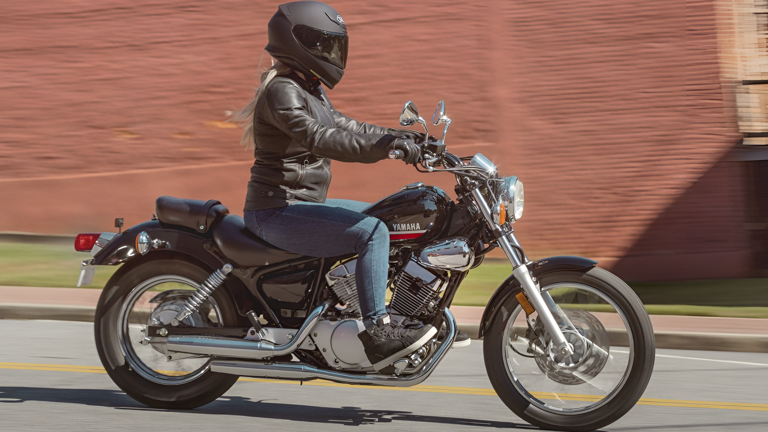

IMAGES
VIDEO
COMMENTS
Park yourself in a campsite or hotel for a day or two and explore the city or town or take shorter daily rides. "Distance is not as important as the journey," says Analise Cleopatra, a filmmaker and relatively new mountain biker who made a documentary of her first bike-packing trip in 2019.
You'll simply buy what you need on the way, and stay in hotels at night. I've split this post of bicycle touring tips into four sections: 1. Before you go - Preparing for a long distance cycling trip. 2. On the Road - Tips to make a long bike tour easier. 3.
The Touring Bikes for Long-Distance Travel; 2. Eat and Drink More. When you're out on a long bike ride, nutrition and hydration are key for sustaining your effort. Stieda says to aim to drink ...
Read on so you can be all set for the long distance cycling challenges that await! 1. Define your long-distance cycling goal. The first of our long bike ride tips is to set a goal. Like all objectives, it's best if this is SMART - Specific, Measurable, Achievable, Relevant, and Timely.
7. Turn out your wardrobe. Your average bicycle traveller will possess a maximum of two sets of clothes: one set for riding in, and one set for not riding in. This makes a lot of sense, since time spent travelling by bicycle is generally divided between — you've guessed it — riding, and not riding.
Bike Rack A Bike rack helps you bring your stuff along. With a bike rack, you don't have to carry a backpack with you all the time. Imagine carrying a backpack for more than 6 hours. It can give you back pain along with should cramps. A bike rack can help make your long ride much smoother and more comfortable as you become free from load.
The distilled wisdom of ten years of bike touring life, cycle touring tips and travel advice from hard-earned miles around the globe. This article documents my bike touring tips from extensive bicycle travels around the world. Whether you're a veteran long-distance cyclist or a bicycle touring beginner, this blog post is here to provide you ...
One of the most important tips for touring long distance is to pack lightly. This will make it much easier to get around and enjoy your trip. ... With a little planning and preparation, you can enjoy a great trip. Long Distance Touring Bike Gears. When it comes to gear on a long distance touring bike, there are a few things to keep in mind ...
To sleep: two tents, warm sleeping bags, and mattresses. To cook: one multifuel stove, two pans, one saucepan, six plates. To dress (each): three T-shirts, one long-sleeve T-shirt, two cycling ...
Tips to Prepare For Your Long Bike Trip. I hope this list of bike trip essentials will come in handy when planning your travel. Share. About the author. Supriya Sahu. I am Supriya, a writer by passion and I have been following up with it from the past 12 years. Stamped initially as a Software Engineer, I switched to 'All Things Travel'.
8 Tips for Long-Distance Cycling. By Megan Flottorp February 12, 2021 at 11:30 am 7 min reading. Whether you're a beginner or a seasoned pro, there's nothing quite like the euphoria you experience after crushing a long bike ride. A rite of passage for any avid cyclist, pushing that two-hour mark is a significant accomplishment that warrants ...
Try not to feel like you're suffering. Pacing: When it comes to long-distance cycling, pacing is everything. Make sure not to work too hard and enjoy the process. Riding fast will only burn you out quicker. Being at roughly 65% of your max heart rate is a great place to ride long distances and hold a decent speed.
General Tips for Long Bike Trip. Helmet: Invest in quality helmets for both pillion and rider. Exercise: Getting into peak physical condition by resorting to morning jogging and strengthening exercises is a good option before planning a long trip. Time: In India, prefer to plan to travel from November to February as the climate will be pleasant. Wearables: Wear proper clothes with a waterproof ...
Invest in the essentials: a good free-standing tent, a decent touring bike, waterproof panniers (bike bags) and a cooking stove. Opt for a sturdy, steel-framed touring bike with steel front and rear racks to hold your panniers. Your bags should be hard-wearing as they'll carry everything you need such as the tent, stove, sleeping bag and mat ...
Have New Brakes Installed. Before leaving on a long distance bike trip, you should have your brakes changed to promote safety and also reduce the likelihood of having to deal with them on the ride. Many riders cycle 4,000 miles or more on new brakes without having to change them (although adjustments may be necessary).
follow CHRIS https://www.instagram.com/chrishallridesfollow JOSH https://www.youtube.com/channel/UCvtrjFpGvwkihRfAQxlywYgWind Tunnel Video: https://youtu.be/...
How to Prepare for a Long Bike Ride. Whether you're going out for a long ride up the canyon, entering a day-long race like Lotoja, or going for something far more ambitious like South Africa's Cape Epic, there's something about distance cycling that is far different from a trip to work, a morning wake-up ride, or a casual jaunt with the kids through the park.
Lastly, super-long rides are all about the slow twitch muscle fibres, which have more endurance. So try to avoid hard accelerations and surges whilst you ride, as these will use up your precious ...
One of the key tips for long-distance cycling, though, is that you need to pace yourself. What you're looking at is a training programme for long-distance cycling. Not a sprint, but rather a marathon. Five days of training per week factors in a couple of rest days, which are important when you're working towards an endurance goal.
Break it into sections. 60km, 80km, 100km or more. It can sound like an impossible distance, especially if you're new to long distance riding. So mentally break down your ride into sections. Three equal parts is a good rule of thumb. Working towards a mental checkpoint 10km or 20km away can give a huge positive boost.
A long day out, such as a 100-mile ride, places big demands on your aerobic system, meaning you need to be able to churn out Zone 1 and 2 intensity for long periods of time. Sweetspot training is ...
2 pairs of riding shorts (we recommend padded shorts and that you try them out before your tour) 2 riding jerseys (quick-dry) 2 pairs of quick dry socks for cycling. Comfortable shoes for biking and walking. Riding gloves. 2-3 tee-shirts or casual shirts. Trousers or jeans. 1-2 pairs of casual socks for non-cycling activities.
Utilize cycling-specific maps and apps to find bike-friendly routes and avoid heavily congested or dangerous roads. Many cyclists who have to contact a bicycle accident lawyer do so because they were hit by a vehicle, so avoiding traffic-heavy roads is especially recommended when taking a long bike trip.. It's also important to share your itinerary with a trusted friend or family member, so ...
Proper bike maintenance is essential for ensuring a smooth and safe riding experience during long trips. By following these bike maintenance tips, you can enhance the performance, reliability, and longevity of your two-wheeler while minimising the risk of breakdowns and accidents on the road.
There's no better way to take in a perfect spring day than from a bike. The songbirds are back, the daffodils are blooming and your dusty 10-speed is looking for a rider.
To celebrate National Bike Month in May, the Regional Transportation Commission (RTC) and our partners will be out in the community promoting #bikepossible and #biketo. From bike repair and riding clinics to a family-friendly community ride, we are celebrating all month long. Join us at one of the amazing events below to celebrate together!
Suzuki Boulevard S40 Used Price Range: $2,000-$6,000. Suzuki's cheapest Boulevard doesn't leave you wanting for much. The 652cc engine is strong but not too strong for the bike's weight.